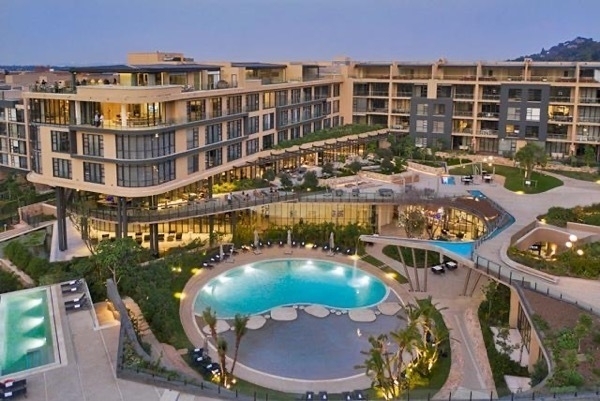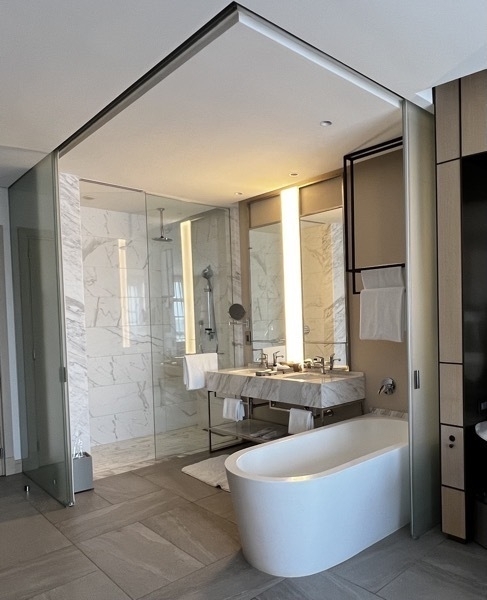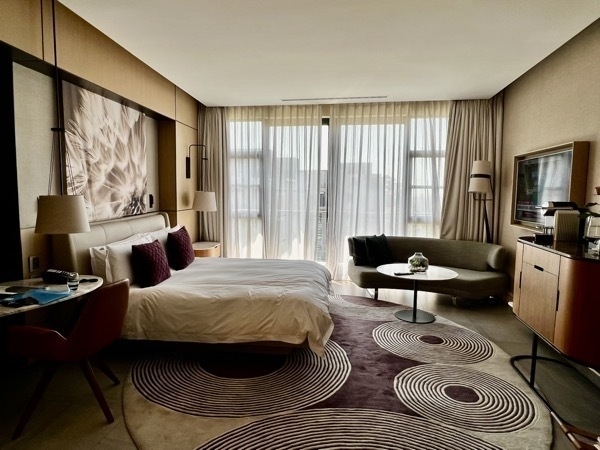-
Barbados
Barbados
Although the Caribs, Arawaks, and Portuguese had all inhabited Barbados for certain periods, the island was completely unoccupied when the British first settled there in 1627. Gradual social and political reforms led to the country’s independence in 1966.
The easternmost member of the Caribbean, Barbados floats by itself, 100 miles east of St. Lucia. The capital city is Bridgetown which sits along the Caribbean Sea while the east coast faces the Atlantic Ocean. Barbados is below the hurricane belt.
Population is 286,641
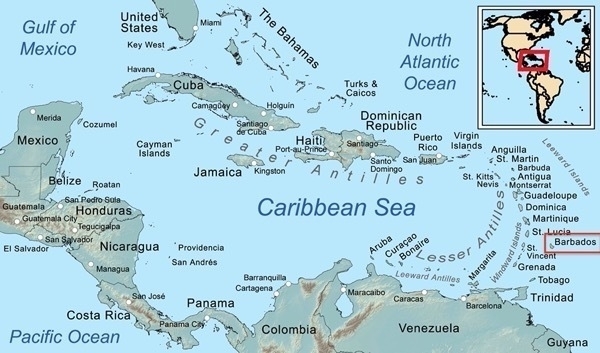
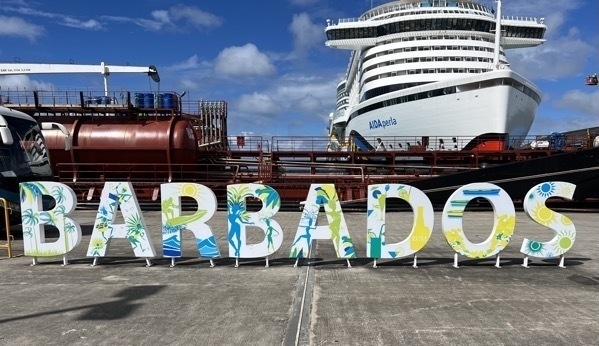
Today’s excursion from the ship was to a Botanical Garden on the island . Along the way we passed some cows tied up in the yards of upscale homes.
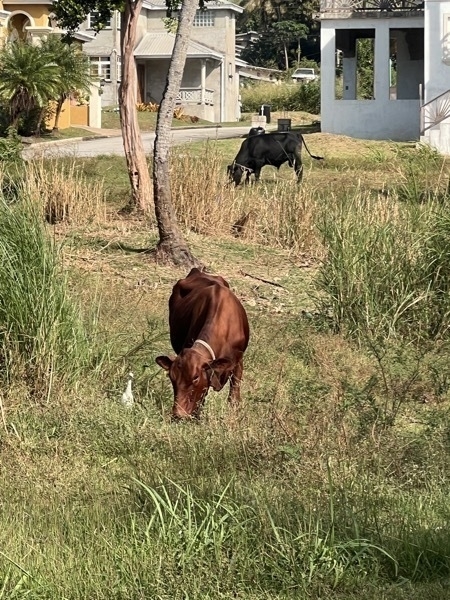
We were supposed to be seeing 100s of different orchids at the gardens, but only a few survived after the COVID shutdown.
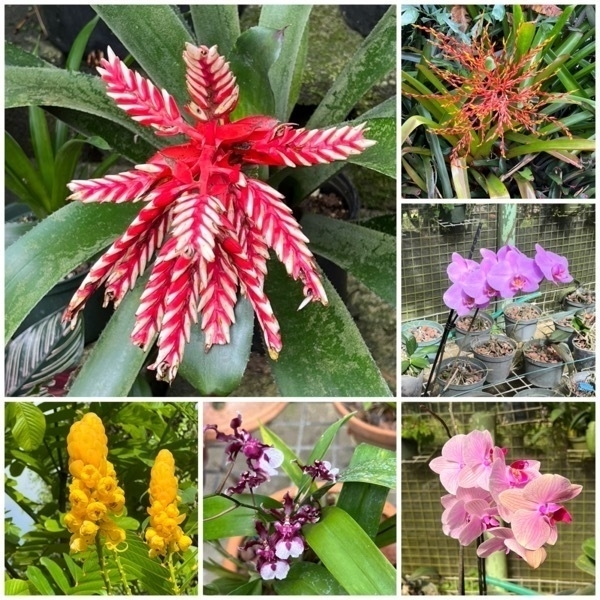
Our next stop after the gardens was the Sunbury Plantation Great House which was built in 1660 by Matthew Chapman, an Irish/English planter, one of the first settlers on the island. He was related to the Earl of Carlisle and through this association, was granted lands in Barbados.
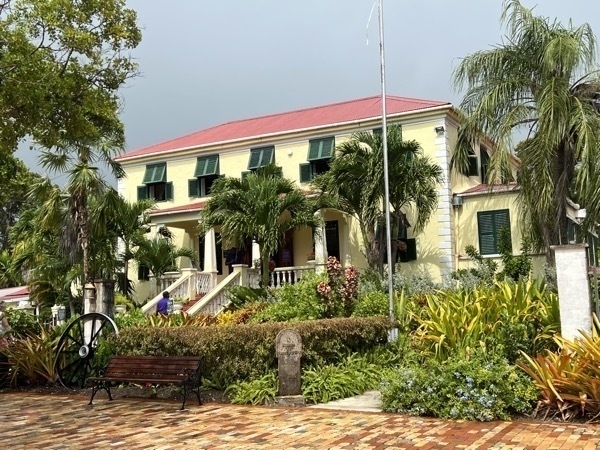
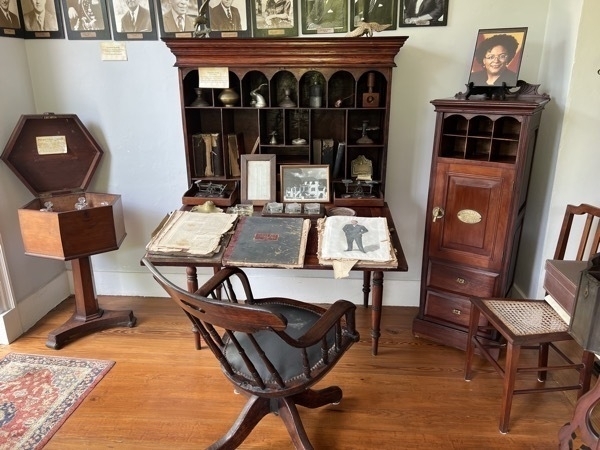
This office has the original furnishings for the owner’s office and where he kept the records for the plantation.
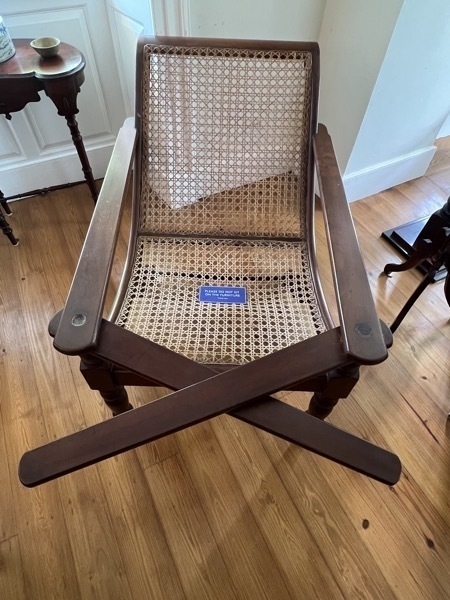
This is a lounge chair for the men
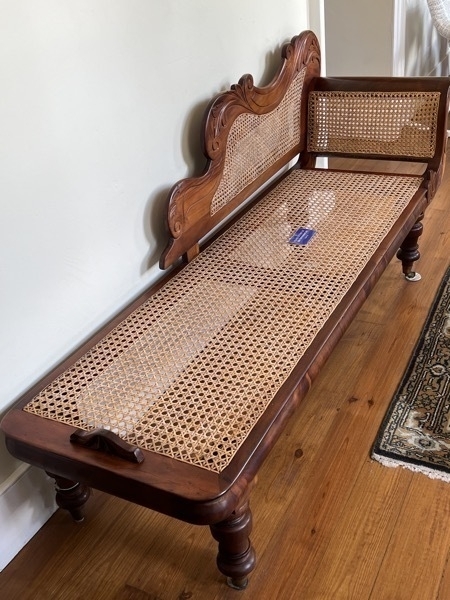
This lounge chair was for the ladies. Both chairs have bottoms made from sugar cane to make them cooler to sit in,
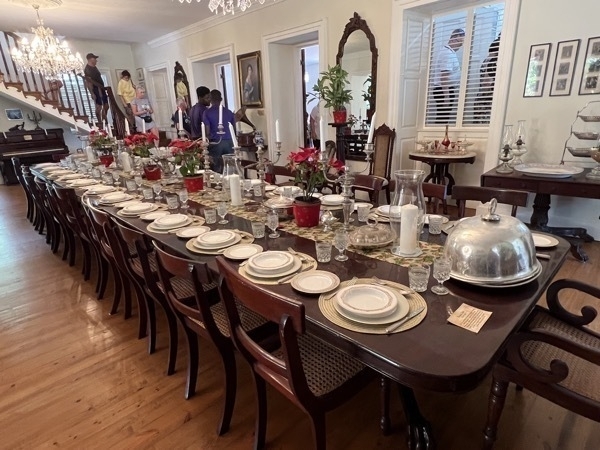
This table sits 26.
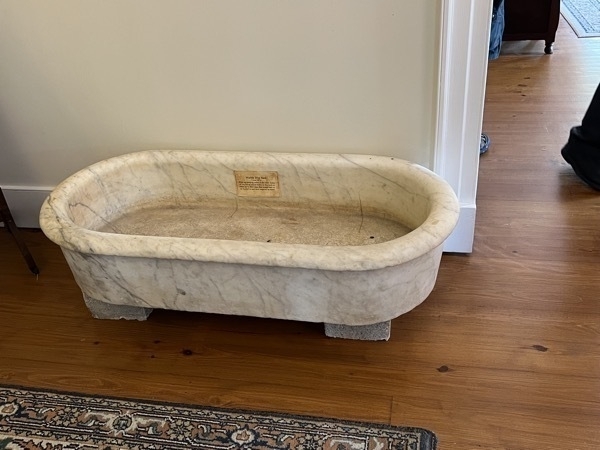
bathtub
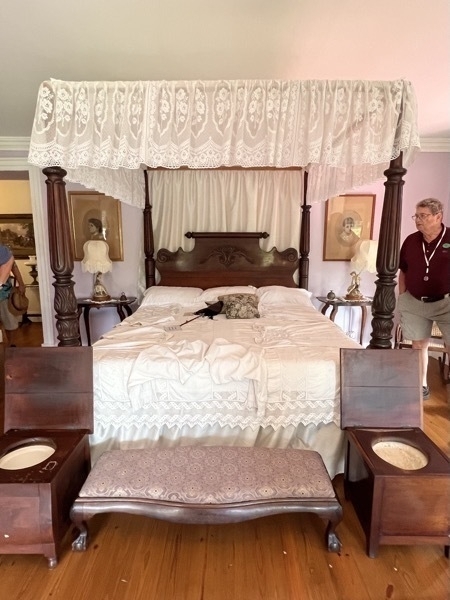
Master bedroom with his and her chamber pots
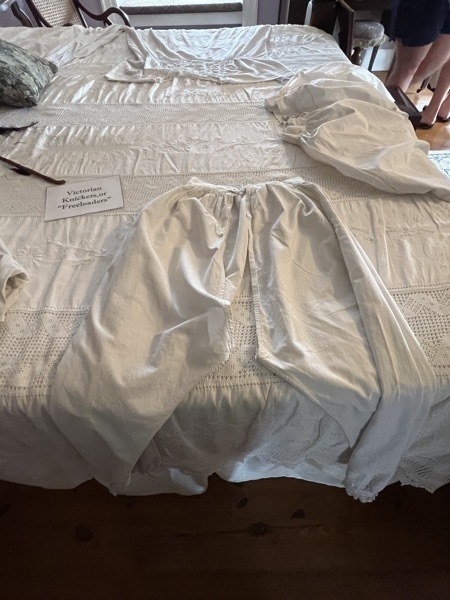
Men’s freeloader pants. Notice they are open from the crotch to the knee
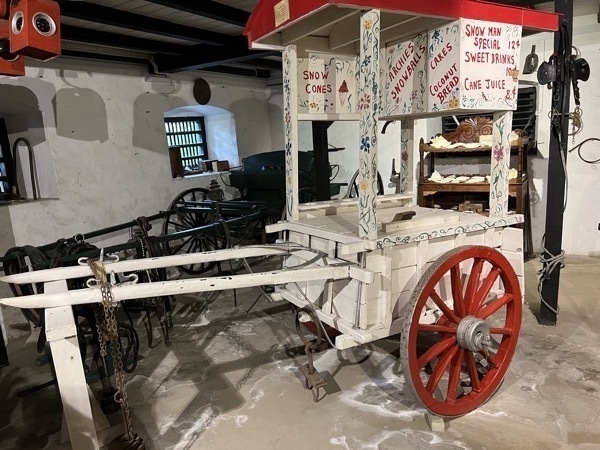
Horse drawn dessert cart
-
Saint Vincent
We went ashore this morning at 8:30 and took a bus tour across the island to Fort Charlotte, the Botanical Gardens and stopped for refreshments at Paradise Beach. It was colonized by the /French and English in the 19th century, but became an independent country in 1979. St. Vincent is located in the eastern Caribbean Sea between the island nations of Saint Lucia and Grenada. It has a population of around 100,000.
First stop was Fort Charlotte which was built in 1806. This historical Fort lies high above the island and offers panoramic views of Kingstown.
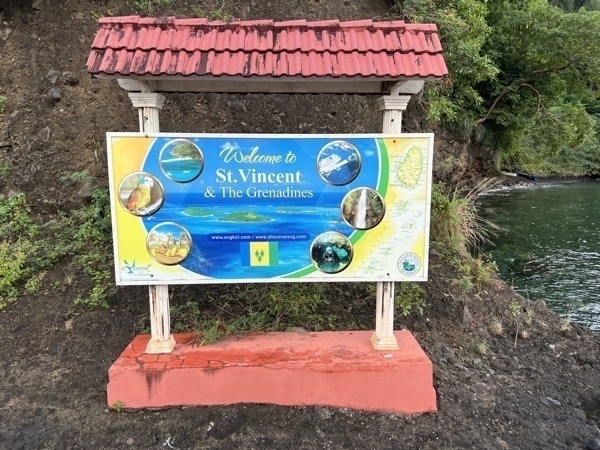
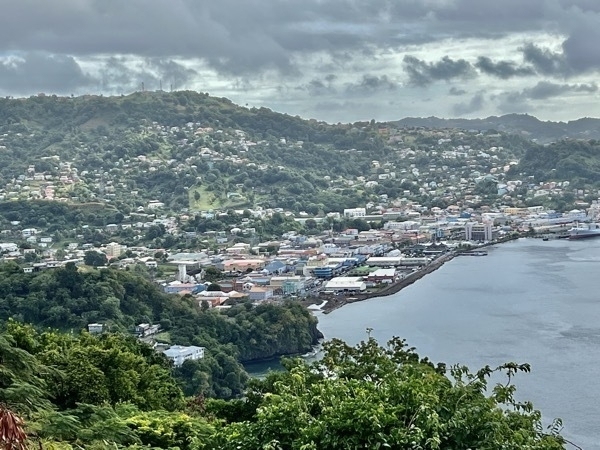
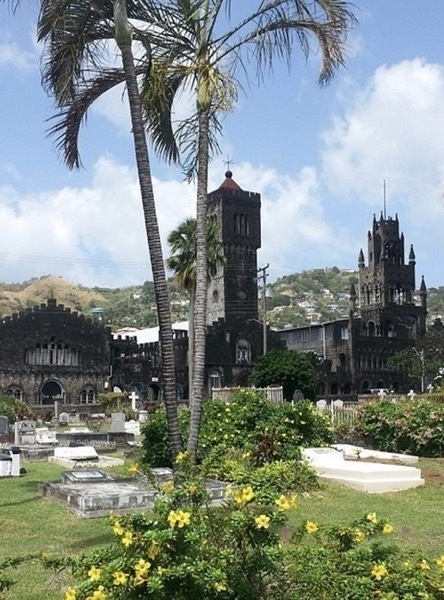
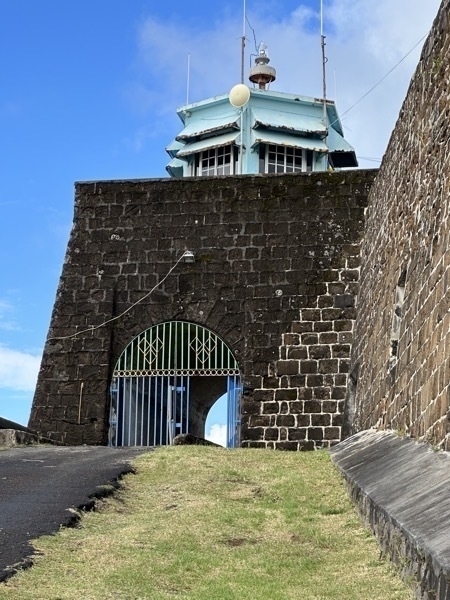
We walked up to the top of the hill to tour Fort Charlotte, that once housed 600 men . No battles were fought there.
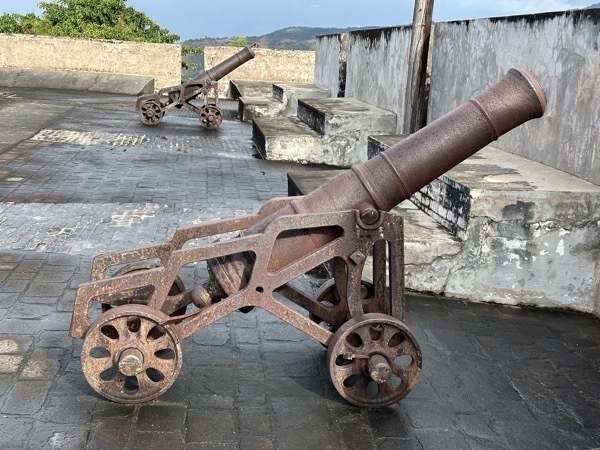
Botanical Gardens
We visited the St. Vincent and Grenadines Botanic Gardens in Kingtown, Saint Vincent. Establish in 1765, it is the oldest botanic garden in the western hemisphere ,
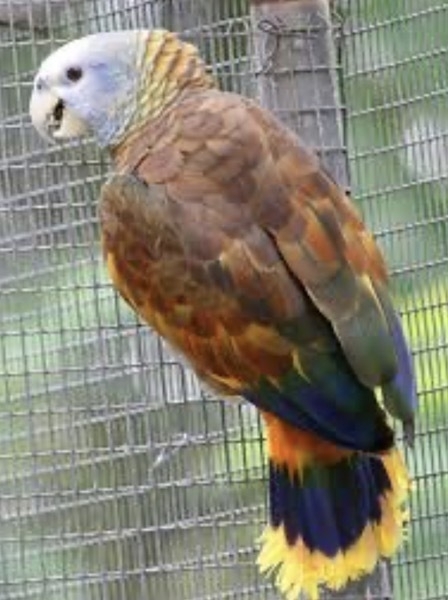
The Vincent African Parrot is the country’s national bird
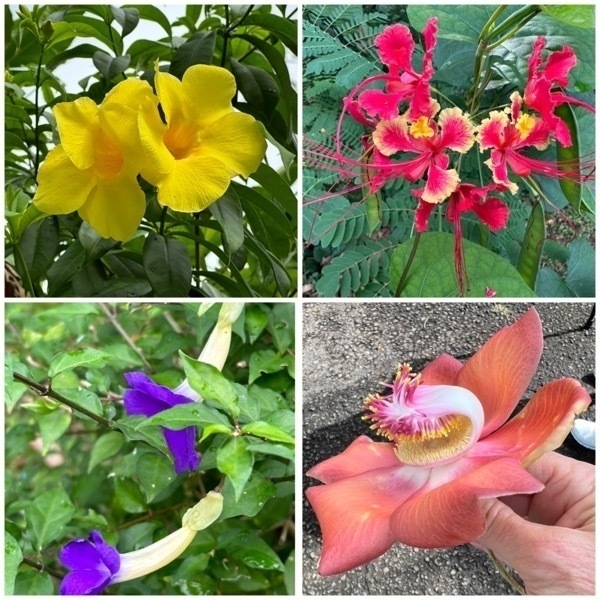
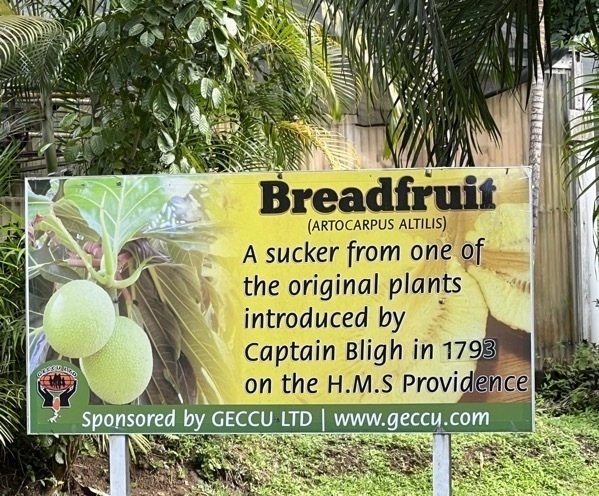
Breadfruit can be used in any way that potatoes are used.
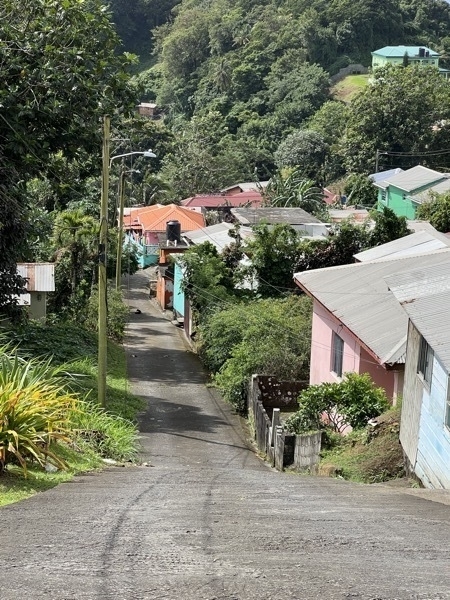
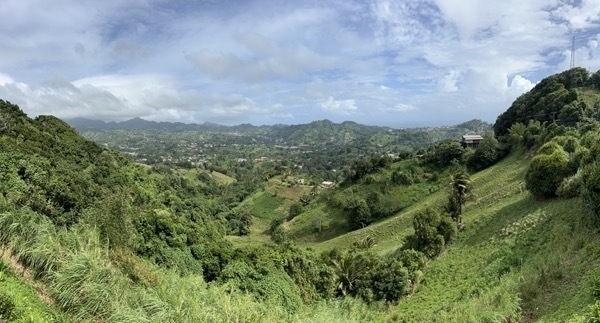
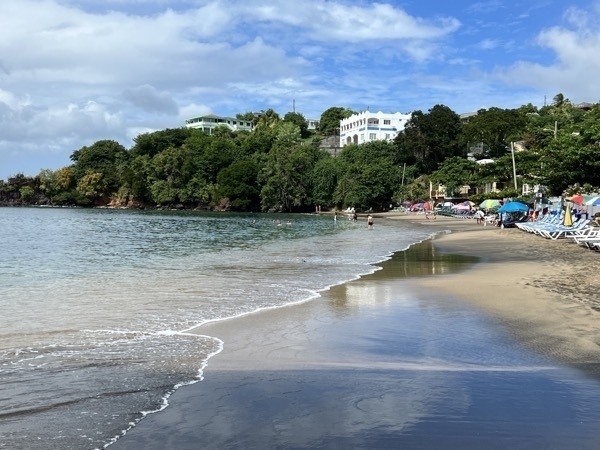
We ended the day at Paradise Beach Hotel where we were served rum punch.
-
Martinique
Martinique was first settled by the Arawaks followed by the Caribs, the island was charted by Columbus in 1493 and claimed by the French. With the exception of several British occupations, it has remained a French possession. It is overseas possession of France. We docked in the town of Fort-de-France, the capital and largest city.
Year round average temperature is 79 with only a five degree difference between summer and winter temperatures.
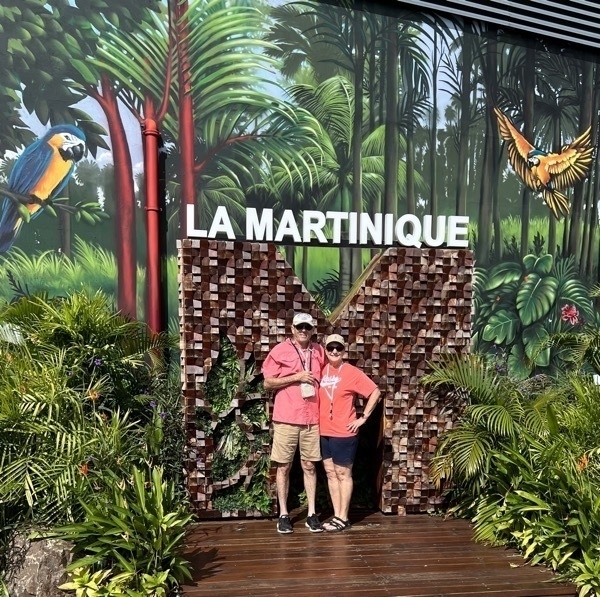
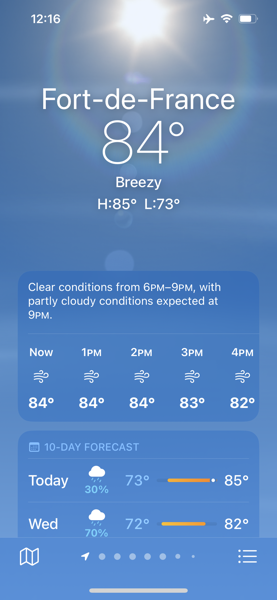
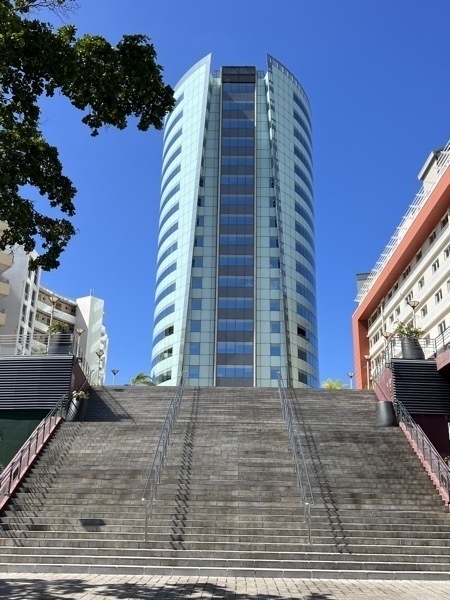
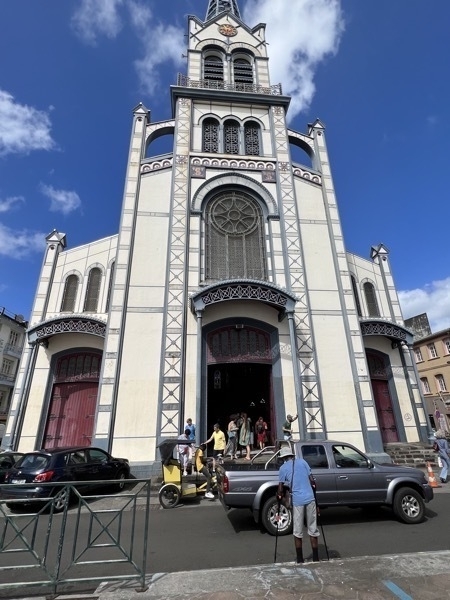
St. Louis Cathedral
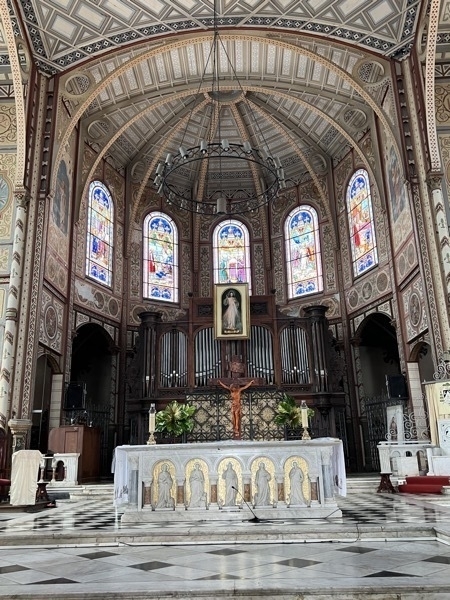
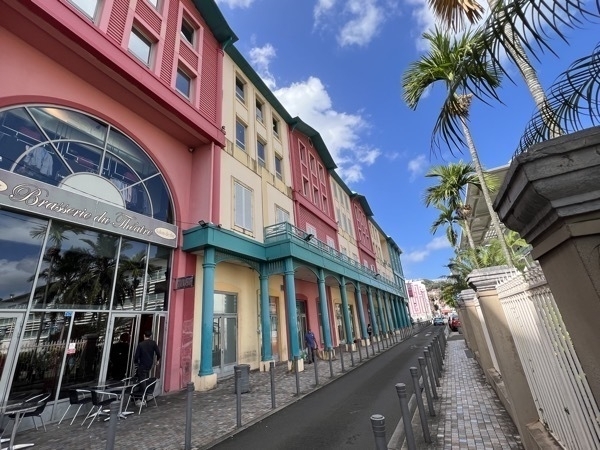
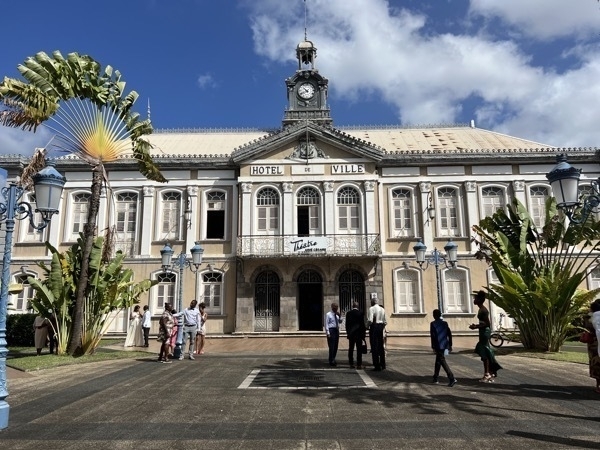
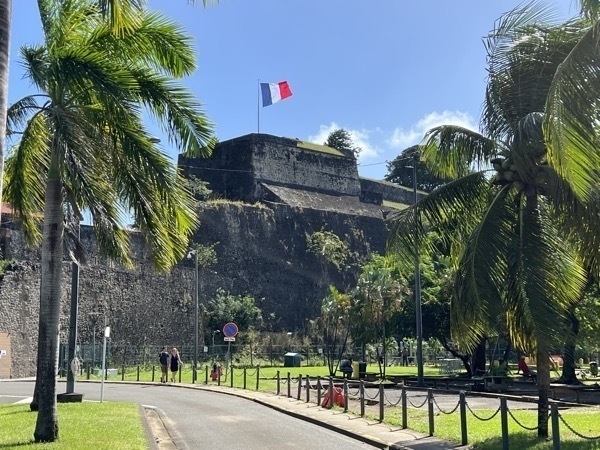
Fort St. Louis
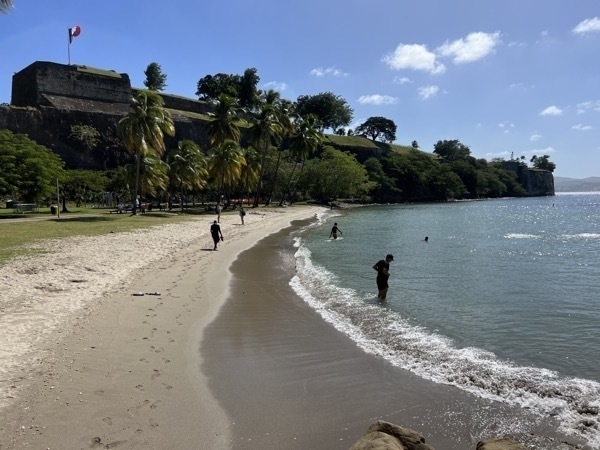
Beach beside Fort St. Louis
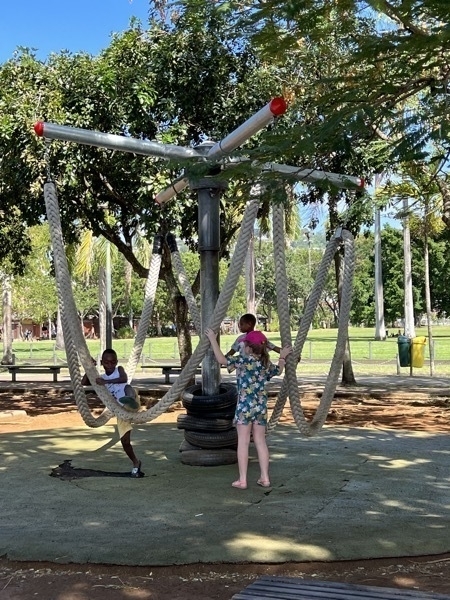
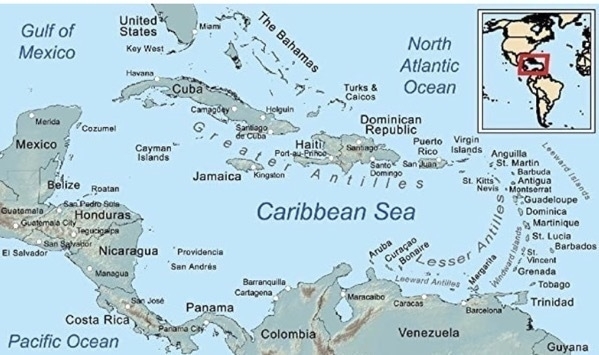
-
St. Kitts
Today we toured the island of St. Kitts, which along with the neighboring island of Nevis, became an independent two-island nation in 1983. The country’s official name is the Federation of St. Kitts and Nevis. It is located in the Leeward Islands of the West Indies southeast of Puerto Rico.
St. Kitts was the first island in the Caribbeans to be settled with residents dating back more than 5,000 years.
This two-island nation is the smallest in the Western Hemisphere both in are and population.
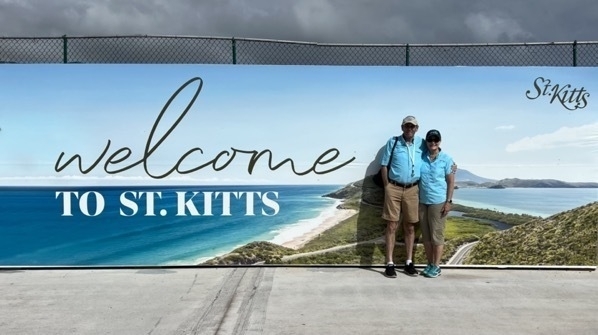
We took a bus tour to visit the Romney Manor (circa 1626). For more than 350 years, most of the activity on the property was growing sugar cane. When the St. Kitts government stopped sugar can production in the 2000s, Romney Manor became a batik enterprise.
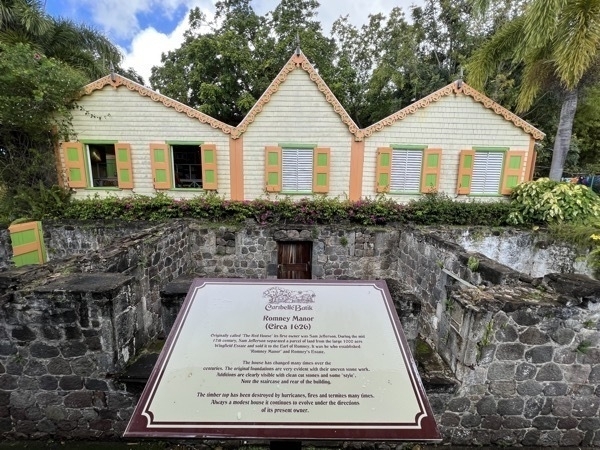
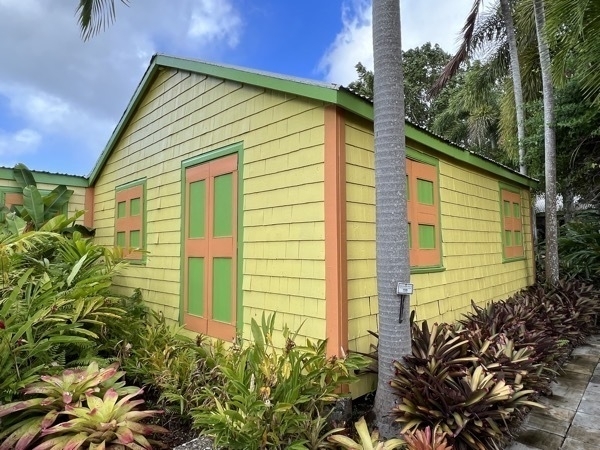
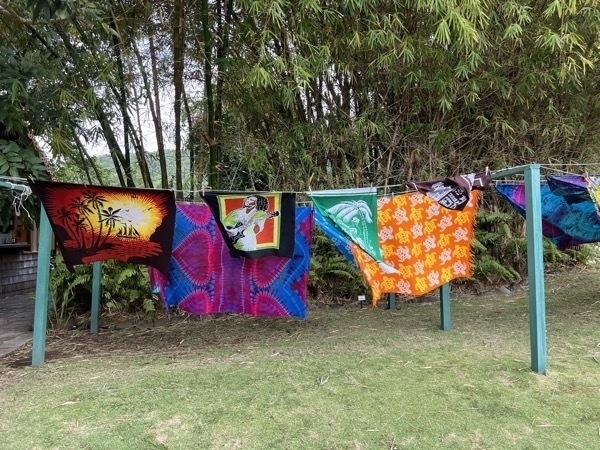
Batik creations hanging on the line.
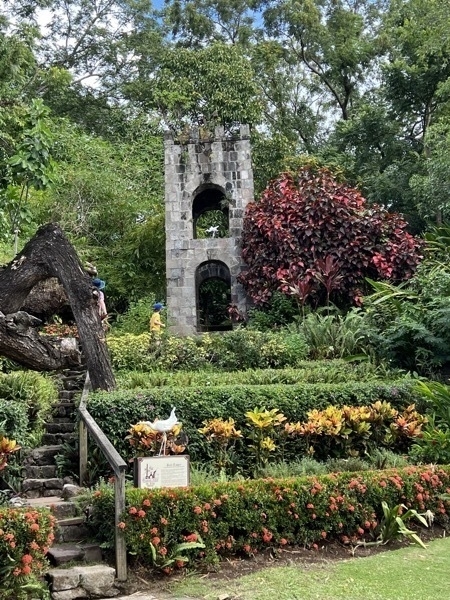
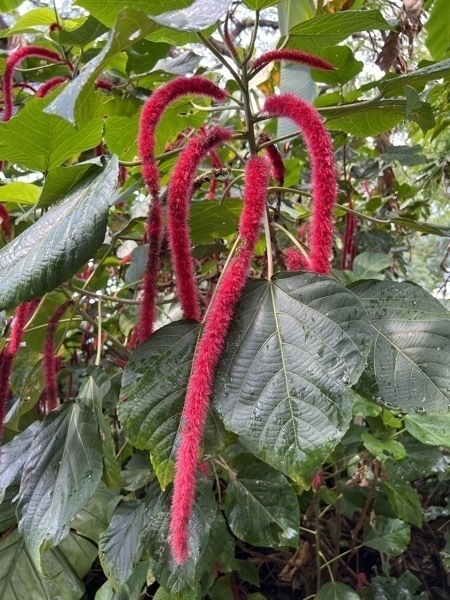
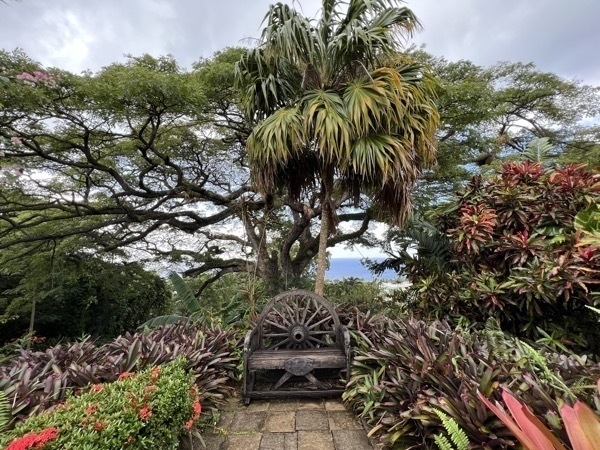
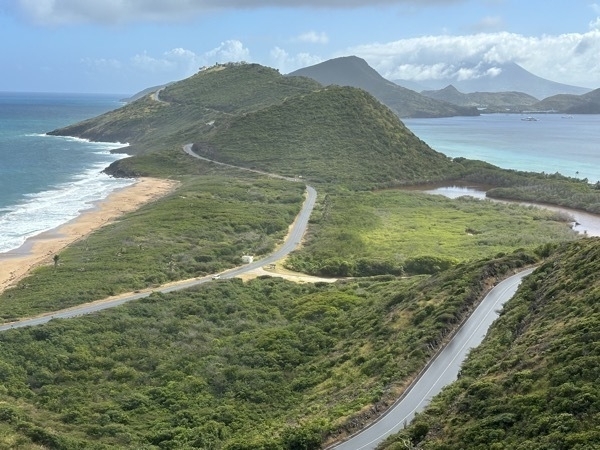
The Atlantic Ocean on one side and the Caribbean on the other
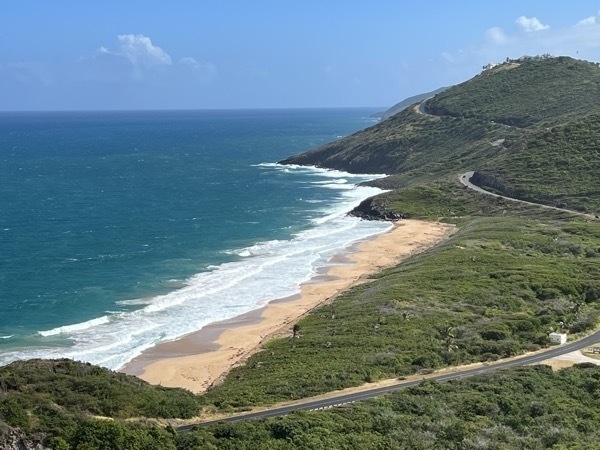
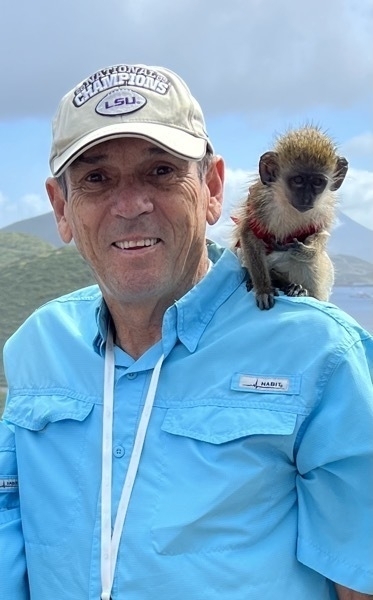
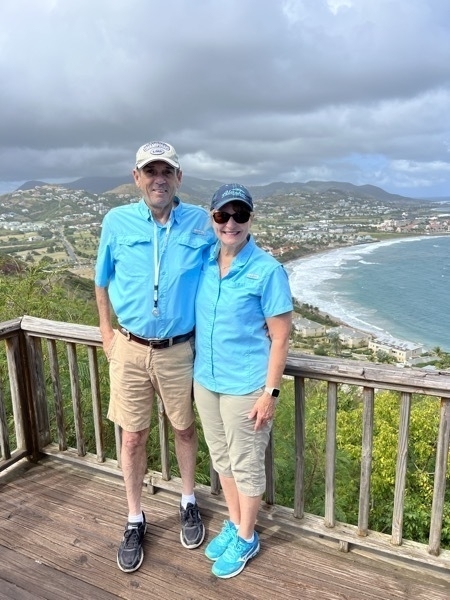
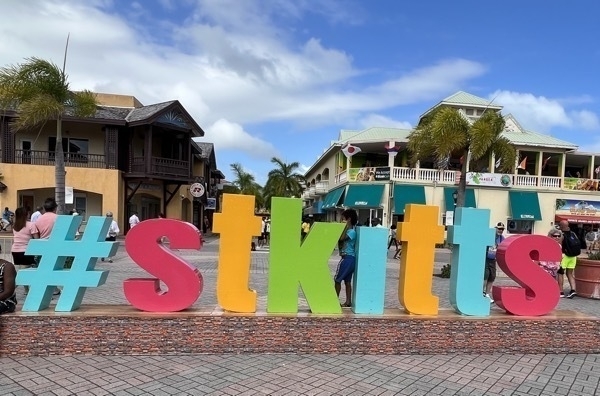
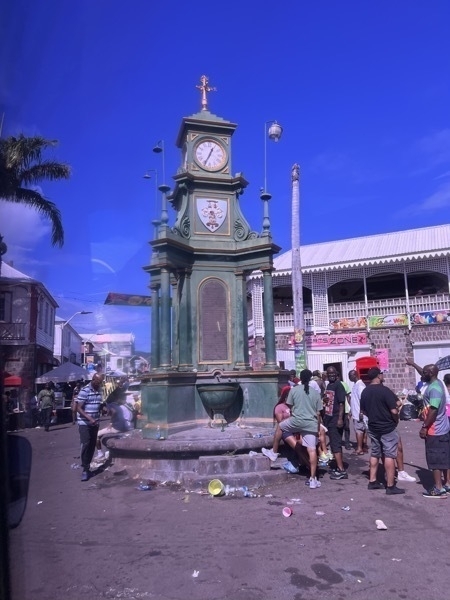
It was carnival time in St. Kitts. The parades started at 4:00AM and by noon the parades were over and the streets were filled with litter.
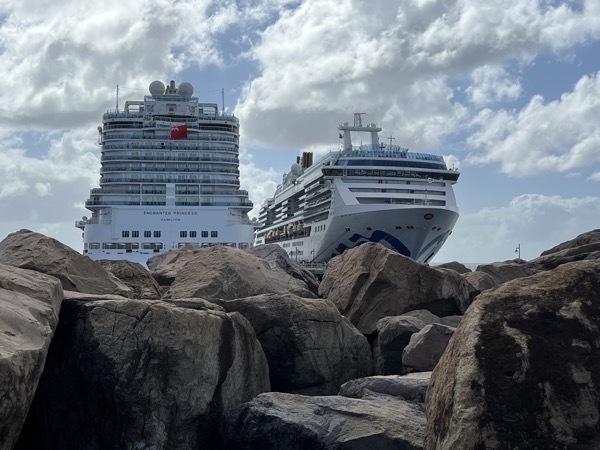 Cool picture of the boats beyond the rocks
Cool picture of the boats beyond the rocks -
St. Thomas and St. Johns Virgin Islands
Today the Island Princess docked in St. Thomas at 8:00AM. We walked off the ship and walked to the nearby stores to buy a Christmas tree ornament as a souvenir and took some pictures.
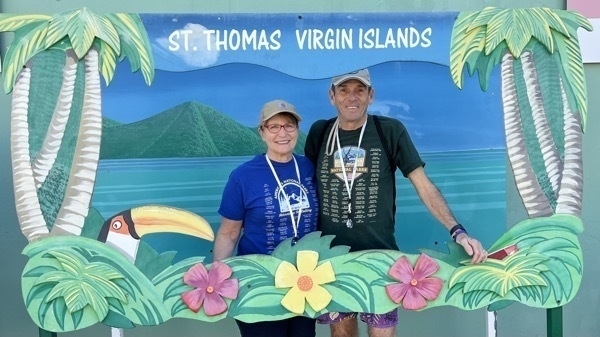
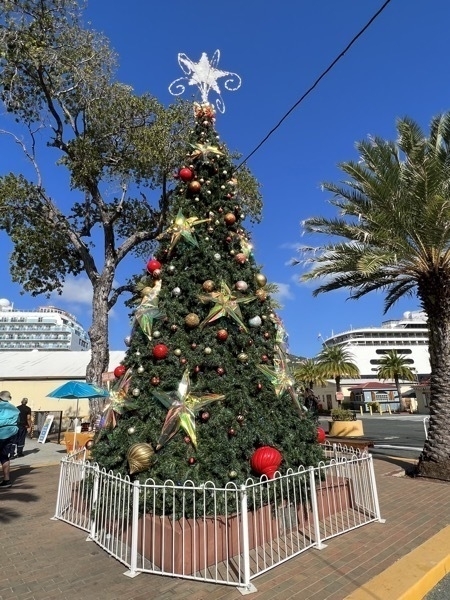
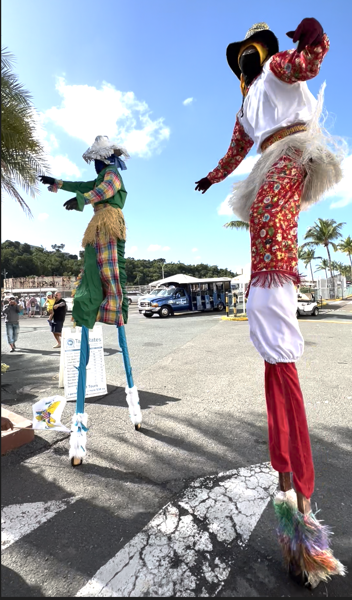
We were greeted at the shopping area by these talented dancers !
St. Johns Catamaran Adventure
We boarded the Dancing Dolphin Katamaran for a 45 minute ride to St. Johns Island and Virgin Islands National Park. This is our 56th National Park (out of 63). Once we were near the beach we rode an inflatable all the way onto the beach. We came ashore at Honeymoon Beach and spent an hour snorkeling in the beautiful water.
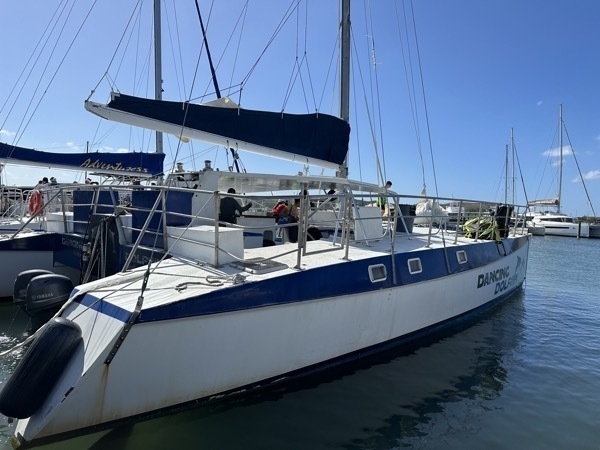
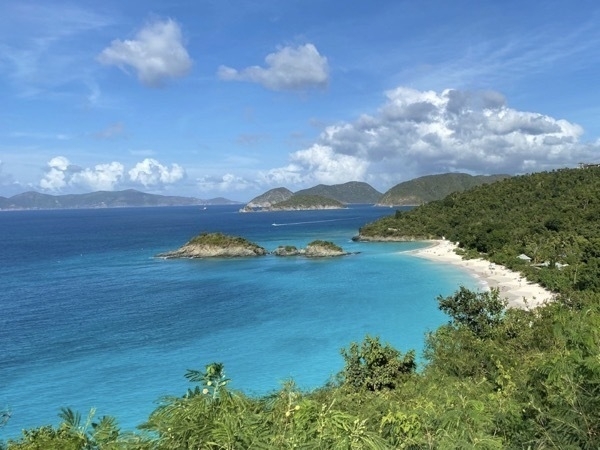
Beautiful view of St Johns
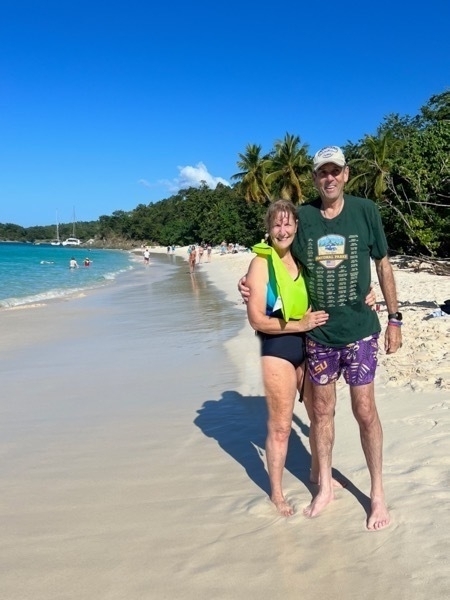
Honeymoon Beach, St Johns
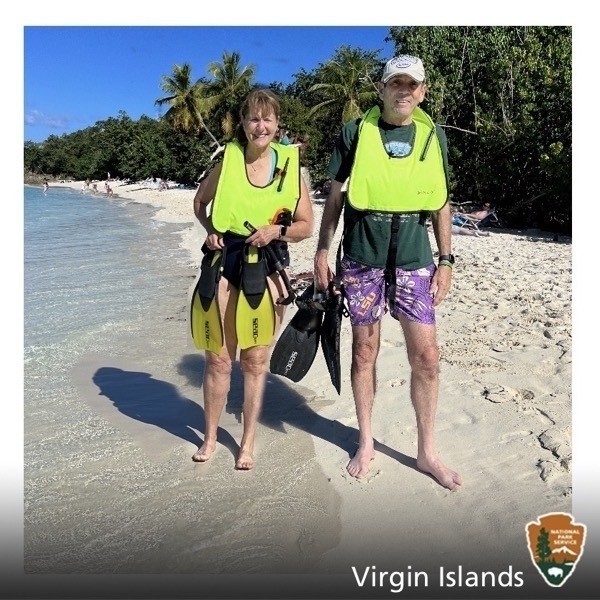
We snorkeled in the beautiful clear water
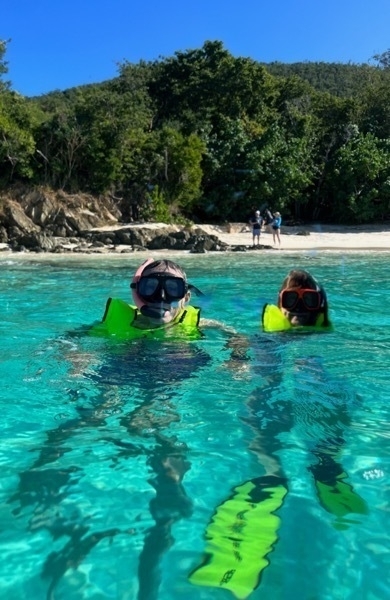
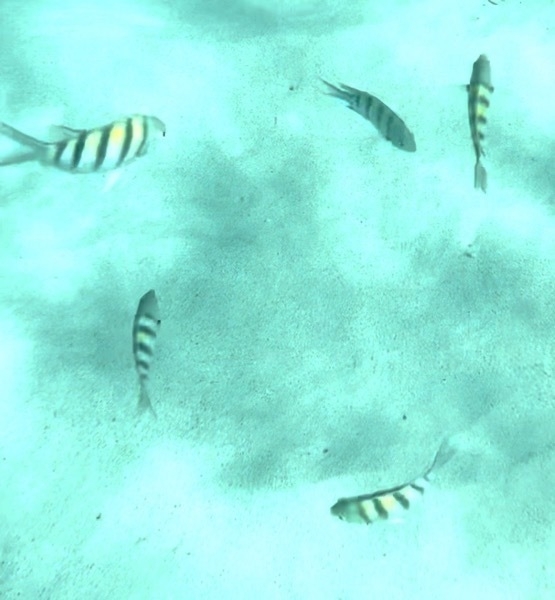
When we returned to the ship, there were some guest McCall and cockatoo birds onboard to greet us. What beautiful birds!
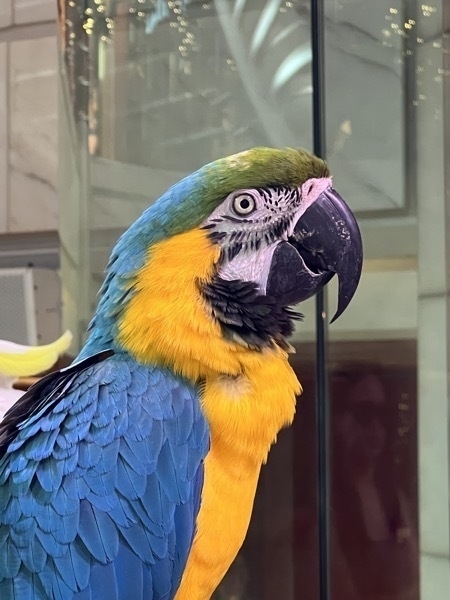
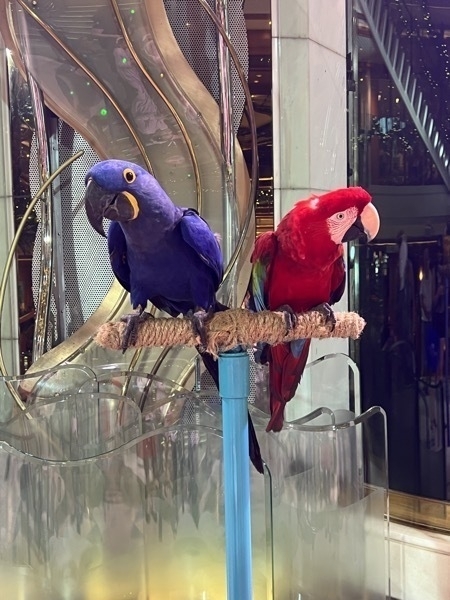
These two were hilarious! The owner would turn them towards us, but then a glass elevator would come down to that floor and the birds were turn around to see the elevator .
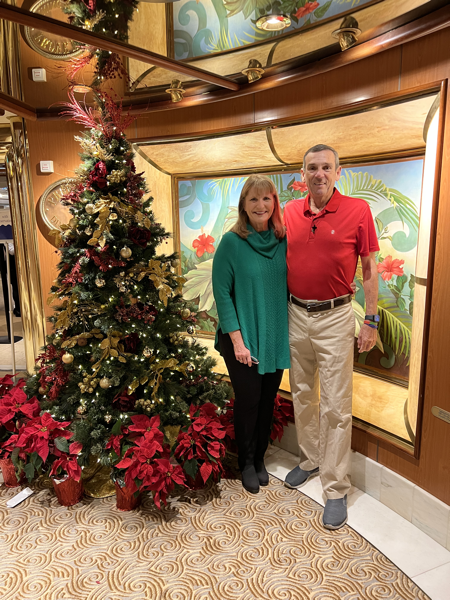
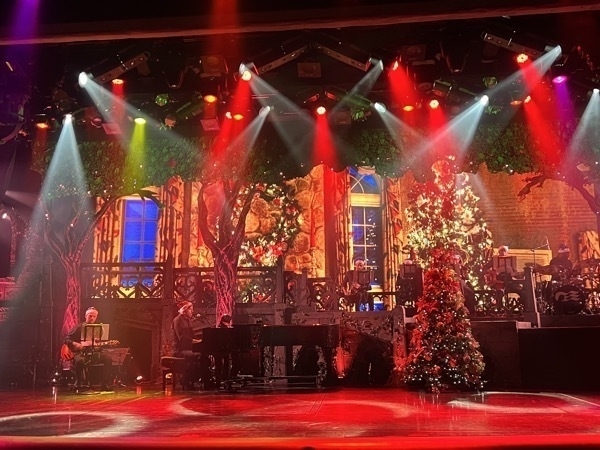
The cruise ship put on a fabulous Christmas variety show in the evening.
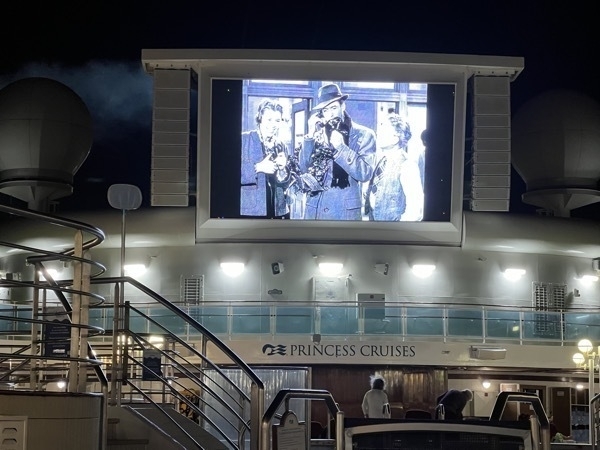
I finished the evening by watching It’s a Wonderful Life on the ship’s big screen tv on the top deck.
-
Hawaii Volcano National Park
We drove the Chain of Craters Road down to Holei Sea Arch and stopped to see many different craters and lava flow from previous eruptions.
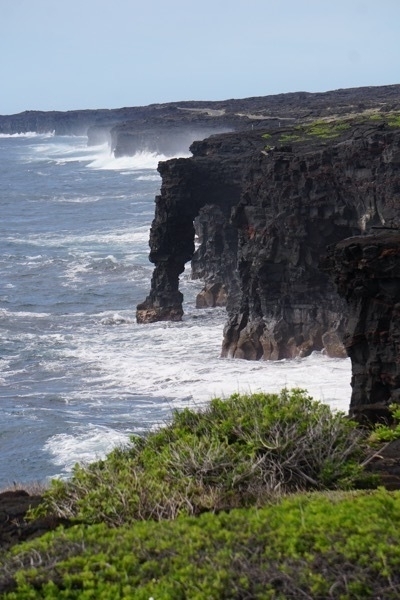
At the end of the Chain of Craters Road, we walked a short distance to see the Holei Sea Arch. This lava rock formation is about 90 feet high and extends from the steep sea cliffs into the Pacific Ocean.
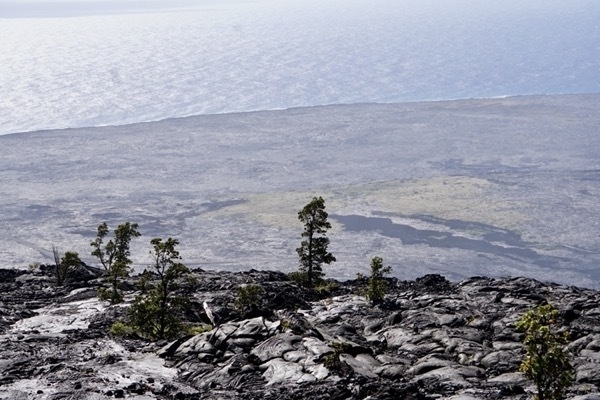
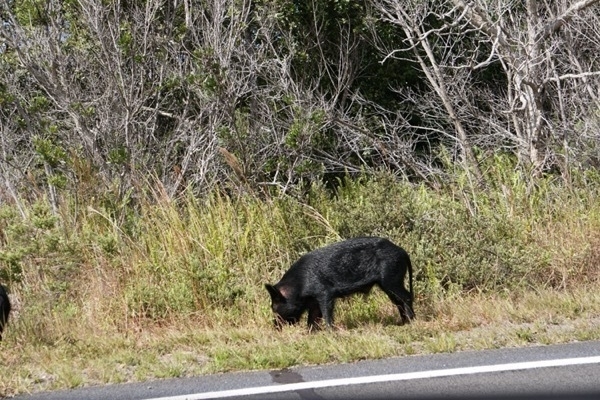
This picture shows lava flow above and the land below which extends from the Hilina fault.
We were told there are about six feral pigs to each person living on the Big Island and they are quite a problem to crops and vegetation. Dogs and fences help deter them.
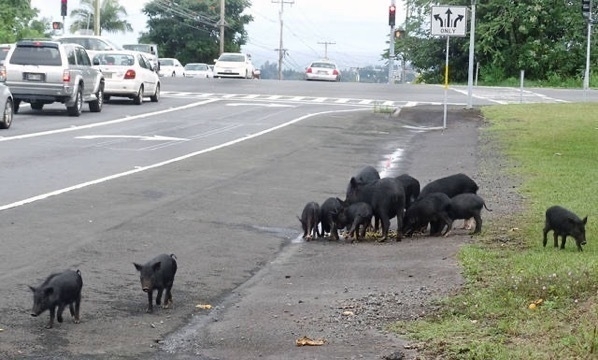
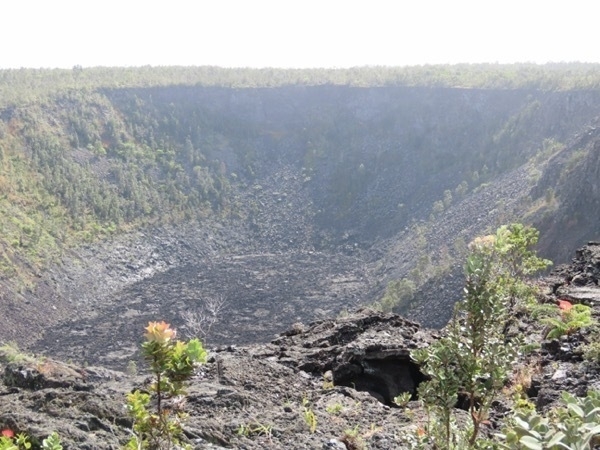
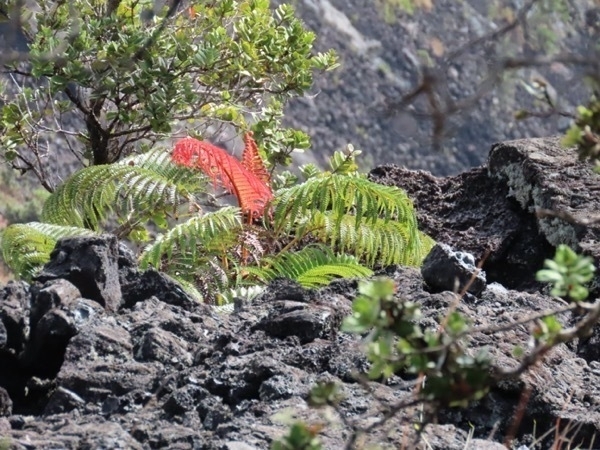
After a period of time crops make there way through the crack and start growing and blooming one again.
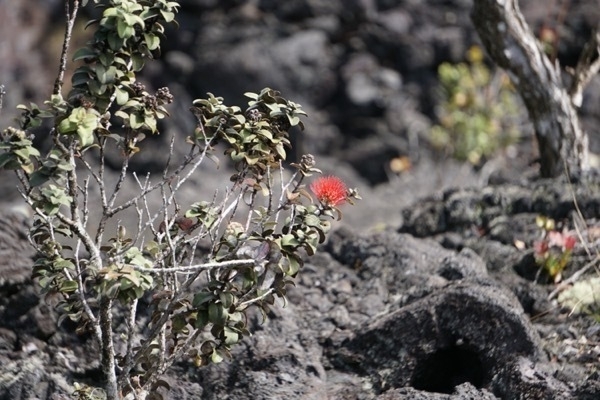
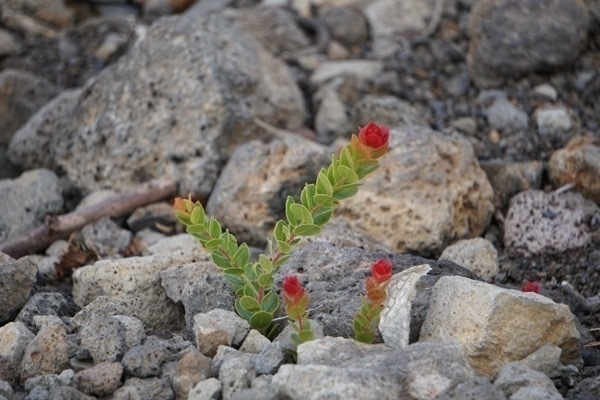
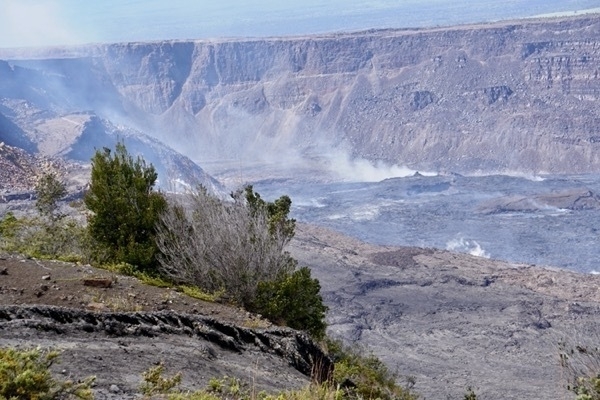
The Kilauea crater
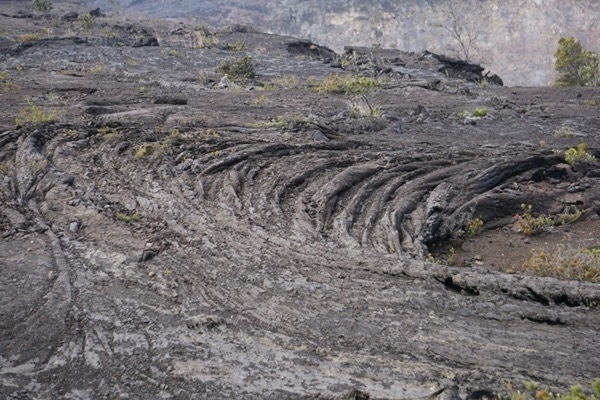
Hardened lava
We drive over to the backside of the Kilauea Volcano, parked the car and then walked two and a half miles to tee the craters
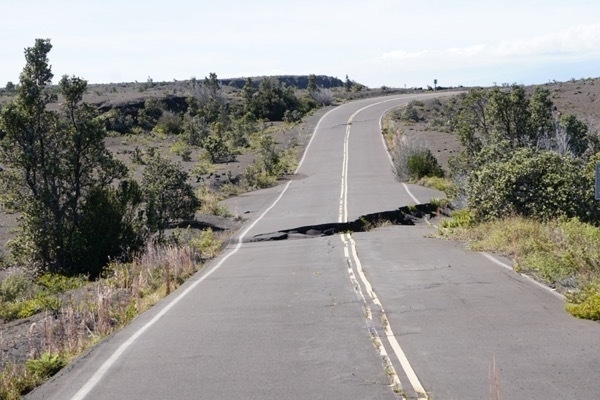
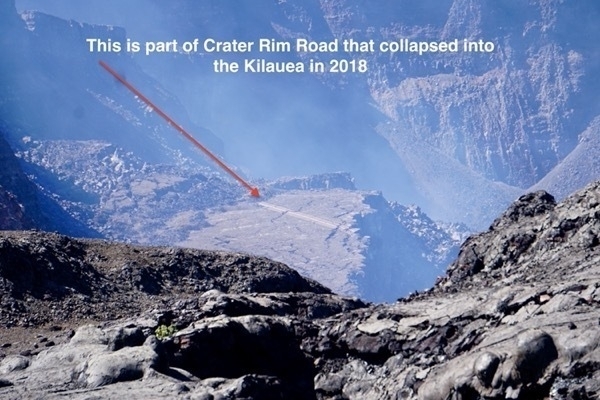
‘We ended the day back at the cabin watching War Horse, a wonderful movie,
-
Helicopter ride near Mauna Loa and a visit to Lavaloha Chocolate Farm
We took a helicopter ride with Big Island Safari Helicopters from the Hilo Airport in hopes of seeing Mauna Loa's eruption..
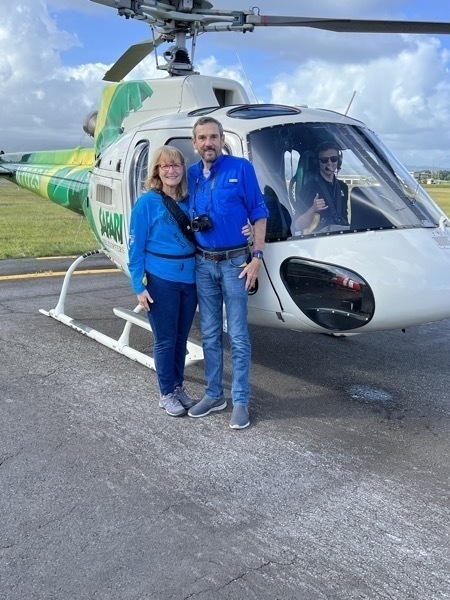
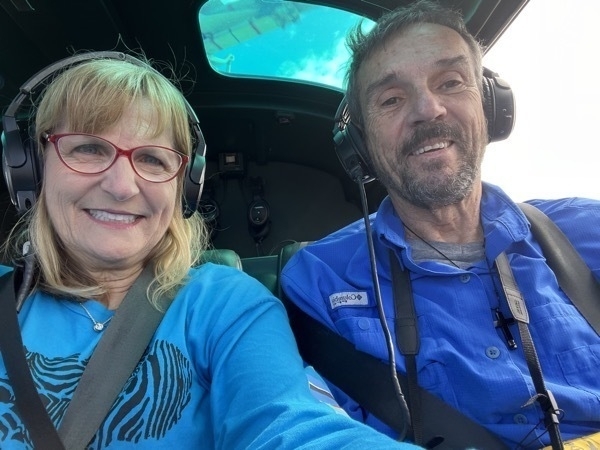
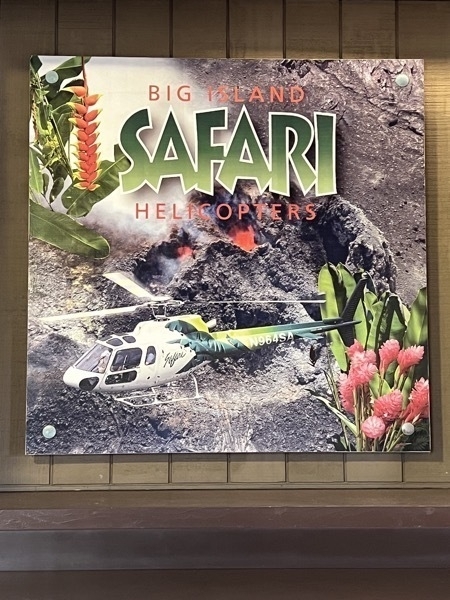
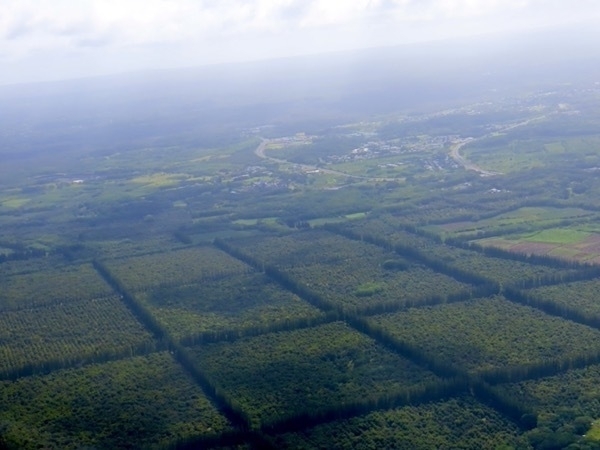
As we were leaving the airport, we flew over a macadamia nut farm outlined by the tall trees arranged in squares.
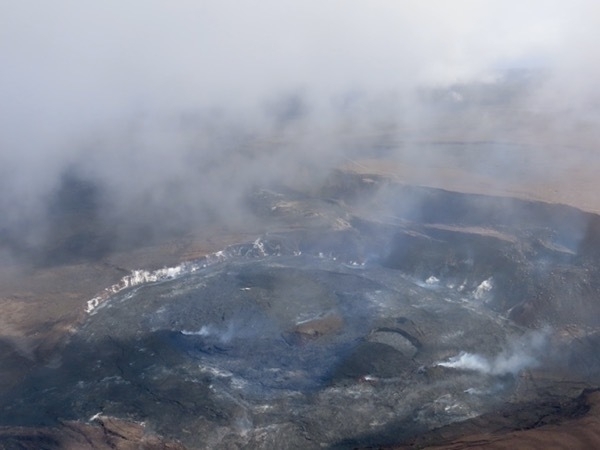
This is the giant Kilauea volcano. No lava was visible when we flew over; just lots of steam.
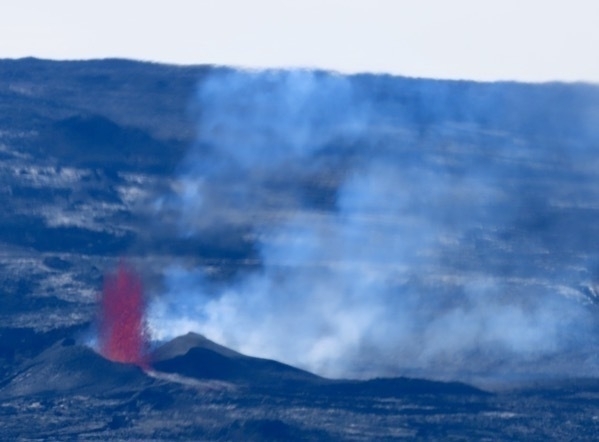
This is Mauna Loa erupting. We not on the side where we could see the lava flowing down the mountain, but we were told this lava was shooting 500’ in the air. Obviously we weren’t close enough to get roasted, but it was an incredible site to see!
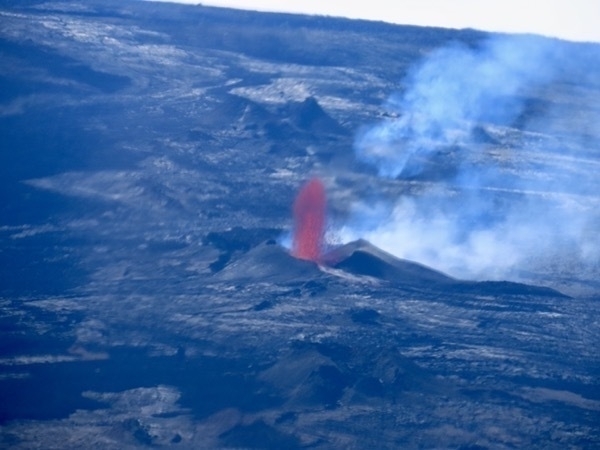
Lavaloha Chocolate Farm
Afterwards we drove to a chocolate where we were driven through the orchard and then shown how the chocolate if made.
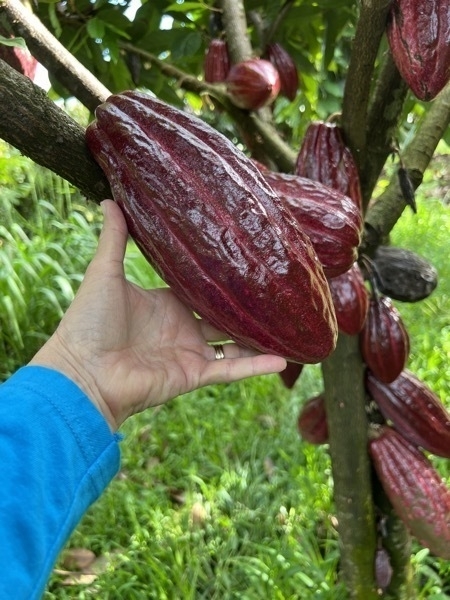
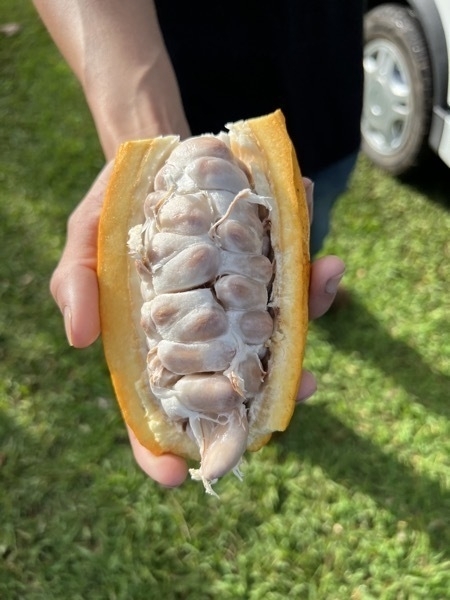
Ripe pods are picked and cut open. Sees, or “beans” and juicy white pulp are stopped out of the husk.
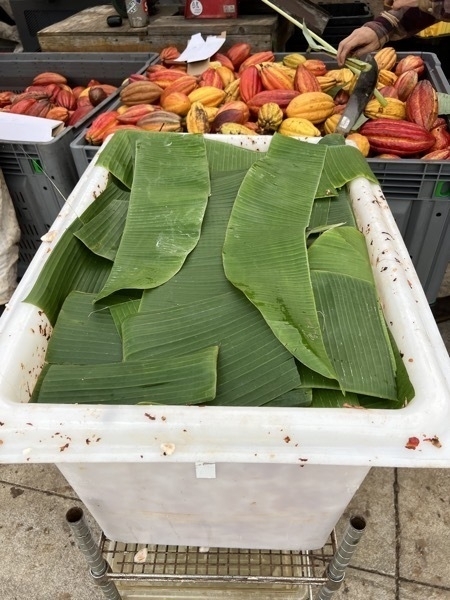
Beans and pulp are put into large containers and fermented for about 7 days. The beans are turned about
once per day. Then the beans are gently roasted. This is where they start to develop chocolatey flavors and aromas.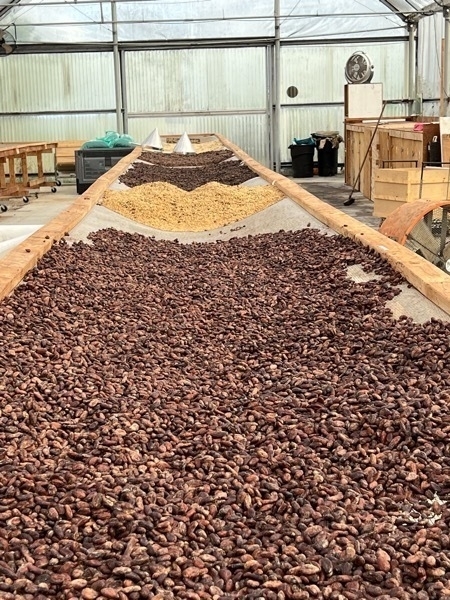
Winnowing: The beans are then cracked open and their thin, papery shells are blown away with fans, leaving “cocoa nibs."
Grinding: The cocoa nibs are ground into "cocoa liquor” a paste that can be pressed to separate the cocoa powder from cocoa butter.
Conching: the cocoa liquor is refined and smoothed in a conch. Sugar, milk, and other flavors are added.

Rainbow Falls
After we left the chocolate farm we drove to Rainbow Falls. Luckily, the falls were located by a parking lot because it started pouring down rain right when we got back in the car.
.
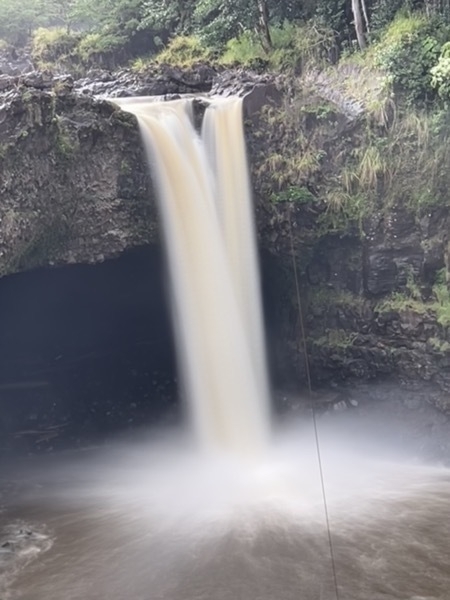
-
The Big Island - Green Sand Beach, Black Sand Beach, Hawaii Volcano National Park
Papakōlea (Green sands) Beach
We started today by driving from our Air B&B in Pahala to a parking spot for Papakōlea Beach (commonly known as Green Sands Beach). This was a 5.5 mile roundtrip hike and although it was not a particularly hard hike, the ground was muddy in places or covered with volcanic ash and uneven, and the winds were very strong. The whole way there we were walking into the wind. When we started the hike early and there was only one other car in the parking lot when we arrived. As we hiked toward the beach and the time got later, we were passed by many sets of younger more energetic hikers.
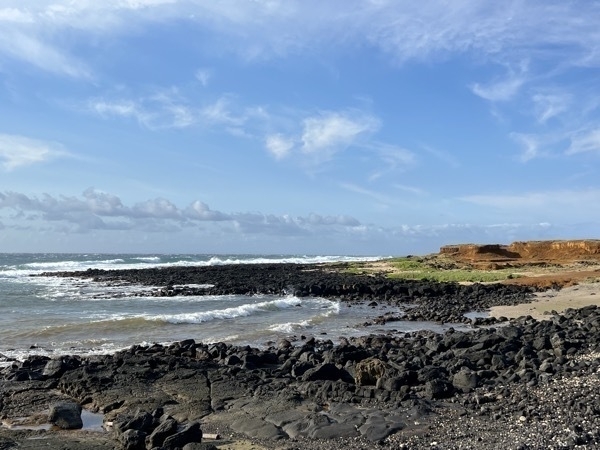
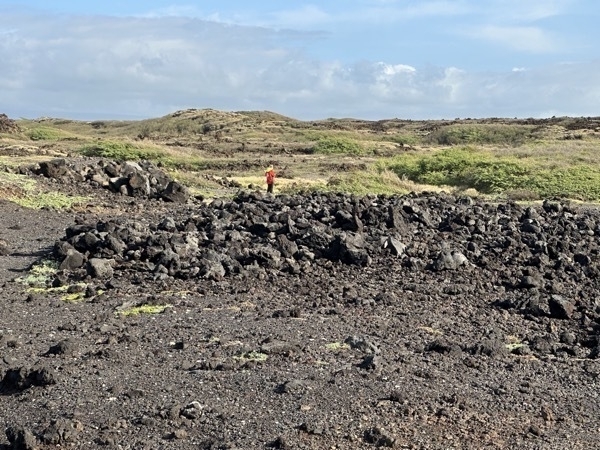
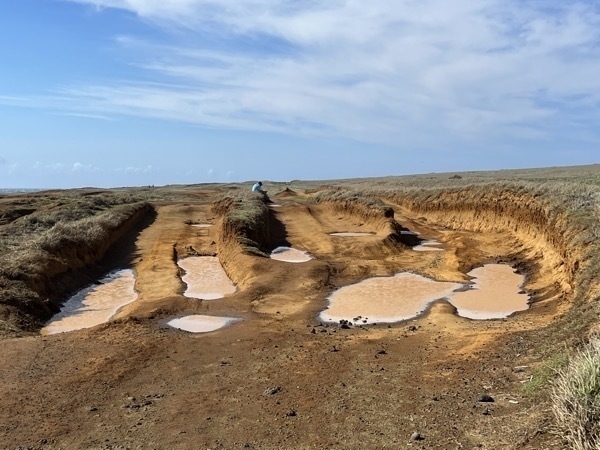
This is the point where Tom had to stop and rest and I continued hiking alone.
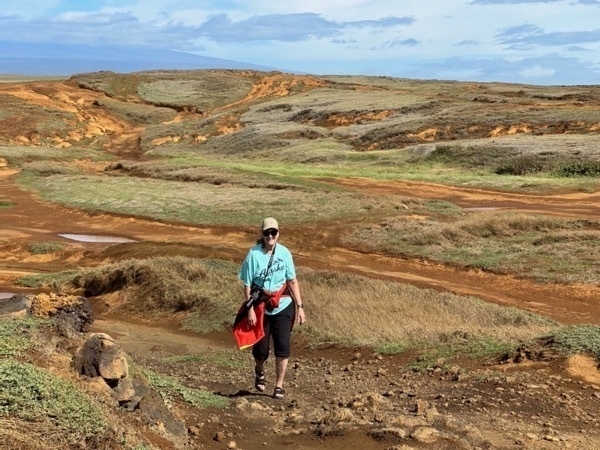
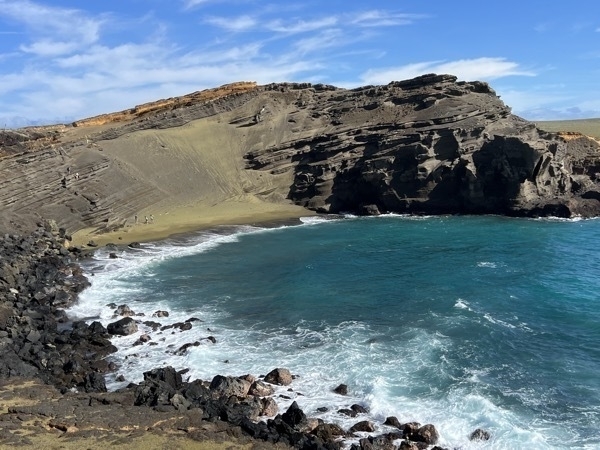
This is the Green Sand Beach which gets its name from the green olivine crystals that make up the sand. The crystals come from the cinder cone next to the beach which was formed during an eruption 49.000 years ago. Notice how steep the decline is to the beach. Since Tom had to stop hiking about a mile before the end and I was by myself, I didn’t even attempt to go down that steep hill onto the beach.
After we walked back to where we parked the car we realized there were pick up trucks giving rides there and back (illegally). If we had known that at the beginning, Tom would have hiked to the beach and paid the $10 for a ride back to the parking lot (I probably would have too).
Punalu’u (Black sands) Beach
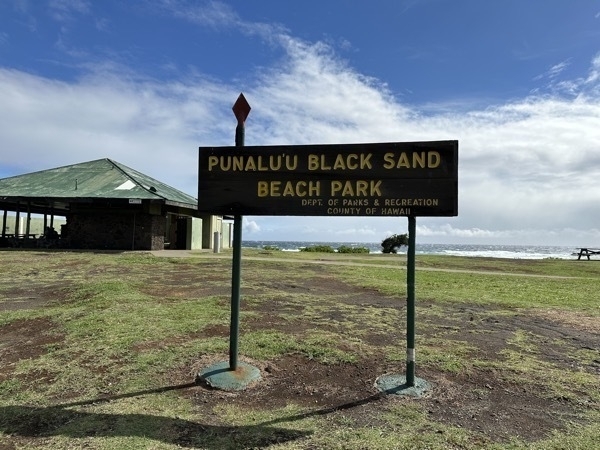
Our next stop was a Punalu’u Black Sand Beach Park. The black sand is made of basalt and created by lava flowing into the ocean which explodes as it reaches the ocean and cools.
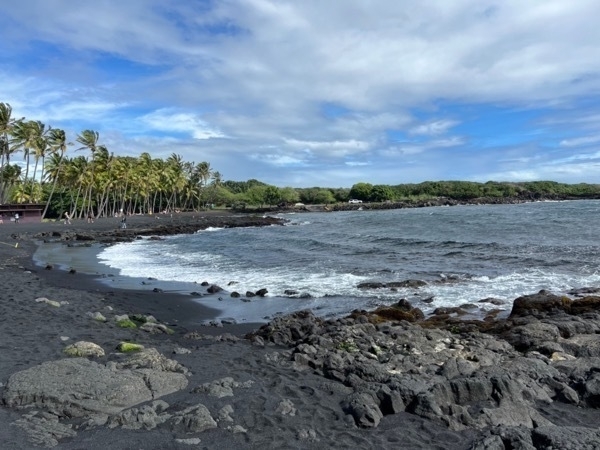
An unexpected discovery when we arrived at the beach was fifteen or so green turtles. The threatened green turtle feeds on marine plants in shallow waters along the coastline. Red seaweed, a favorite food of the green turtle flourishes on the coral-encrusted rocks in the shallow waters of the bay and the turtles are found basking on the black sand beach despite the presence of beachgoers. Visitors must remain 20 ft from the turtles at all times.
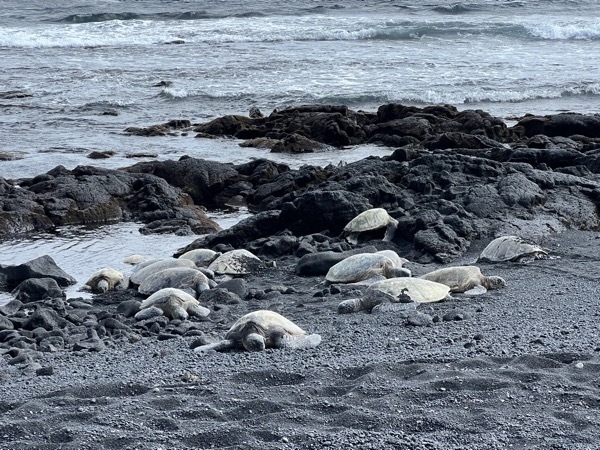
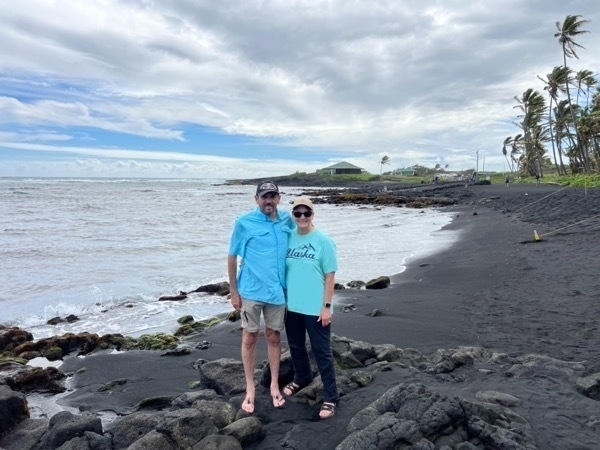
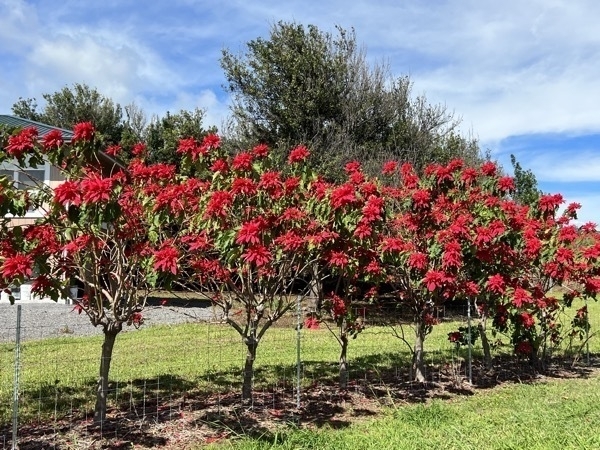
While driving from Black beach to the National Park, we passed theses beautiful poinsettia trees.
HAWAII VOLCANOES NATIONAL PARK
We planned this trip back in July so we could tour our 55th National Park (out of 63) and here we are!
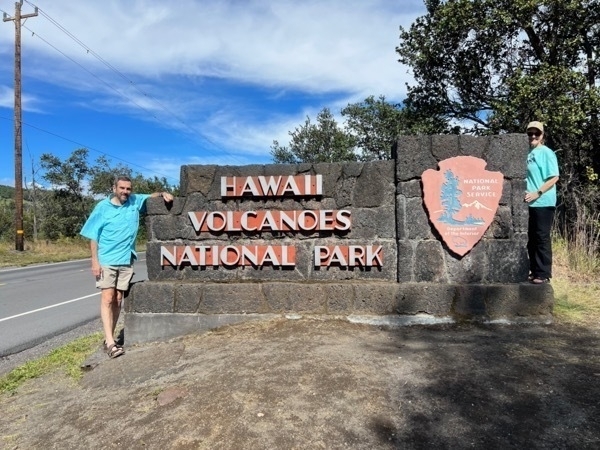
Our first stop was the Kilauea Visitor Center. We walked across the street from the visitor’s center to the Volcano House where we enjoyed a delicious lunch. We had hoped to see the Kilauea Volcano from the big windows in the restaurant, but unfortunately, there was a total fog out and there was nothing to see.
After lunch we drove to the Thurston Lava Tube parking area. The Thurston Lava Tube, one of many such tubes on the island, was created by a river of molten lava. According to the NPS website, “When a lava tube is active, lava travels along its floor at temperatures that exceed 2,000º F. When the supply of lava stops at the end of an eruption, or if it gets diverted elsewhere, it leaves behind an empty cave. When this lava tube was discovered in 1913, the roof of the tube was covered with lava drippings. Unfortunately, those soon disappeared due to souvenir collectors.”
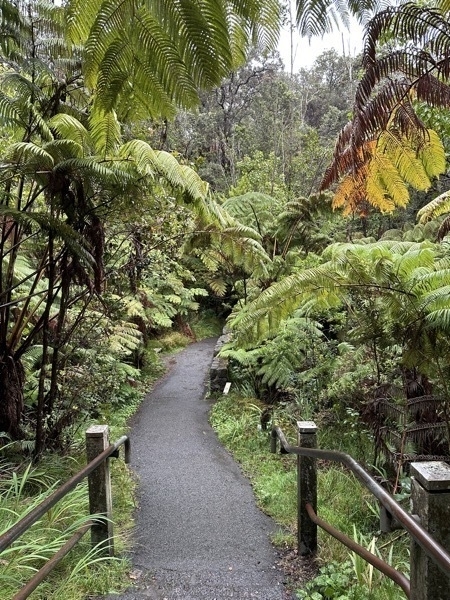
We walked down a steep path through a tropical forest to get to the entrance.
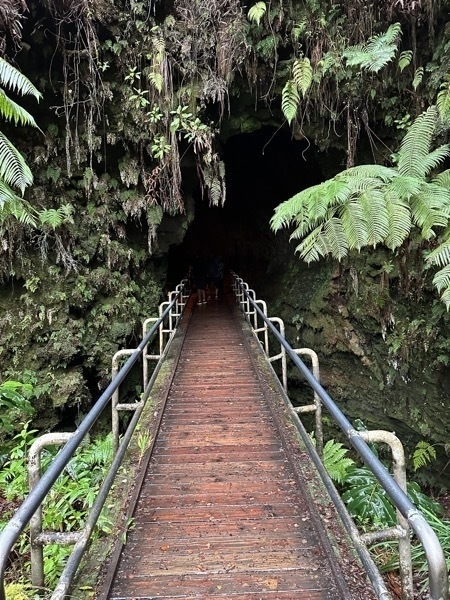

Inside the Thurston Lava Tube
Mauna Loa Volcano
After walking over 7 miles today, we were exhausted and decided to drive back to our Air B&B and take a nap. At 7:00PM we left again to eat some dinner and then drive towards the Mauna Loa Volcano in hopes of seeing the lava flow. It was 52 miles one way and took us almost 4 hours to drive there and back. The traffic wasn’t bad until we reached mile marker 34 on Rt. 200 where we joined the long line of visitors who also wanted to see the lava flow.
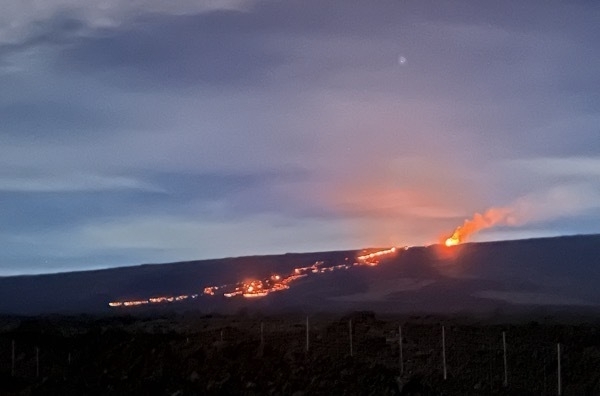
Although we didn’t have a tripod or a good zoom lens, it was very exciting to be able to see the lava flow!
-
Flight Home from Cape Town
We left the hotel at noon for our transfer to the airport. We left Cape Town at 5:39 pm for a 10 hour 15 minute flight to Istanbul, had a 9.5 hour layover, then a 13 hour flight to Houston. Long two days! Once we landed in Houston we were about to walk right through customs with Global Entry, but it took over an hour for our luggage to arrive. By the time we drove back to Lake Charles it was 1:30 AM. A very long two day journey.
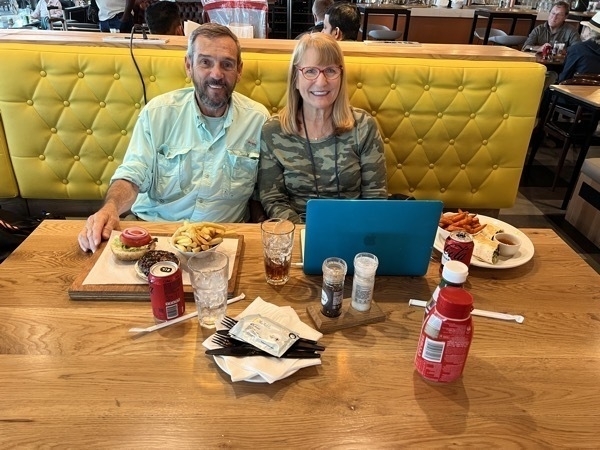
We enjoyed lunch at an airport restaurant where we were able to plug in our electronics and charge them before the long flight home.
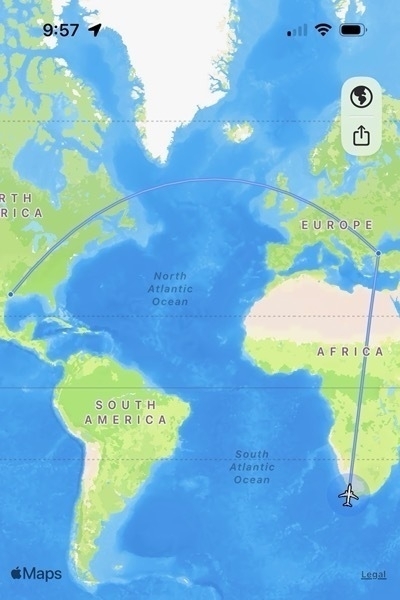
-
Cruising on a yacht from Cape Town
We took a wonderful cruise on this beautiful yacht in the Atlantic Ocean around Cape Town . It was beautiful to see Table Rock Mountains and the city from the water. The water was especially calm so we were also able to cruise around Robben Island where the former prison (now a museum) where Nelson Mandela was a prisoner.
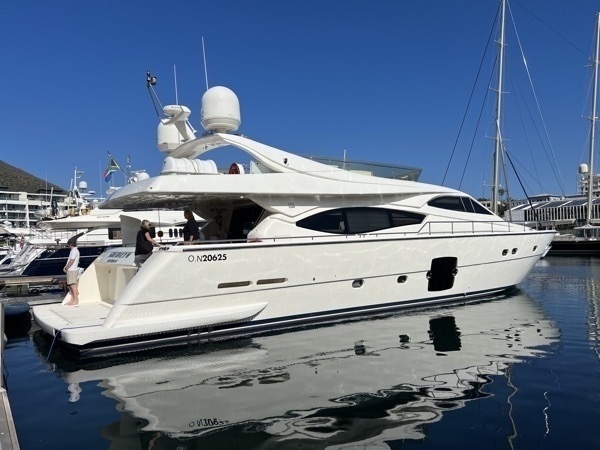
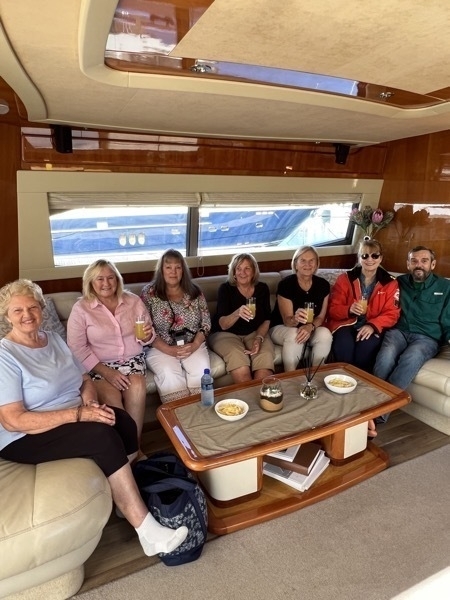
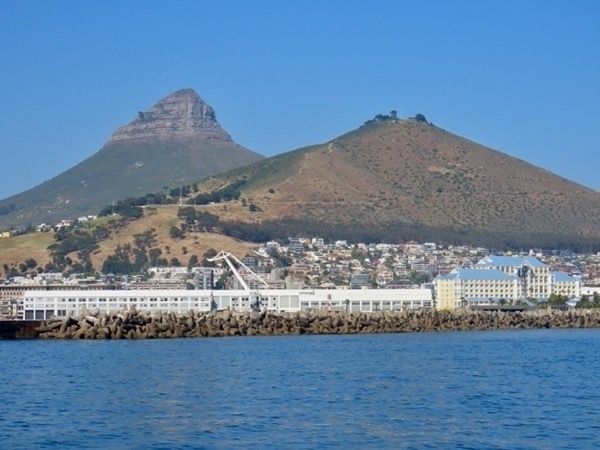
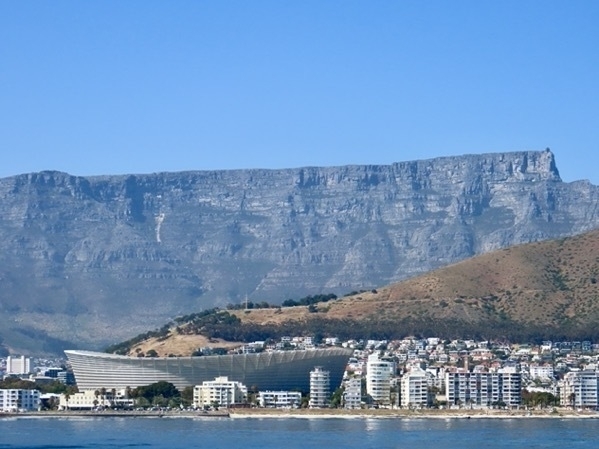
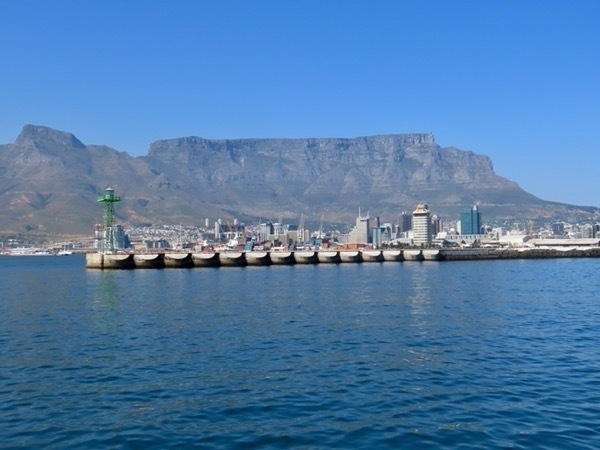
The Cape Town soccer stadium where the 2010 World Cup was played. It seats 96,000 and is now used as an event center in addition to hosting soccer games.
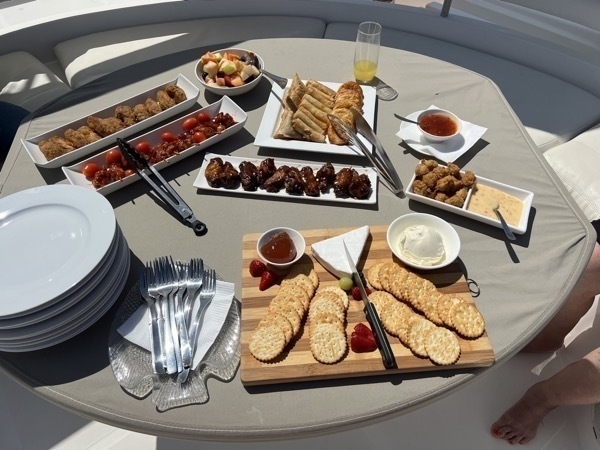
We had plenty of appetizers and drinks while on the yacht. (There has definitely been no shortage of food on this trip)!
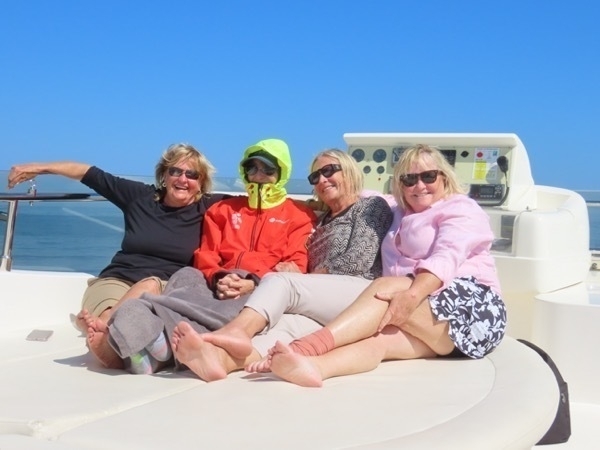
The weather was beautiful, but a little too windy for me, so here I am looking ridiculous amidst the other ladies.
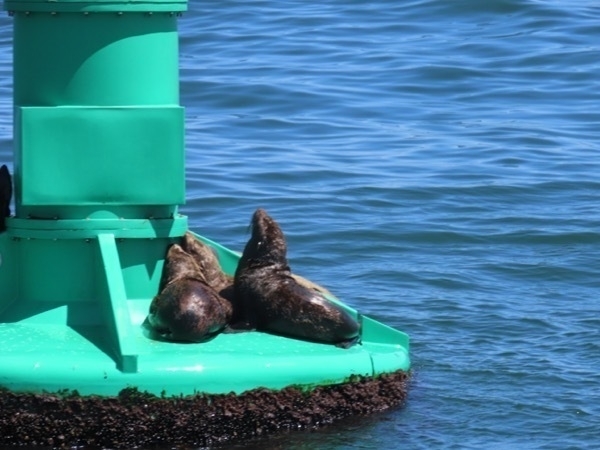
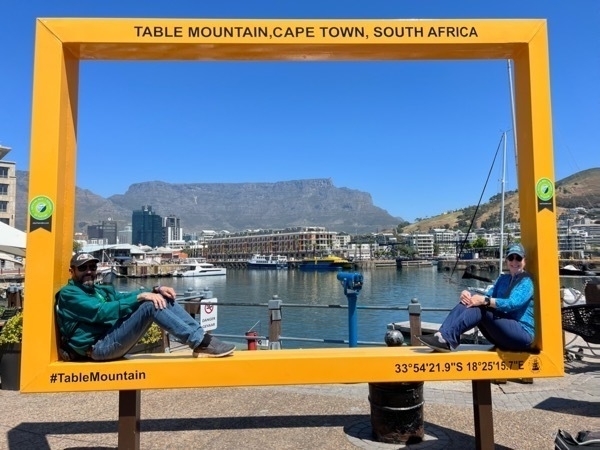
We saw hundreds of seals swimming in the water, but they also seem to enjoy basking in the sunshine on the buoys.
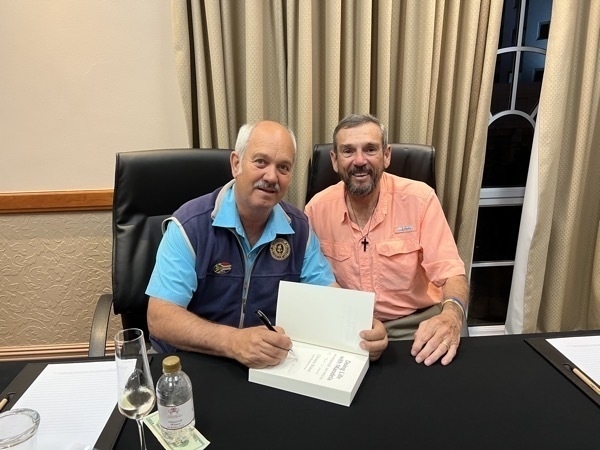
In the evening we enjoyed a private lecture by Christo Brand, Nelson Mandela’s prison guard and the author of two books --Mandela: My Prisoner, My Friend and Doing Life with Mandela. Mandela was a political activist and a lawyer who was imprisoned for 27 years before the fall of apartheid and introduction of a multi-racial democracy in South Africa.. He was later awarded the Nobel Peace Prize and was elected President of South Africa in 1994, the first black president to serve.
-
Hout Bay, Simon's Town and the Boulder Penguin Colony
This morning we left the hotel at 8:00 for a drive down to Hout Bay on the Chapman Highway. We stopped for a photo opportunity with Tom pointing at the Sentniel. We continued along the coast until we reached the Cape of Good Hope where we rode a funicular to the lighthouse at the top and then walked the steps back down. Our next stop was Cape Point and then we stopped for lunch at Simon’s Town.
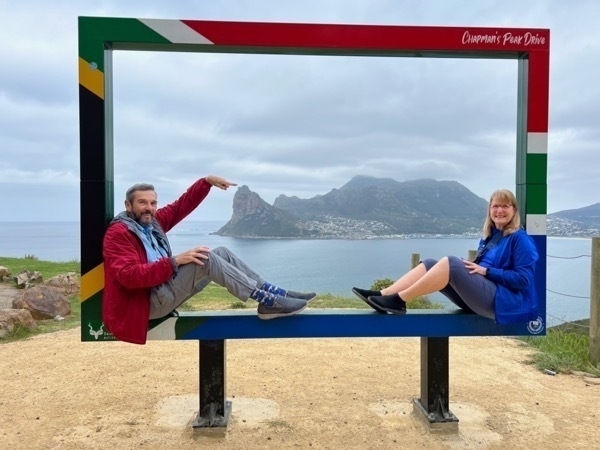
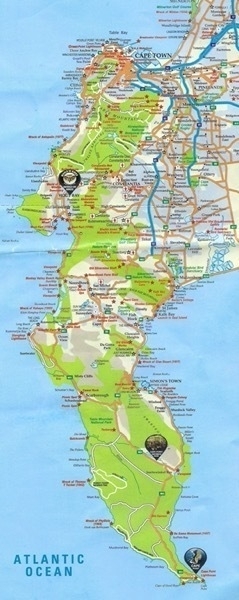
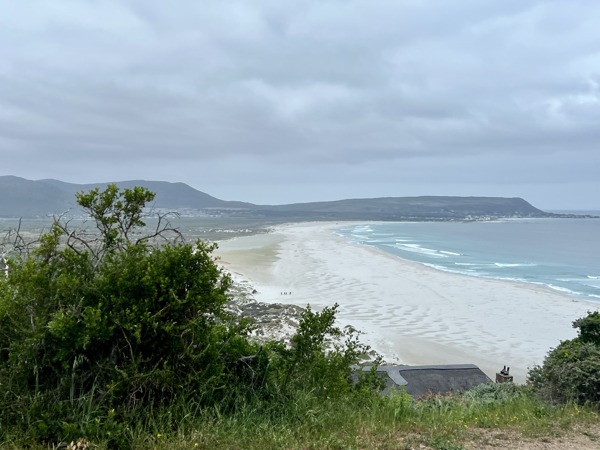
Hout Bay
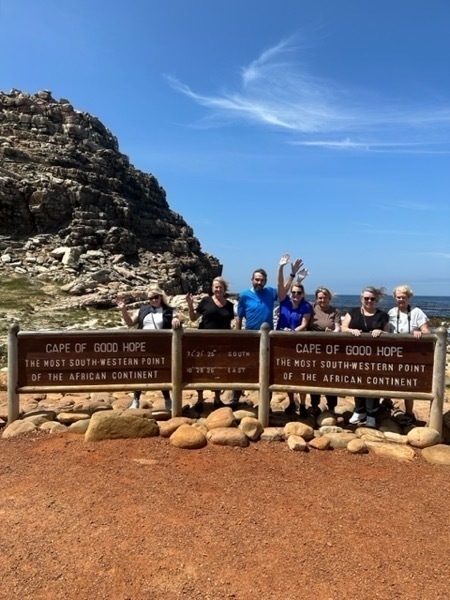
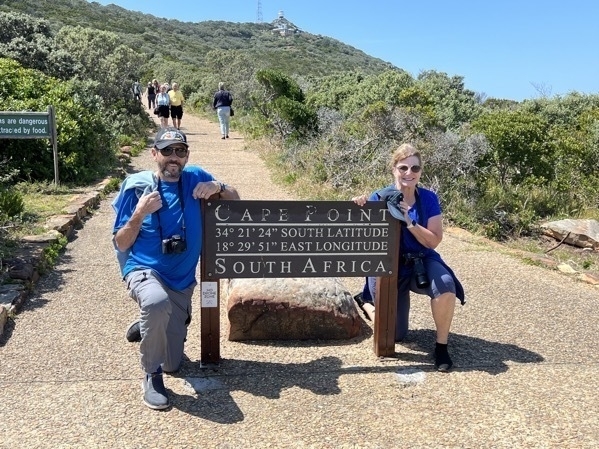
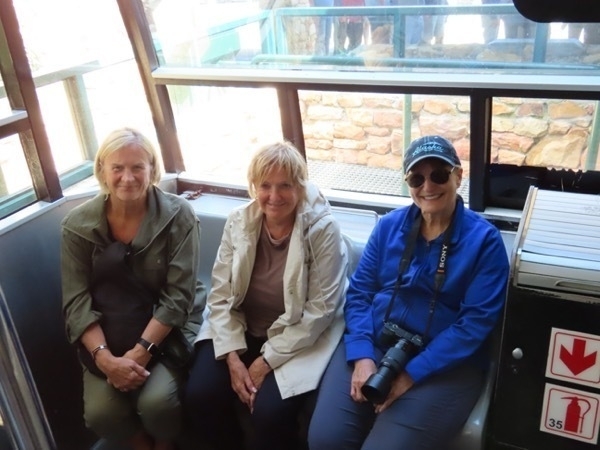
Riding up to the top of the point.
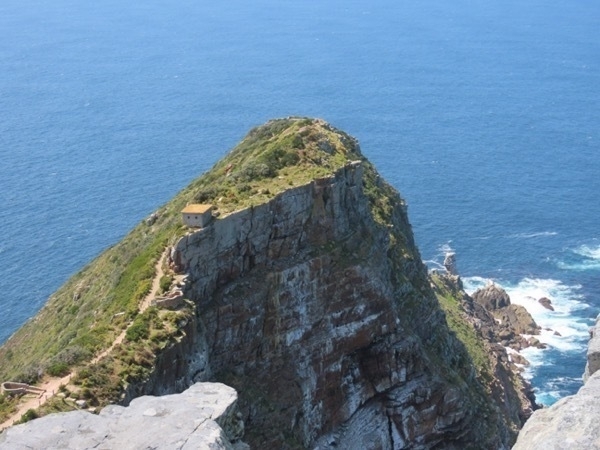
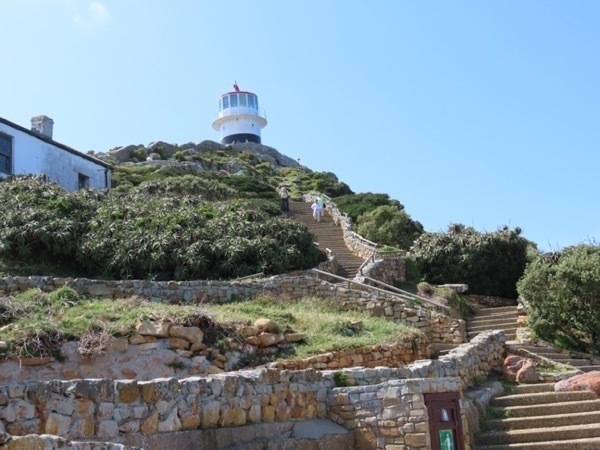
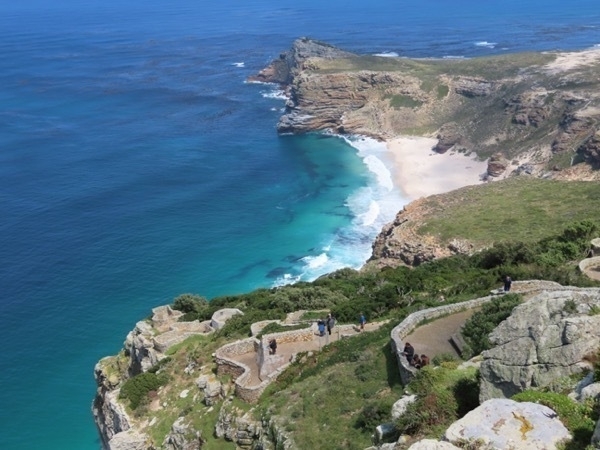
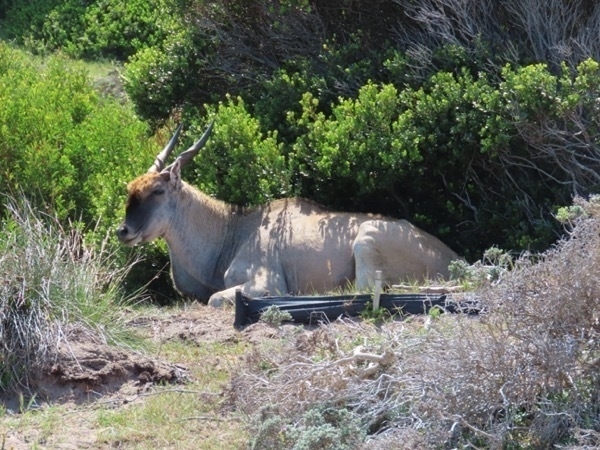
Eland Antelope
y.
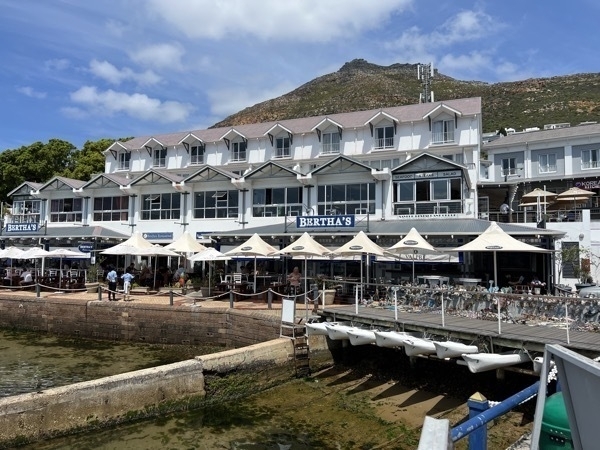
We ate lunch at Bertha’s in Simon’s Town before visiting the Boulders Visitor Center Penguin Colony.
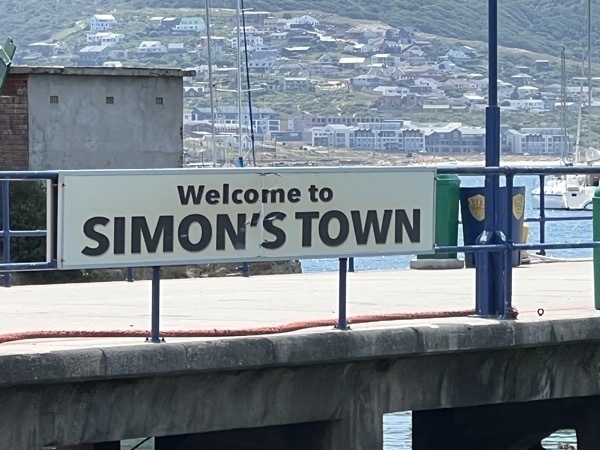
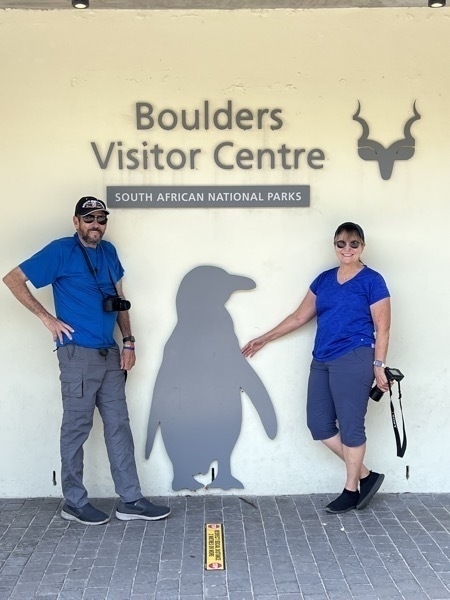
Fun penguin facts from today at Boulders Penguin colony brochure:
- From just two breeding pairs in 1982, the penguin colony has grown to about 2,200!!
- The penguins are African Penguins because they are the only penguin species that breeds in Africa.
- Old feathers are replaced during the annual moult. In this period, the birds lose their waterproofing and are confined to land for about 21 days. African penguins fatten up before the molt, which is a period of starvation.
- After a year or two baby blues molt and attain their distinctive black and white adult plumage. African penguins generally start breeding only at about four years of an age. The main breeding season starts in February. They are a monogamous species and the lifelong partners take turns to incubate their eggs and feed their young.
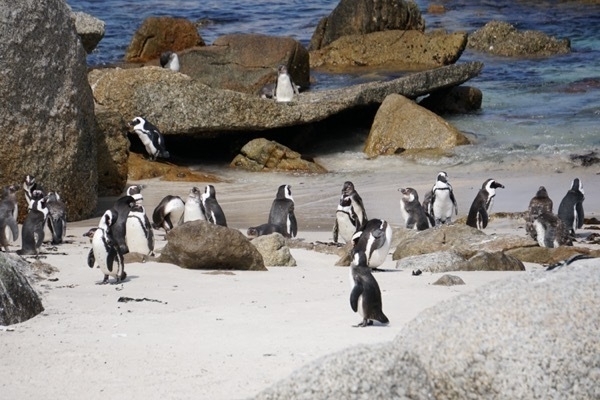
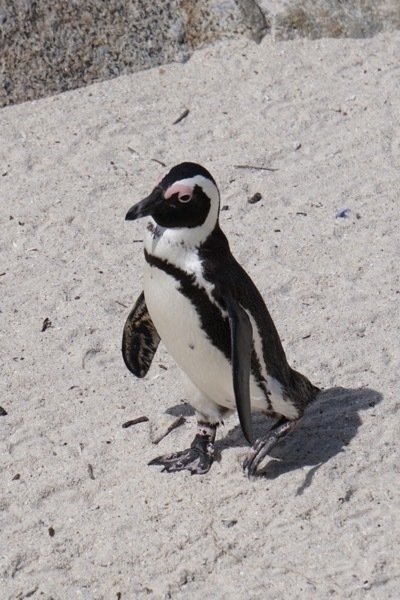
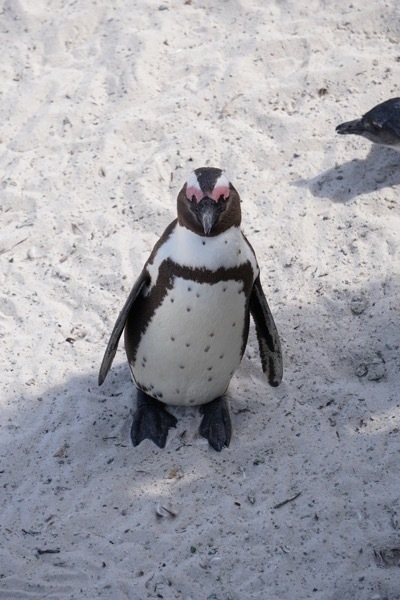
-
Cape Town - Day 2
We started the morning with a bus ride up to the Kiswtenbosch Botanical National Gardens.
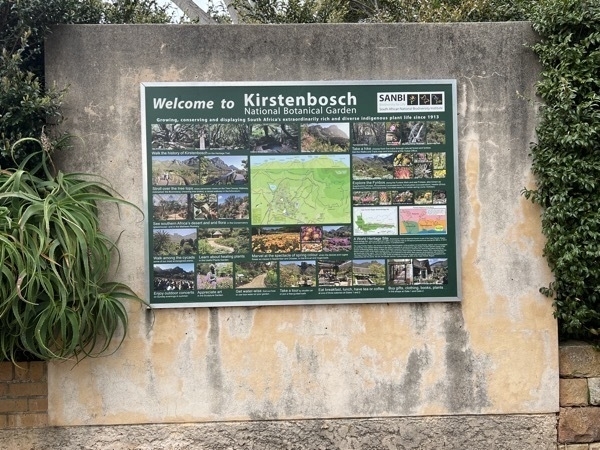
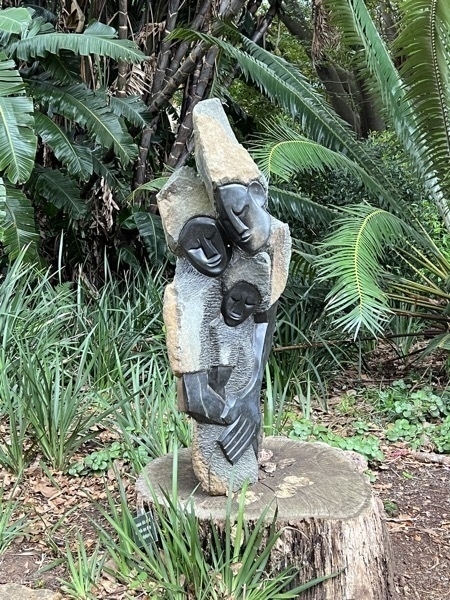
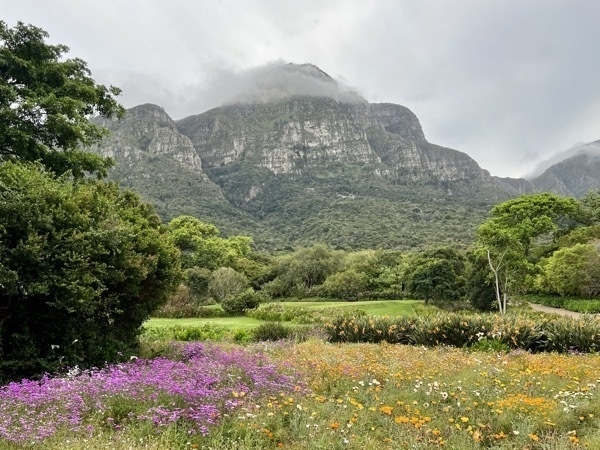
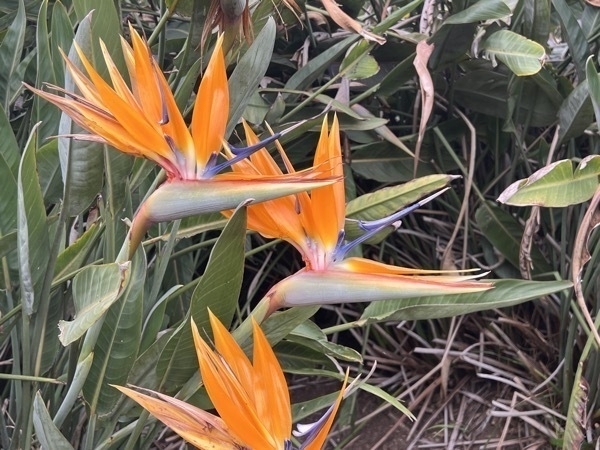
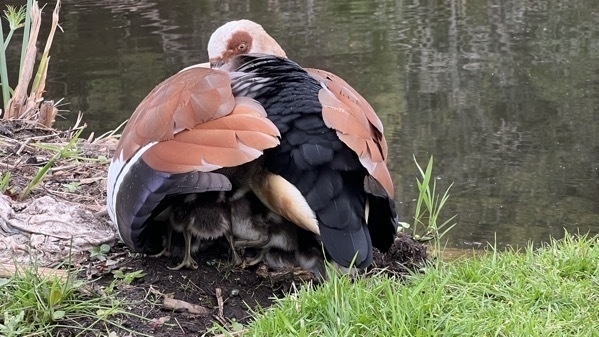
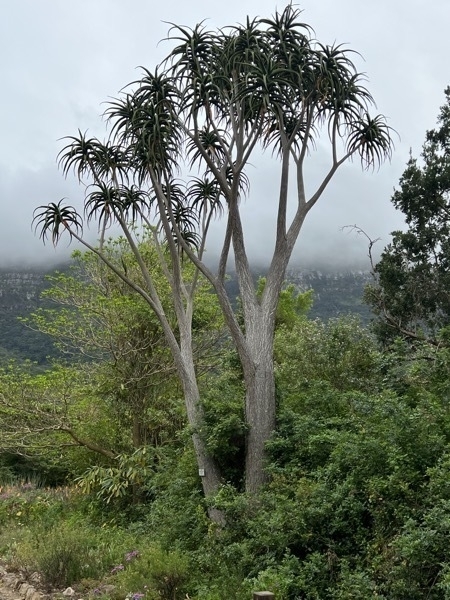
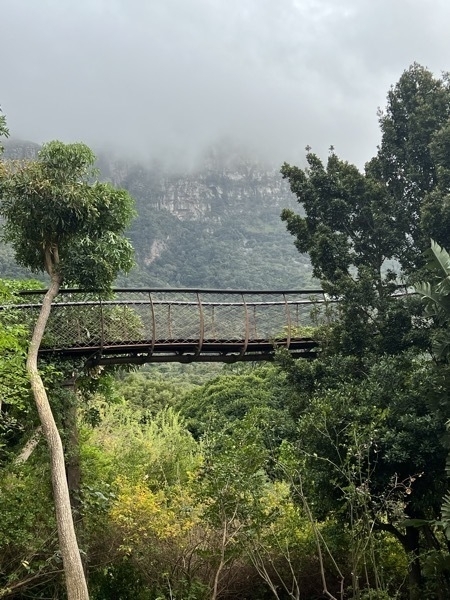
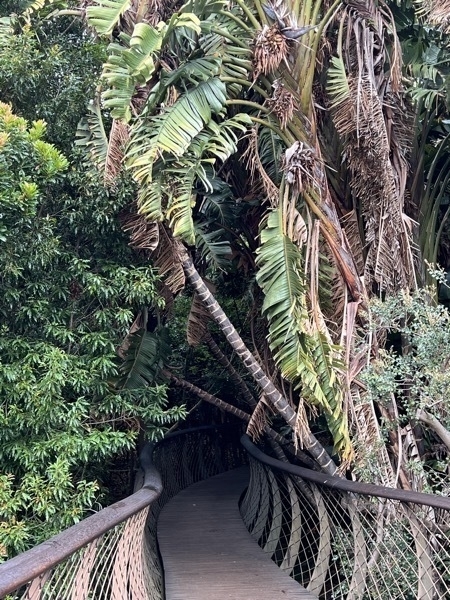
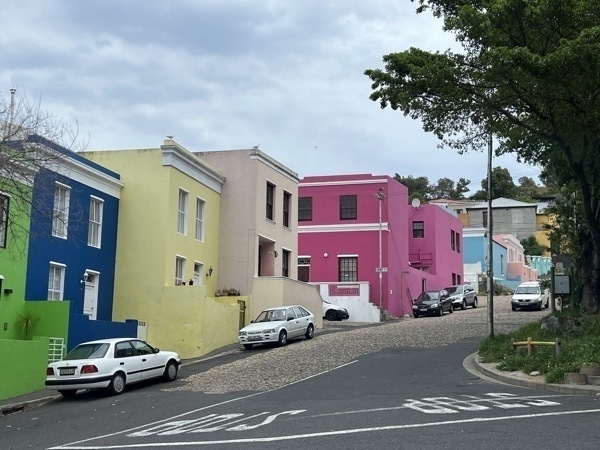
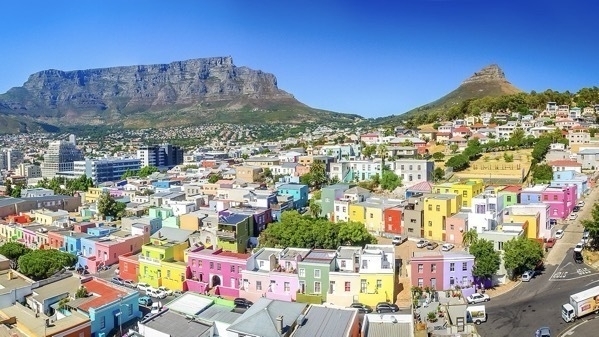
The Boy-Kaap are of Cape Town—very upscale and colorful
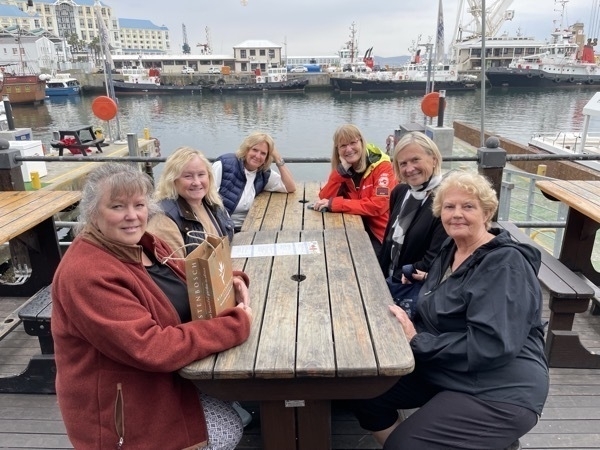
Lunch by the pier at Harbour House
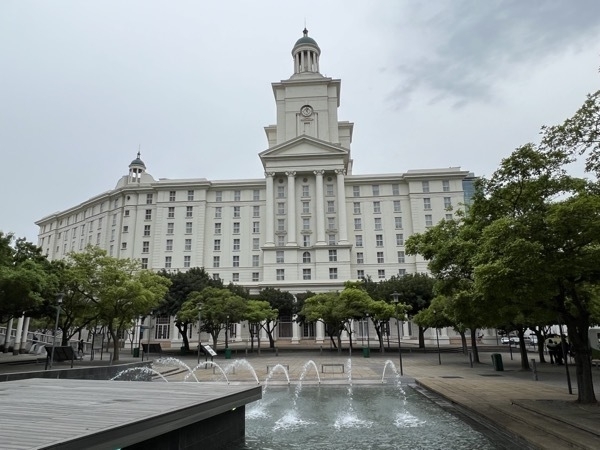
The Cullinan Hotel
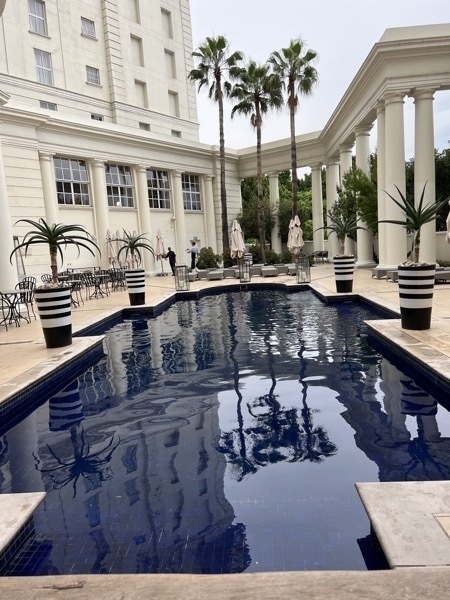
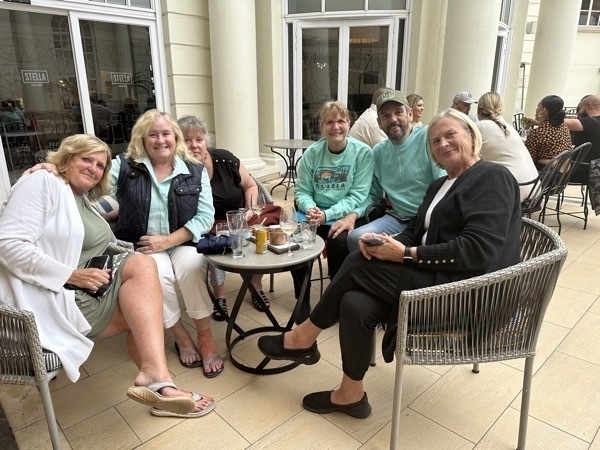
-
Cape Town, South Africa
On Friday morning we left the Mowana Resort in Kasane, Botswana by bus at 9:00AM. Only seven of us are going to Cape Town. Our friends Joyce and Diana are flying home to Minnesota. We took a final group picture before we parted.
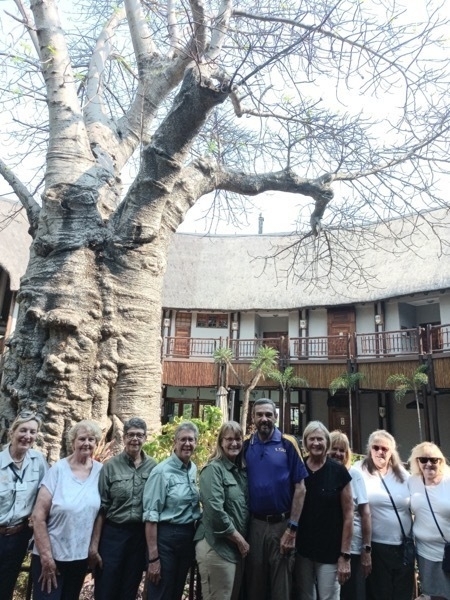
We rode twenty minutes to the Zimbabwe border where we went through border control and got our passports stamped. There we transferred to another bus, and road to the Victoria Falls airport where we boarded our flight to Cape Town, South Africa. When we landed in Cape Town it was 59 degrees, MUCH cooler that the near 100 degree temperatures we left behind. It was very windy!
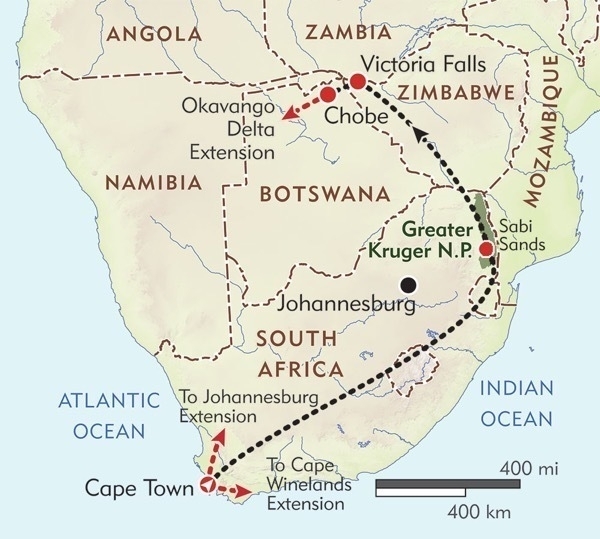
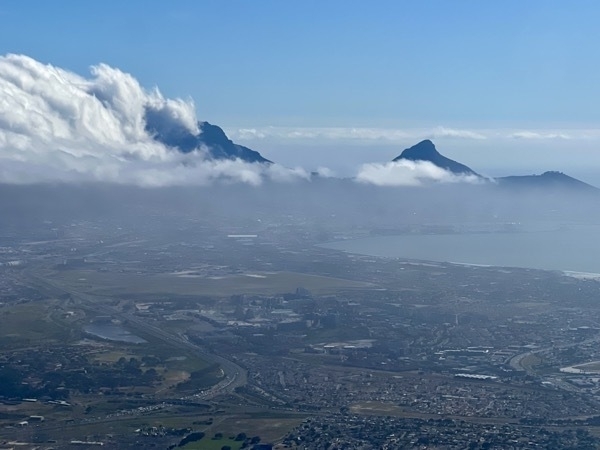
Cape Town from the airplane with Table Mountain mostly hidden by the clouds.
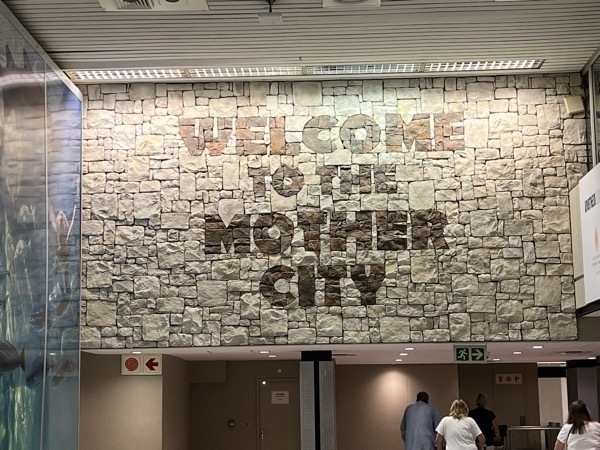
We are staying at the Cullinan Hotel across from the Convention Center.
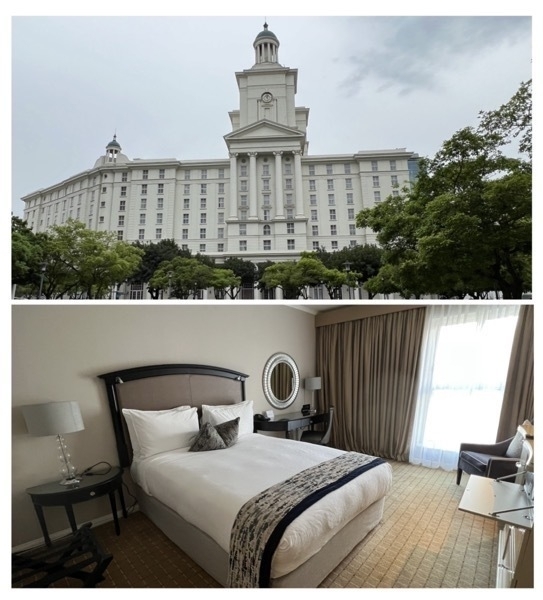
-
Chobe National Park-Day 3
This morning at 11:00 we walked down to the Mowana Safari Resort ’s dock to board a special boat equipped with swivel chairs and state-of-the-art zoom lens DSLR cameras.
After the boat ride we were given the memory stick from the camera to take home, containing all the wildlife photos we took along the way
.
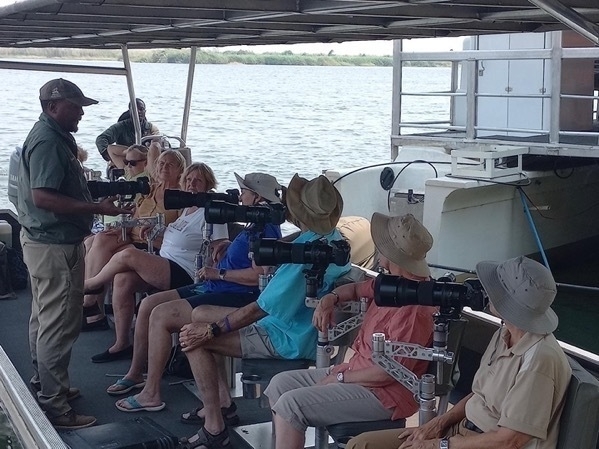
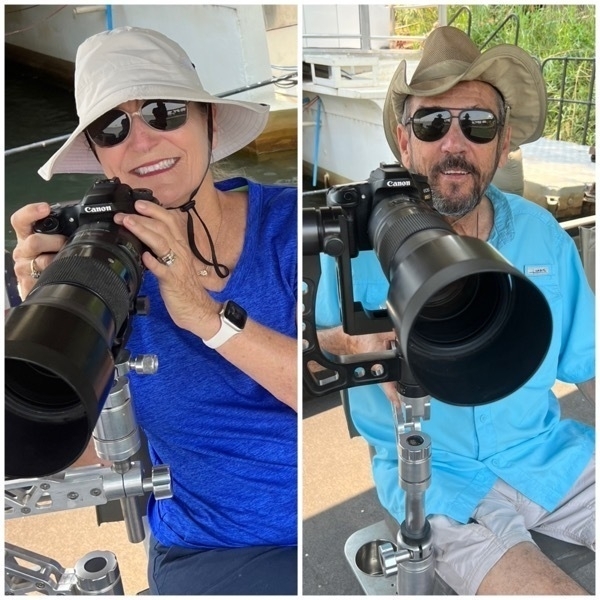
Our first stop was to take some closeup shots of a group of warthogs. When warthogs eat, they knell on their knees so they can reach the grass since their necks are so short.
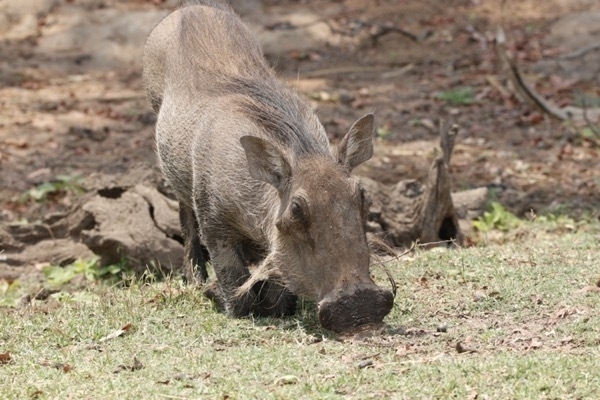
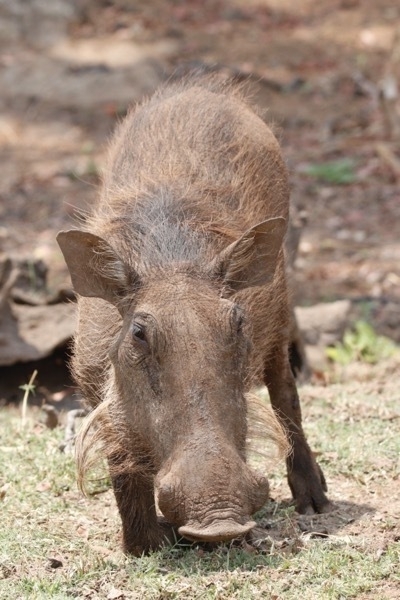
Next, we spotted some hippos in the water only able to see their eyes and nose above the water.
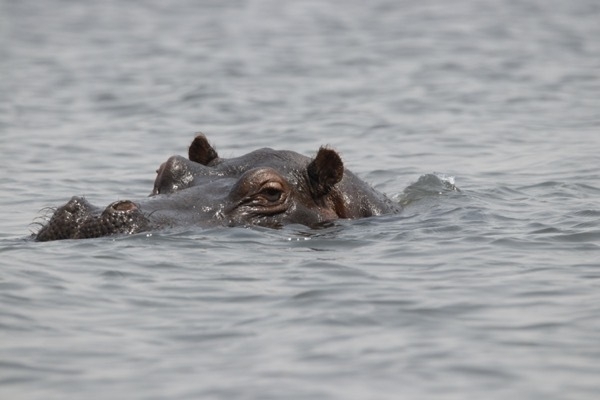
We also were able to spot a few hippos out of the water. They are huge!
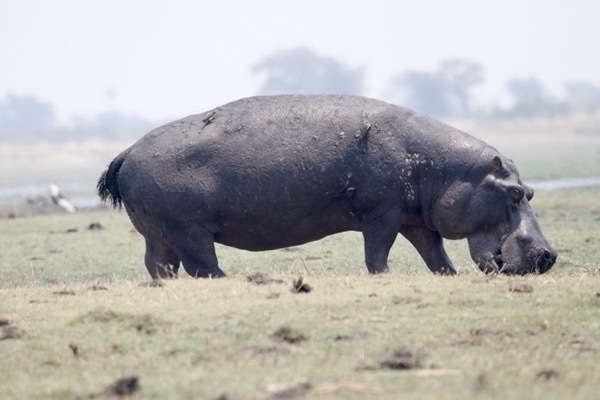
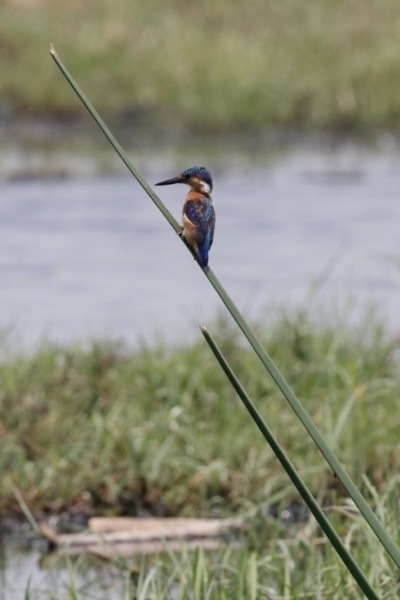
We spent a few minutes taking pictures of the Malachite kingfisher. This little bird is only about three inches long, so it is balanced on a blade of grass.
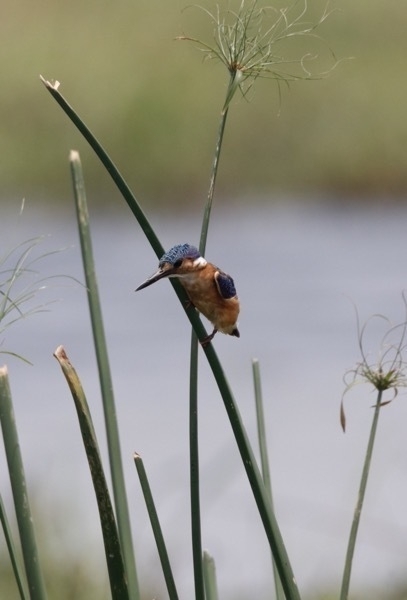
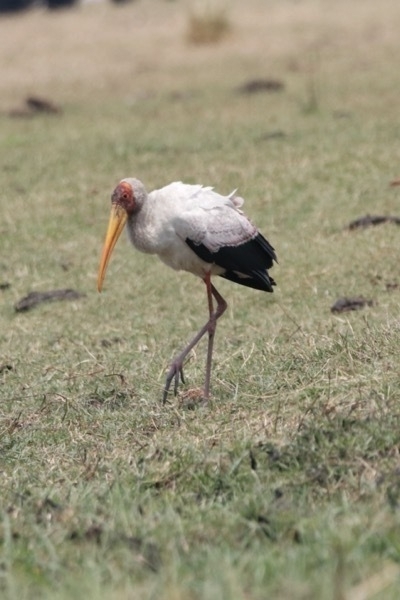
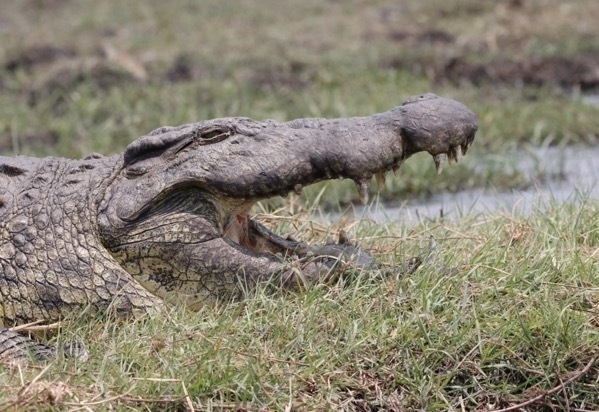
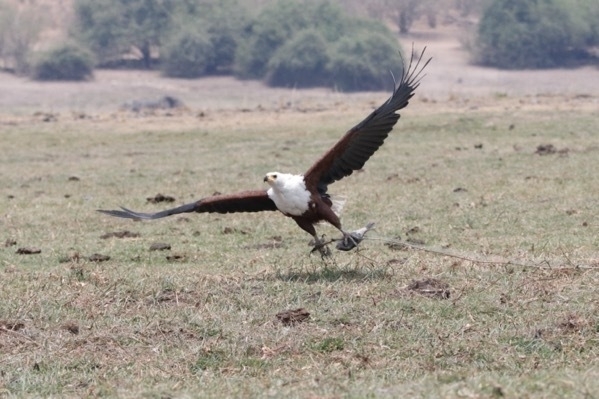
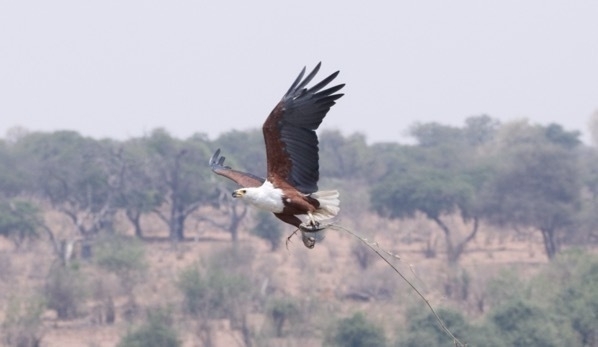
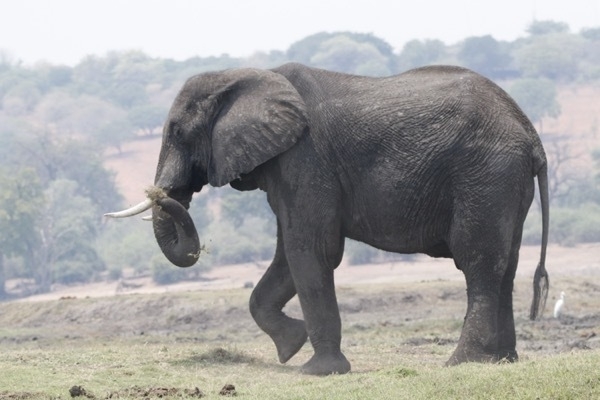
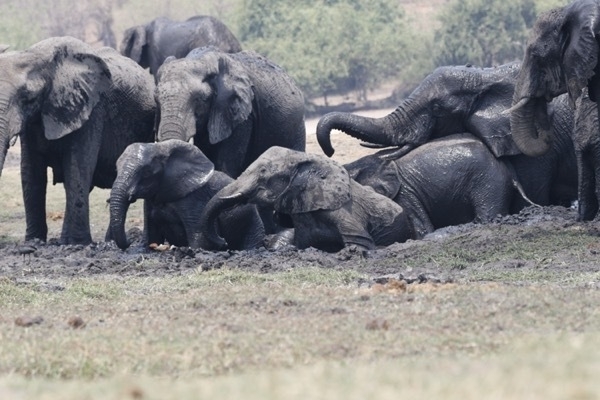
We enjoyed seeing these elephants playing in the mud.
We arrived back at the resort about 1:00. I spent about an hour in the pool which felt so refreshing. As we swam three monkeys were playing around the pool chairs and tried to grab Cecelia’s purse and passport. Cheryl and Dorian kept trying to shoo the monkeys away which was hilarious, but the monkeys kept bothering them. Finally, they moved to chairs on the other side of the pool and the monkeys got bored and left.
Final Game Drive
Our final game drive was from 3:00-6:00 in the afternoon.
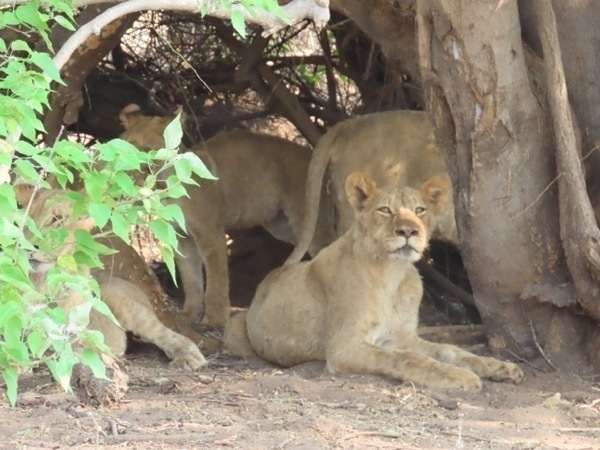
The pride of lions were waiting up from an afternoon nap.
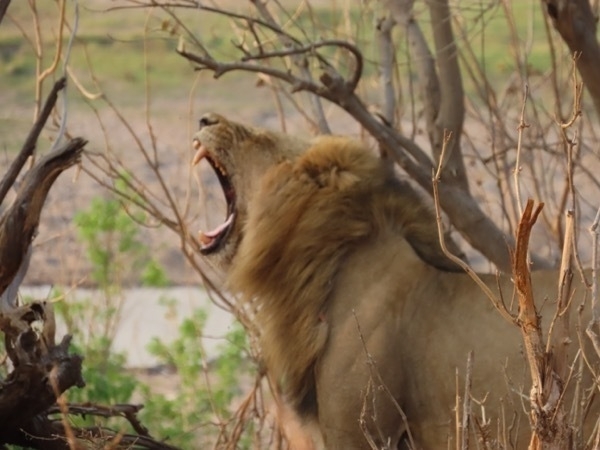
A big yawn from the lion king.
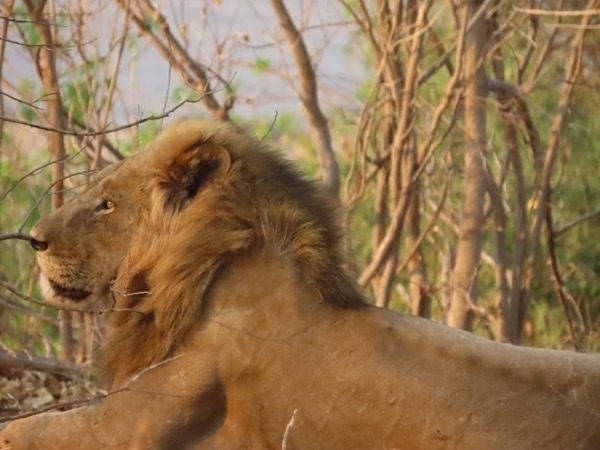
King of the jungle
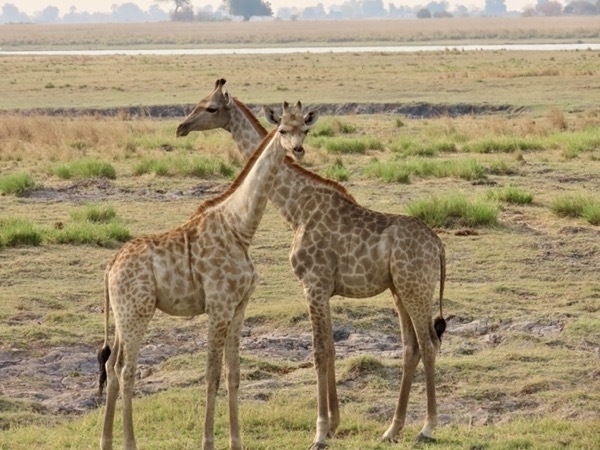
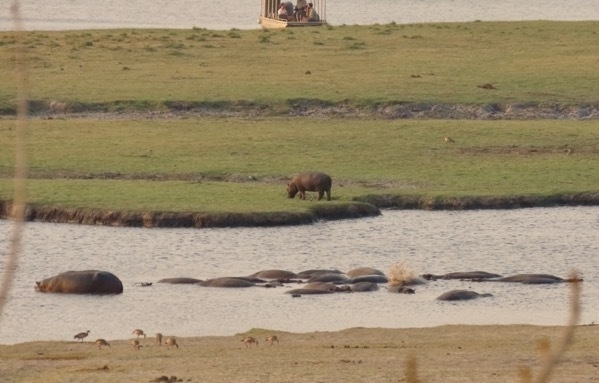
A pod of hippos
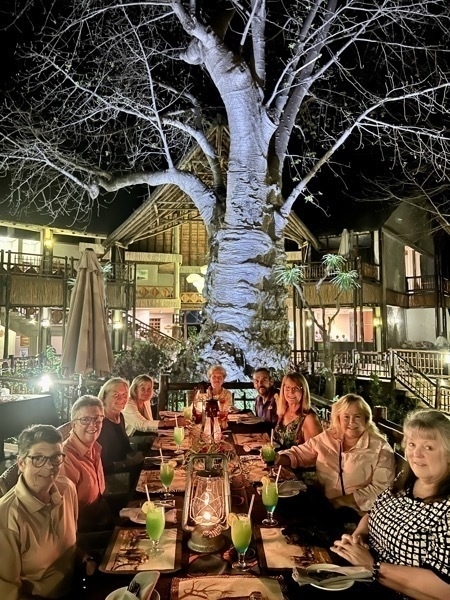
We ended the evening with cocktails on the deck in front of the baobab tree.
-
Chobe National Park, Botswana
We started the day at 6:00AM with a game drive in Chobe National Park. We spotted a leopard shortly after we entered the park along with hundreds of impalas, Next we encountered an elephant that was being a little too playful and seemed as though he was going to ram the jeep. A little too much excitement for some of the members in our group.
.
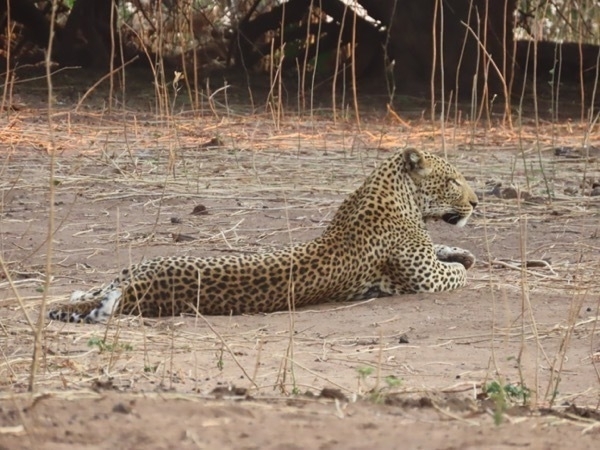
Leopard
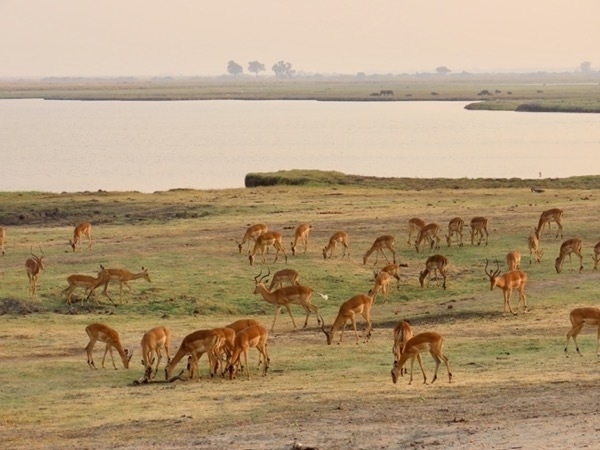
Impalas
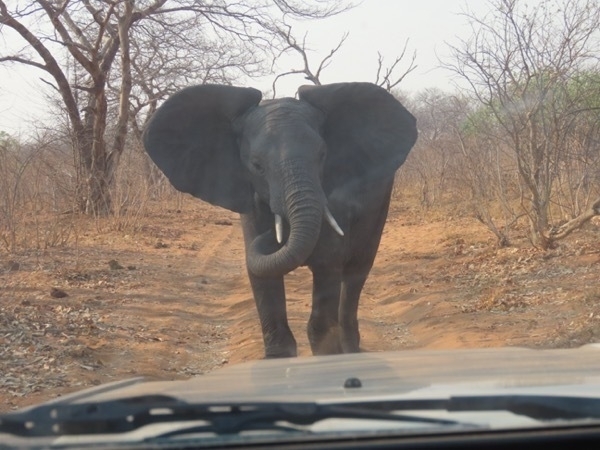
An elephant running towards our jeep!
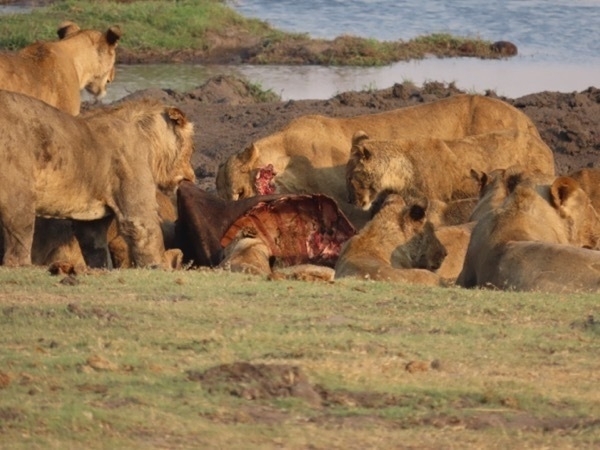
Our biggest excitement of the morning was watching a den of lions devour a Cape buffalo.
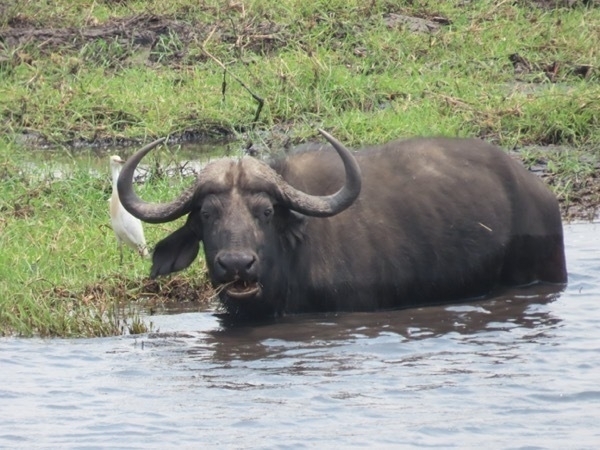
This is a picture of a Cape buffalo that the lions killed and ate.
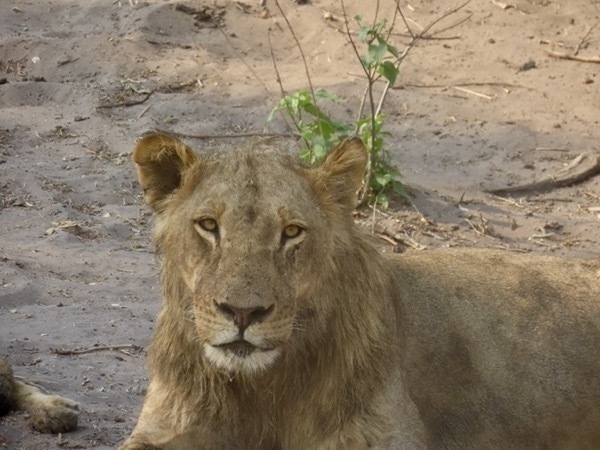
In the afternoon we were able to see that same spot from our boat cruise on the water.
The baboons were fascinating to watch. Obviously, this little guy was not listening, so his dad picked him up and carried him to his mom.
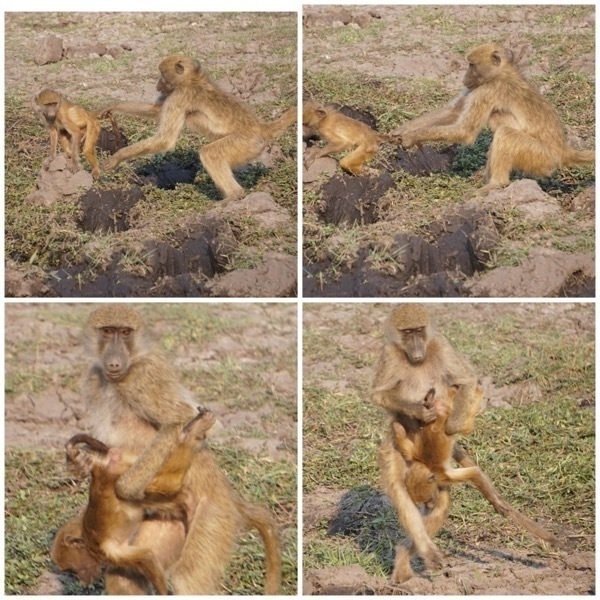
The Chobe Explorer
We cruised the Chobe River on the triple-decker Vantage Chobe Explorer from late morning until about 4:00,. As we slowly cruised down the river we were able to spot animals from a different perspective than on our morning game drive on land.
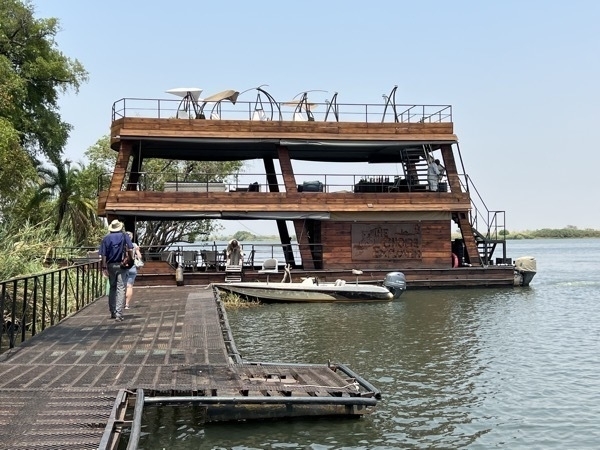
Those swinging loungers on the top deck were very comfortable, but the sun was a little too intense to be sitting up there. The middle deck was nicely shaded with comfortable seating, so we spent most of the cruise on that level.
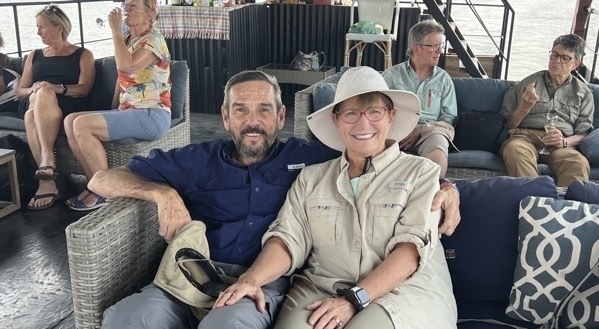
We enjoyed a delicious lunch on the bottom deck and then returned upstairs to take more photos.
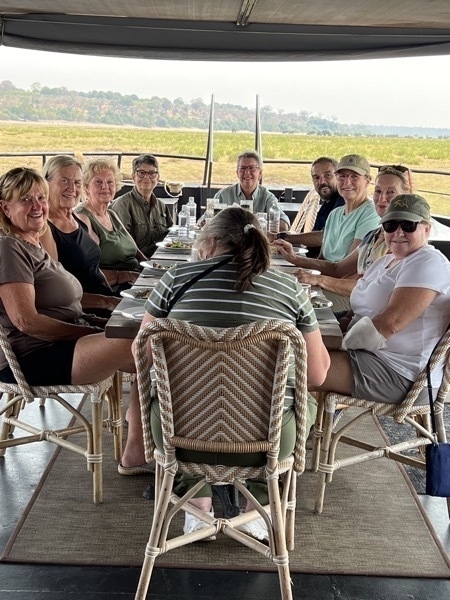
Animals, Birds, and Crocodiles
We were able to see the same spot where the lions had eaten the Cape buffalo in the morning and now saw the buzzers and other birds feasting on the leftovers—until one of the lions started to walk in that direction.
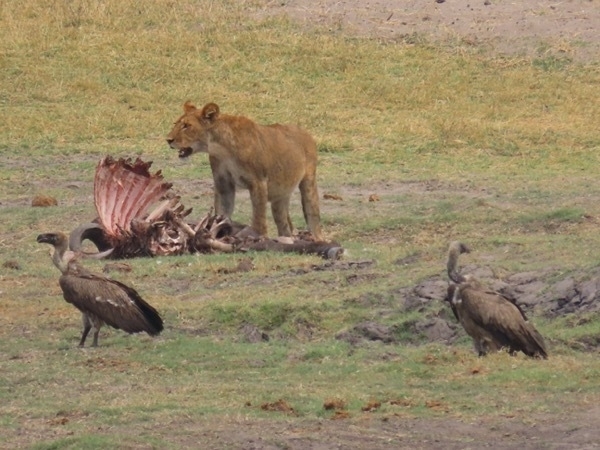
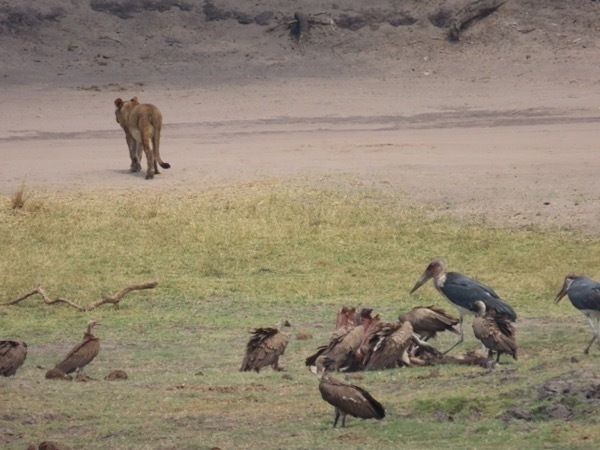
As soon as the lion walks away, the birds return.
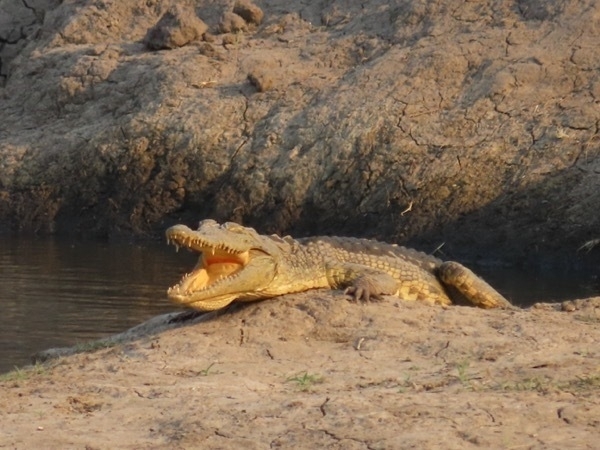
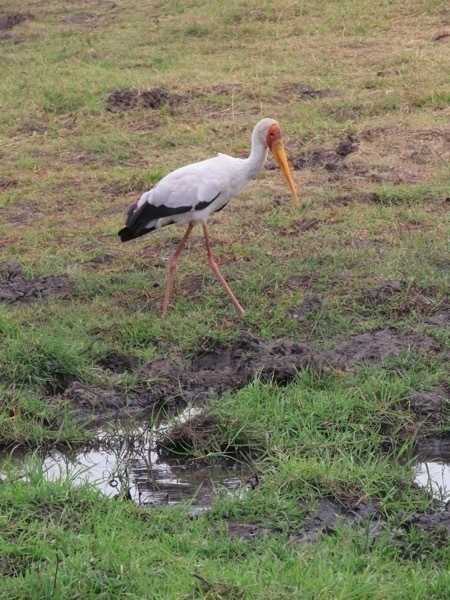
Yellow billed stork
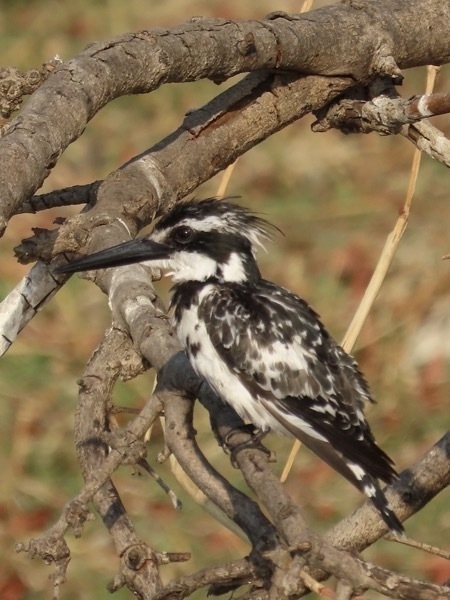
Pied Kingfisher
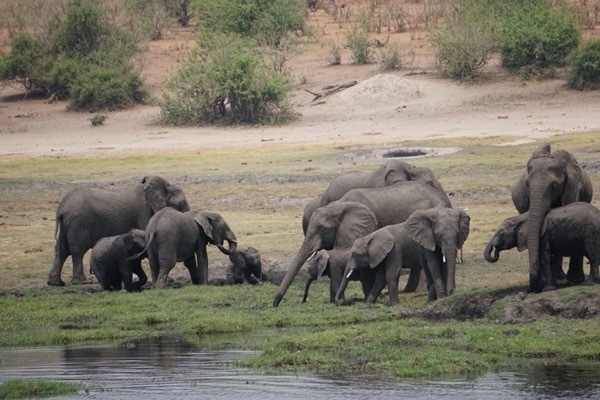
Elephants playing in the mud
-
Botswana
This morning we left the Iganaya Tented Camp around 9:00 and drove across Zimbabwe to get to our next destination in Kasane, Botswana where we are staying at the beautiful Cresta Mowana Safari Resort located along the Chobe River and near the entrance to Chobe National Park. We stopped for lunch at Zulu’s and enjoyed an absolutely delicious fo
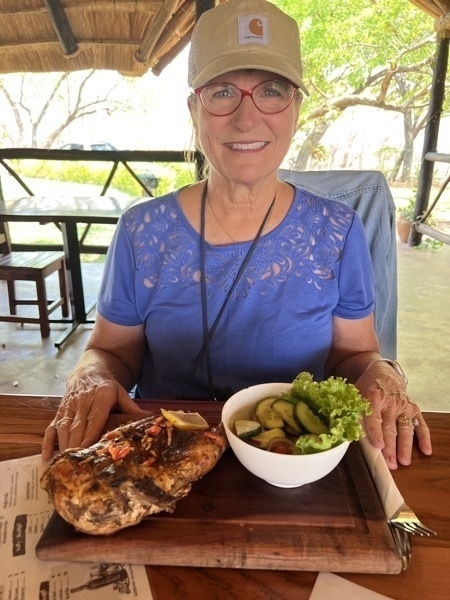
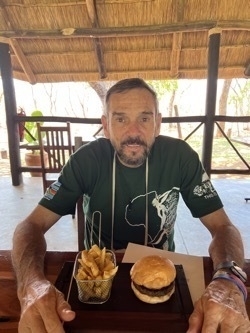
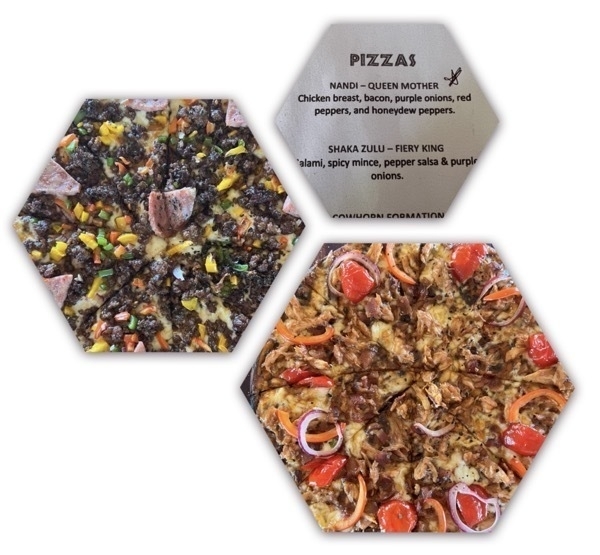
I had grilled chicken and a salad. Tom had a hamburger and French fries. Our friends Joyce and Diana had the pizzas picture above.
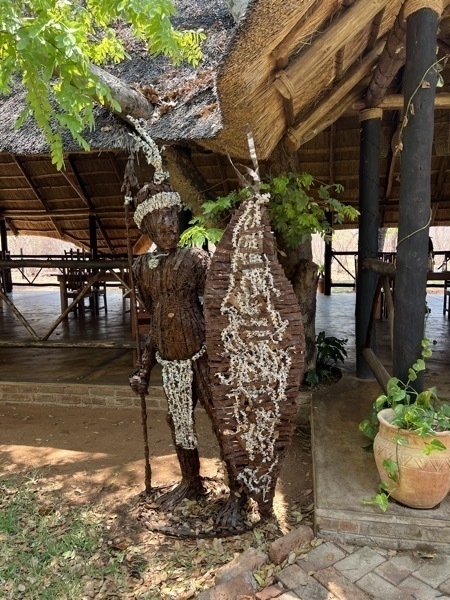
The outside of Zulus
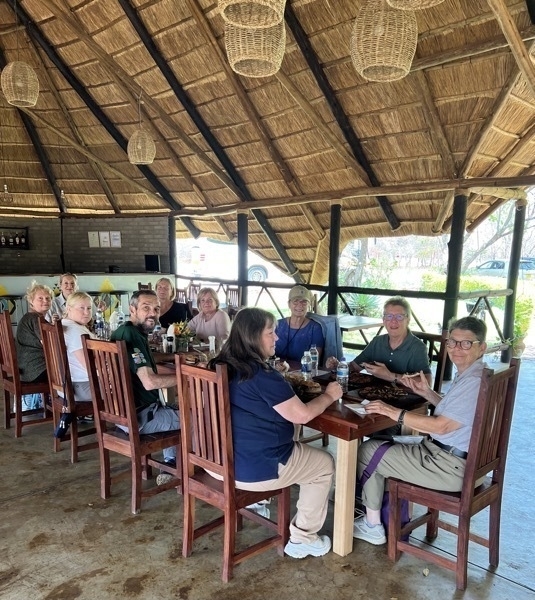
Here we are eating our lunch together
We had to go through passport control to get out of Zimbabwe. That entailed getting out of the bus and waiting in a building to get our passports stamped getting back into the bus. Riding another 100 feet of so before we had to get out of the bus again. This time we and all our luggage transferred to a Botswana Bus. That bus had to drive through a disinfected to clean the tires. We walked across the border and had to step into the disinfective solution and place our other pair of shoes in it as well. It looked absolutely filthy, so I can’t imagine it was keeping our any germs.
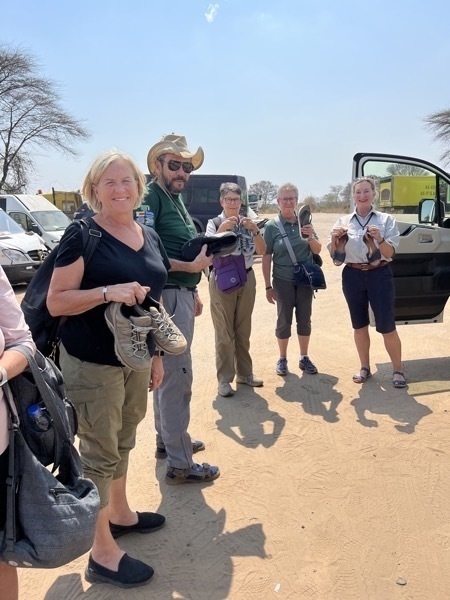
Here we are on the Botswana side holding our “theoretically: disinfected shoes.
We got back in the bus and rode for about twenty minutes before arriving at Cresta Mowana Safari Resort located along the Chobe River and near the entrance to Chobe National Park.
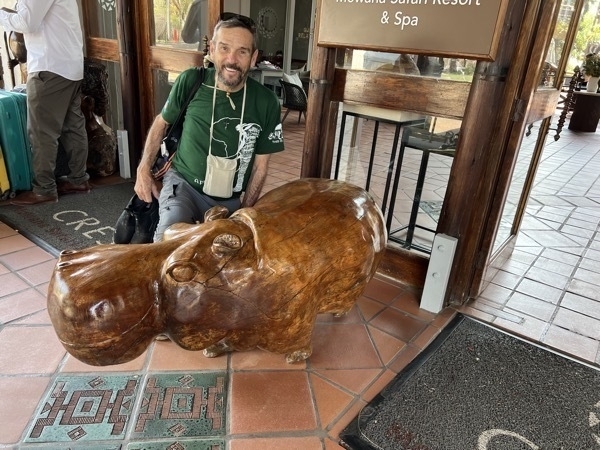
This hippo at the resort is the first one we’ve seen out of water, but that was about to change.
We checked into our rooms and relaxed for about an hour before taken a private river tour on the Chobe River.
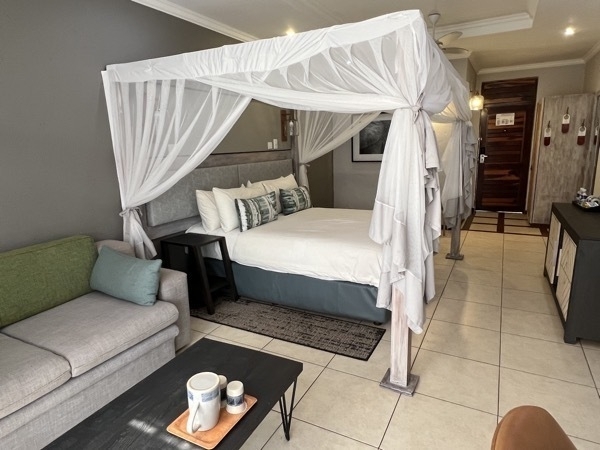
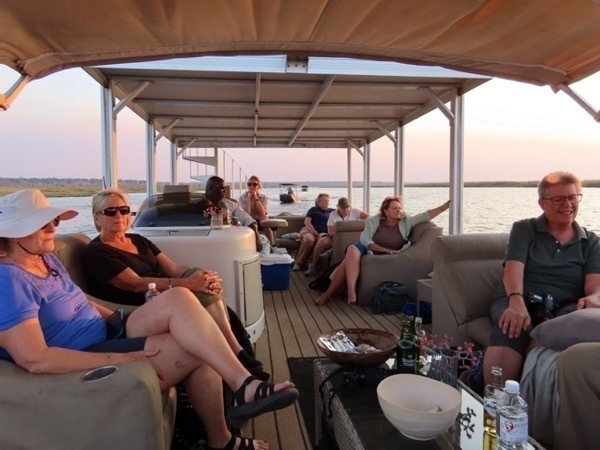
This is our boat today for our private tour of the Chore River. We saw our first hippos out of the water and also a huge number of water buffalos, a giraffe, kudu, crocodile, elephants, crocodile, and finally some hippos our of the water!
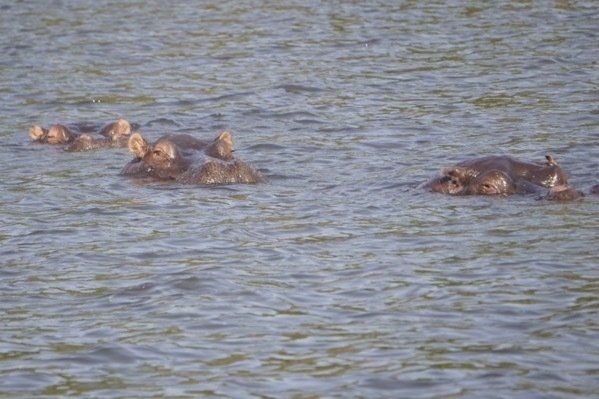
We started out seeing just parts of the heads of the hippos, but by time time we finished the trip, we had seen seven
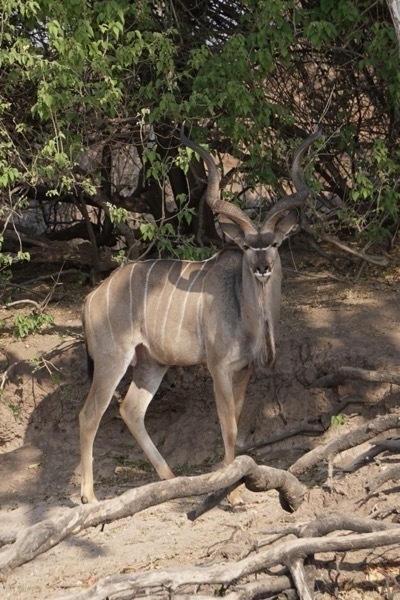
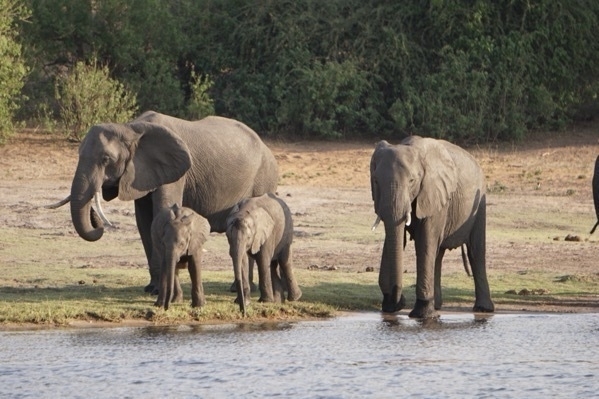
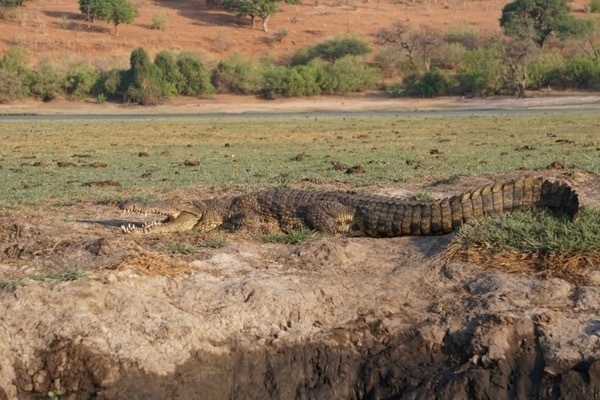
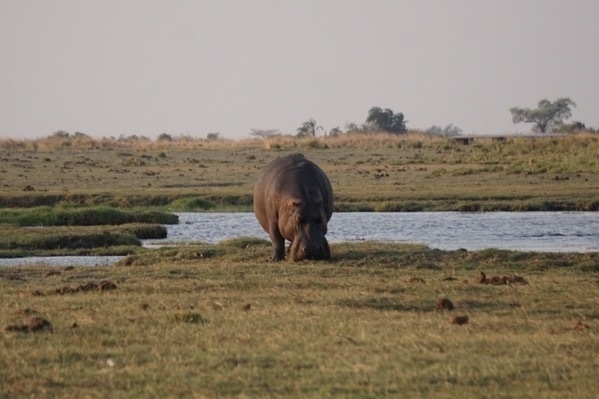
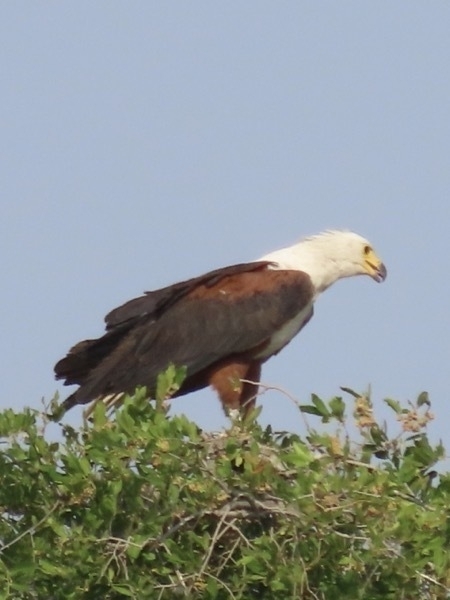
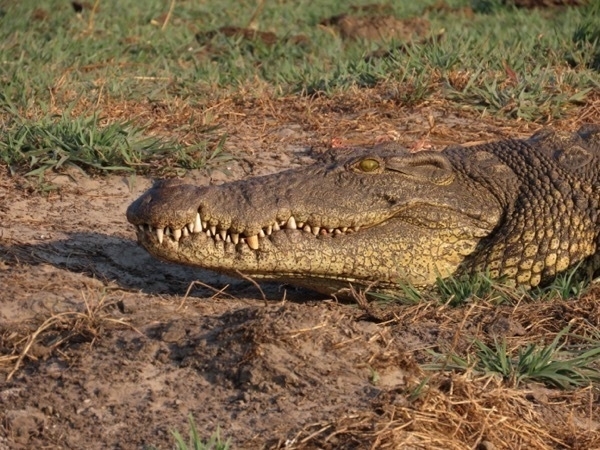
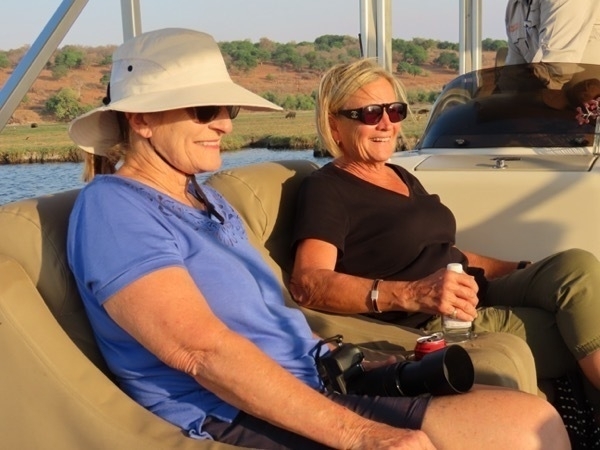
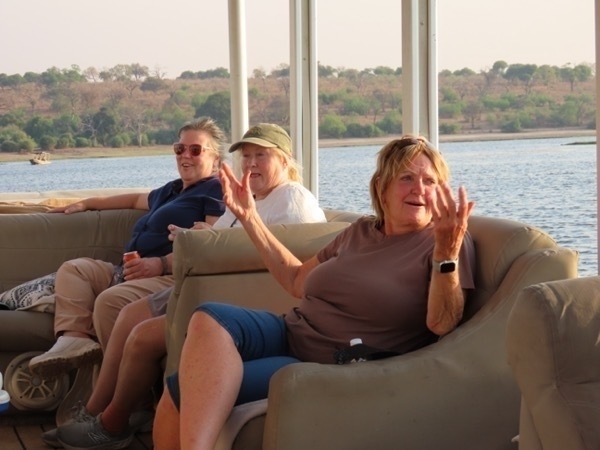
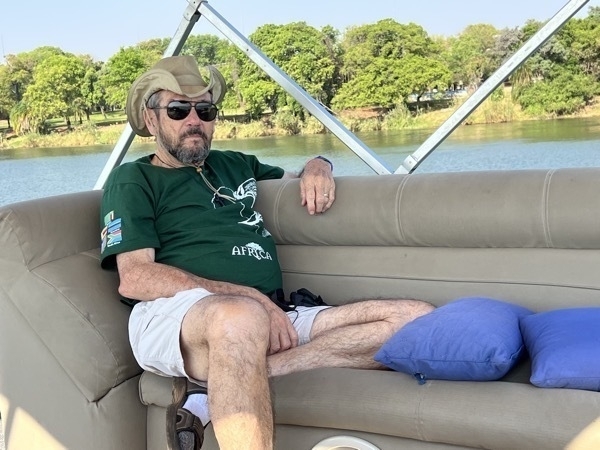
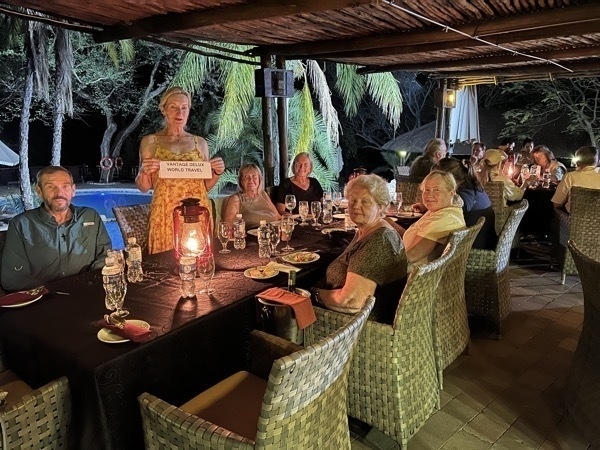
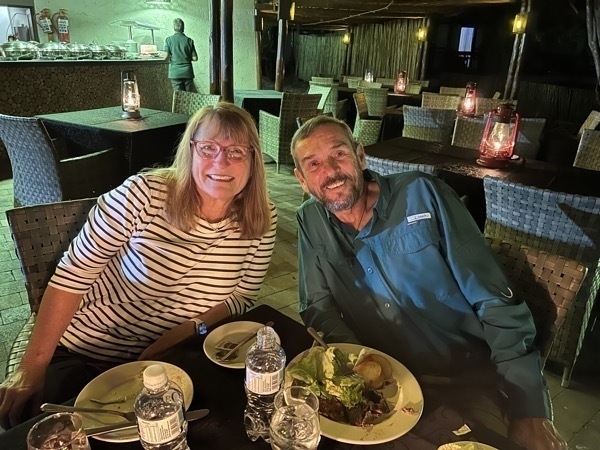
Delicious dinner outside by the pool
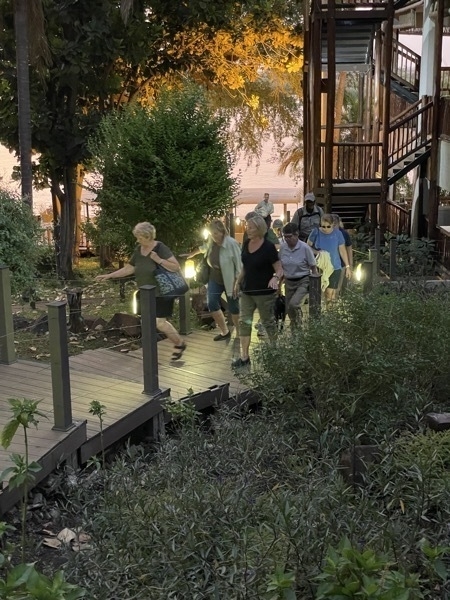
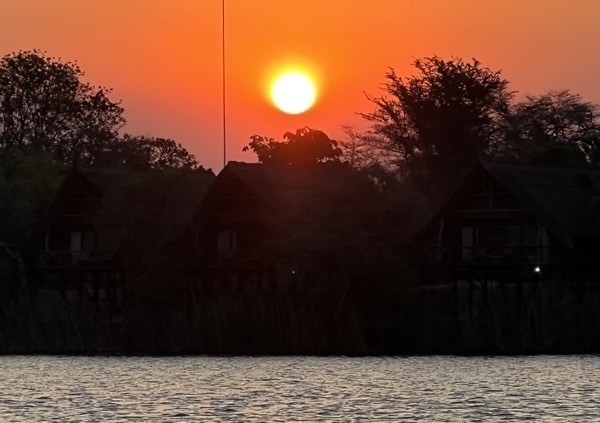
-
Victoria Falls, Zimbabwe
The road was absolutely horrible and the ride was rough from the Palm River Hotel to our new location. We traveled by small bus into very remote areas where we drove by small villages along the way. Each “village” contains the parents’ hut, Childrens’ hut, grandparent’s hut, and the outside kitchen. There were road cows and goats walking along the road as we drove past.
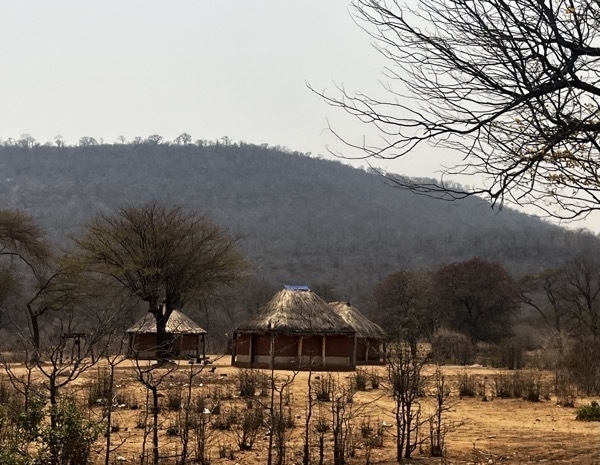
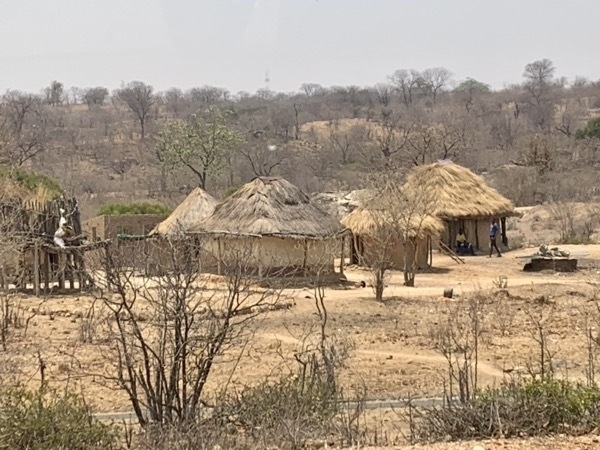
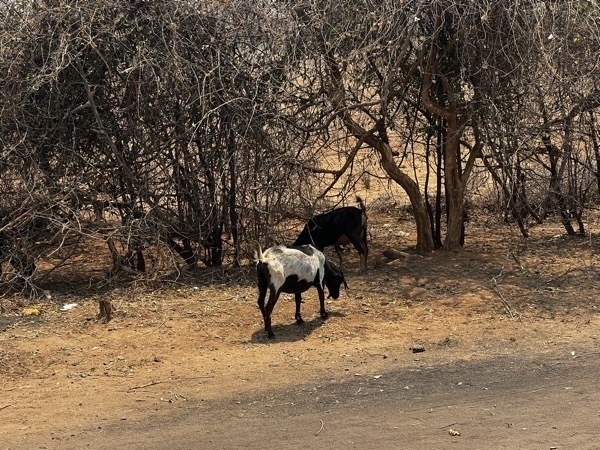
The Iganyana Tented Camp, located outside of Hwange National Park , is the destination where we will be spending the next three nights. Once we were near the tent camp, our luggage and we were transferred from the bus to two safari jeeps to be driven into the camp.
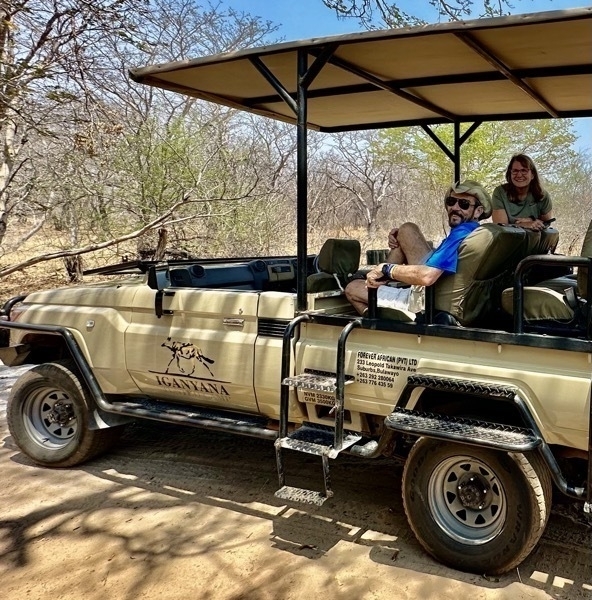
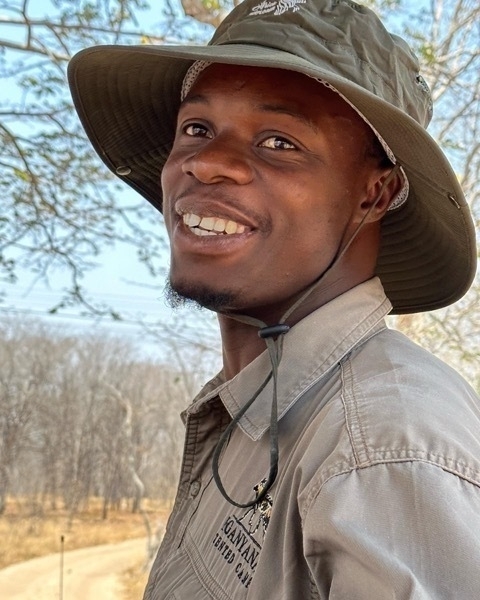
Our driver Dome (pronounced do me)
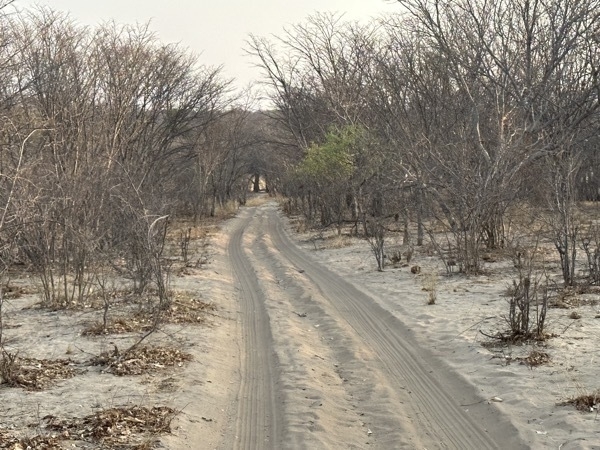
The road into the camp
Our beautiful tent. It has an air conditioner and electricity, but the generators don’t run when we are out on a game drive. When we walk back to the tent and go inside, the heat is oppressive. It takes about two hours to cool it down to a bearable temperature, but as it becomes evening, the temperature drops outside and the inside temperature is quite comfortable . The generator turns off at 10:00 and we can unzip the tent flaps and are able to sleep quite comfortably. In fact, it gets very cool at night (low 60s).
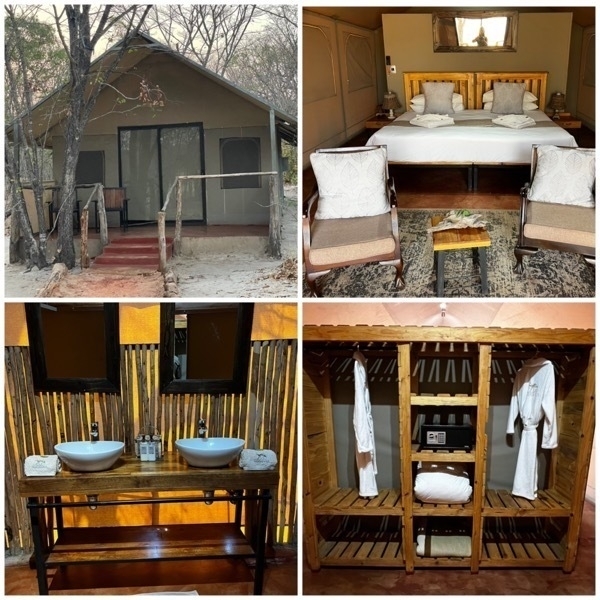
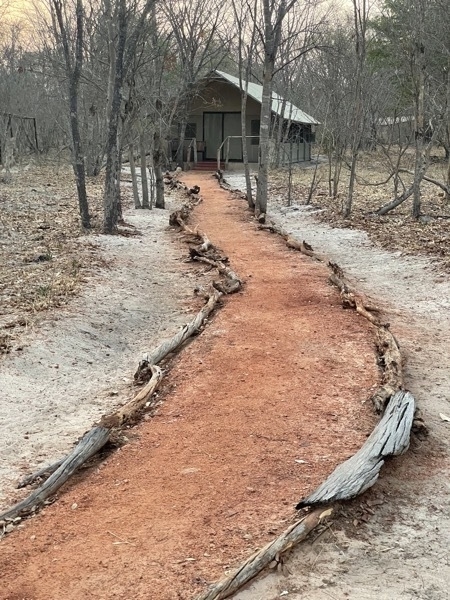
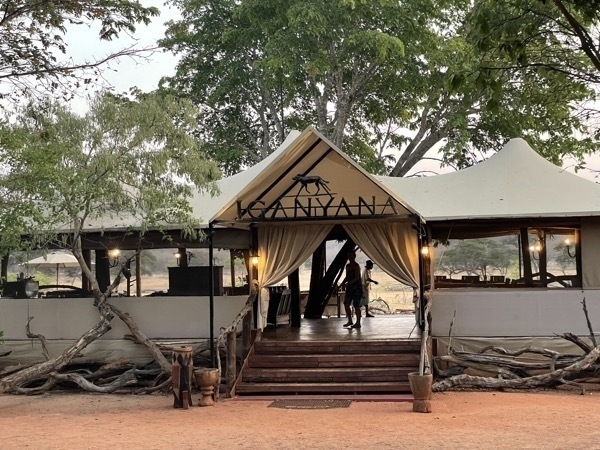
This is the entrance to the lounge area, where we dined and had access to wi-fi.
While we were eating lunch on the deck, a small herd of elephants came right up to the pool to get some water to drink. Seeing them so close was absolutely incredible.
o
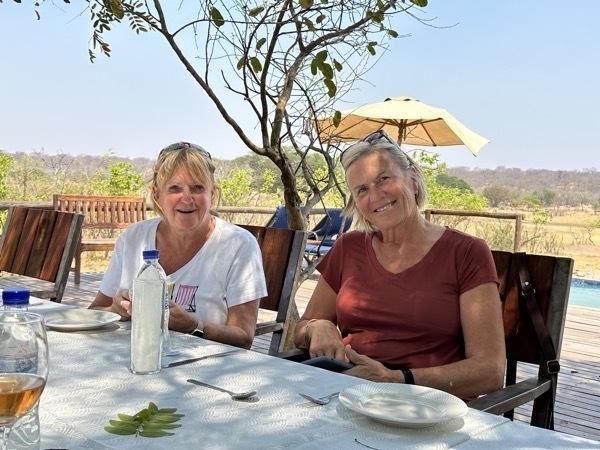 t
tDorian and Cheryl
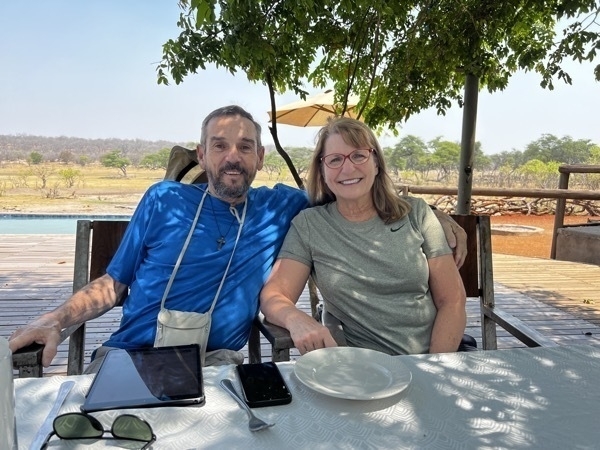
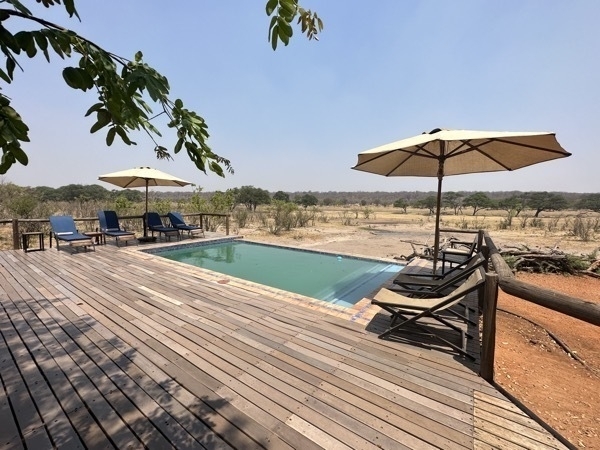
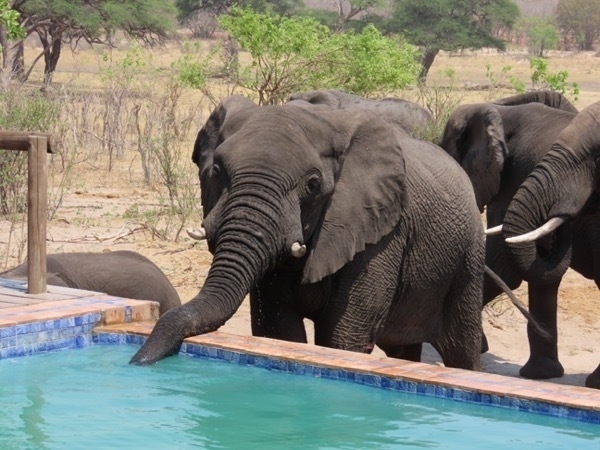
The water is chlorinated, but the elephants don’t seem to mind!
GAME DRIVE
We took our first game drive in the afternoon when the temperature was 105 degrees. Although the jeep had a canopy for sun protection, the temperature was oppressive, but we saw some amazing sites! Our driver and game ranger Ray was extremely knowledgable and made the game drives very interesting.
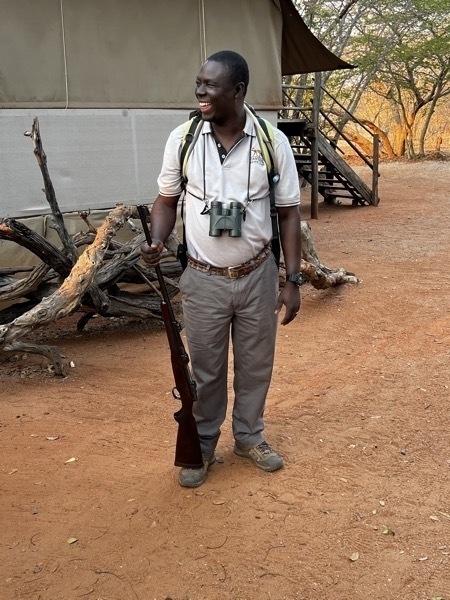
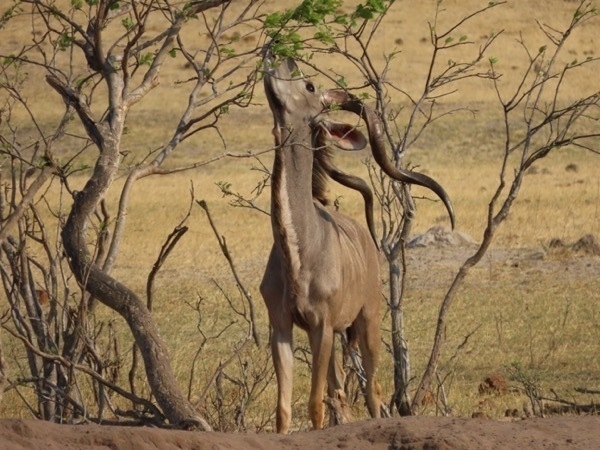
Male Kudu
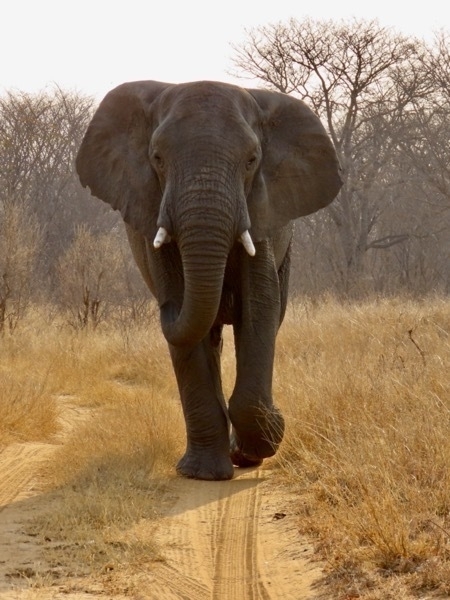
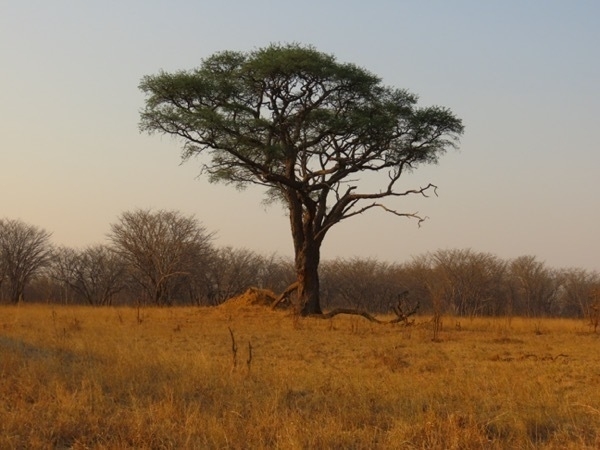
Acacia Tree
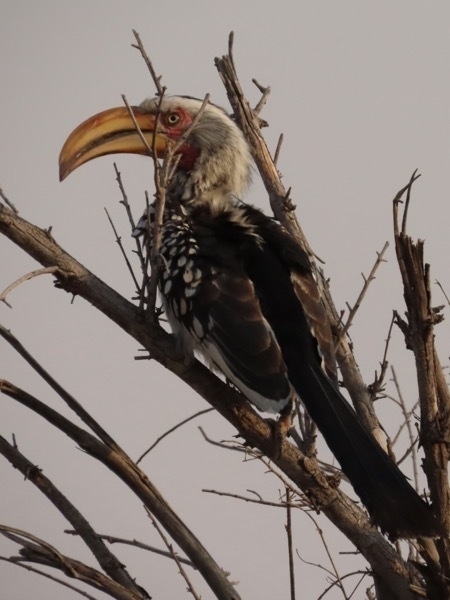
Yellow billed horn bill
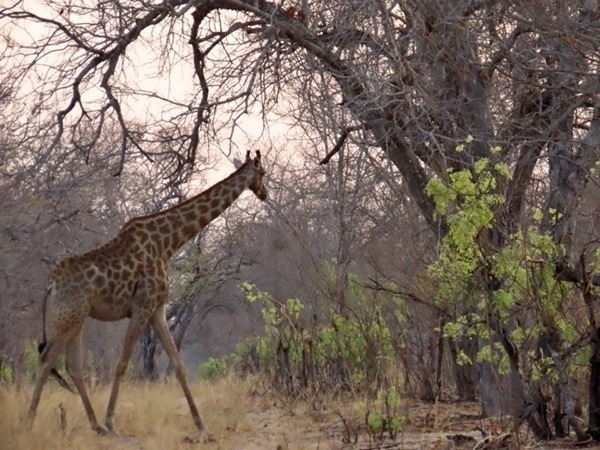
A giraffe out for a walk in the woods
Termite mound
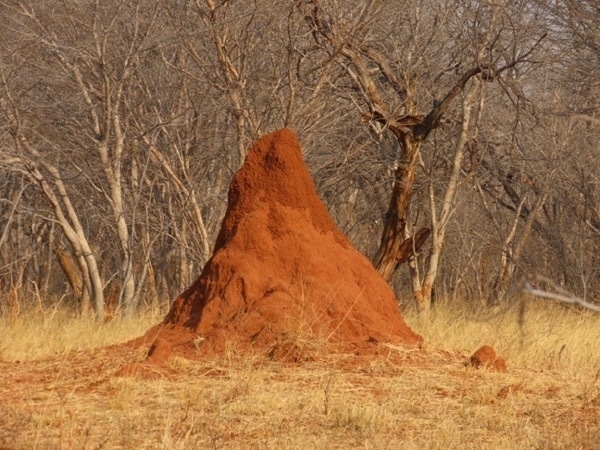
This termite mound is approximately 4 feet tall, but is 3-4 times that large underground where the termites actually live. Termites in Zimbabwe build gigantic mounds inside of which they farm a fungus that is their primary food source. The fungus must be kept at exactly 87 degrees F, while the temperatures outside range from 35 degrees F at night to 104 degrees F during the day.
The mound is constructed out of a mixture of soil, termite saliva and dung. Although the mound appears solid, the structure is incredibly porous. Its walls are filled with tiny holes that allow outside air to enter and permeate the entire structure.
There is a queen and king termite, workers and soldiers. The workers go out of the mound in search of food for the colony and bring it back through underground tunnels that lead back to the mound. Elephant poop is all grain. The termites cover the elephant dropping with mud, so the temperature inside the dropping is cooler. Once it is coated with the mud, the termites eat all the grain and transport it back to the mound to regurgitate it to residents in the mound. After the termites are finished with the elephant droppings, all that remains is the hollow dirt that once coated the dropping.
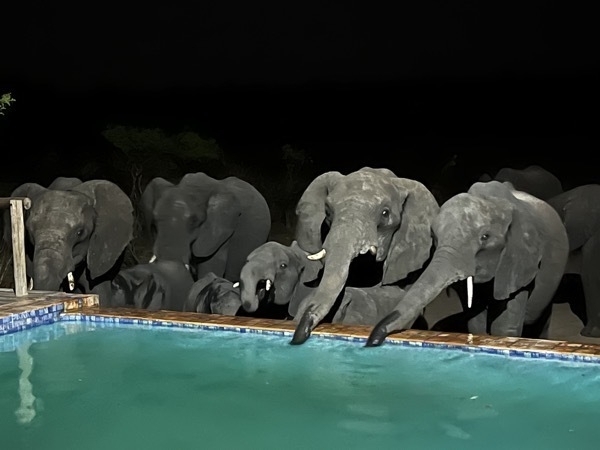
The elephants returned in the evening and stayed for over an hour and a half . It was the highlight of our day!
-
Victoria Falls Hotel and Zambezi River Cruise
We started the day with a bus ride to the Victoria Falls Hotel. The Victoria Falls Hotel is a historic luxury hotel at Victoria Falls, Zimbabwe, situated with a view of the Second Gorge of the Zambezi River and the Victoria Falls Bridge from its terrace. The hotel was opened in 1904 to accommodate passengers on the newly built National Railways of Zimbabwe railway, part of the planned Cape to Cairo Railway.
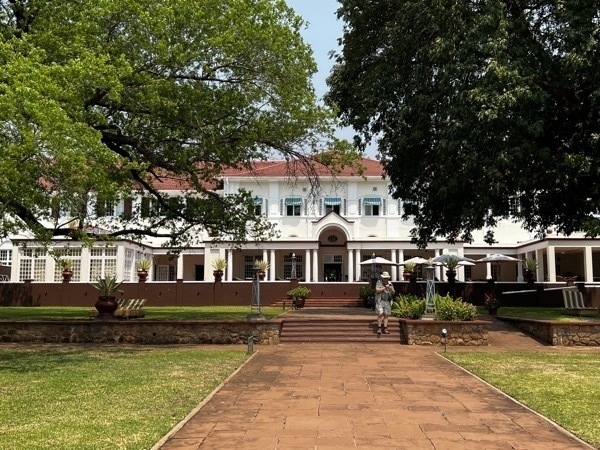
Victoria Falls Hotel
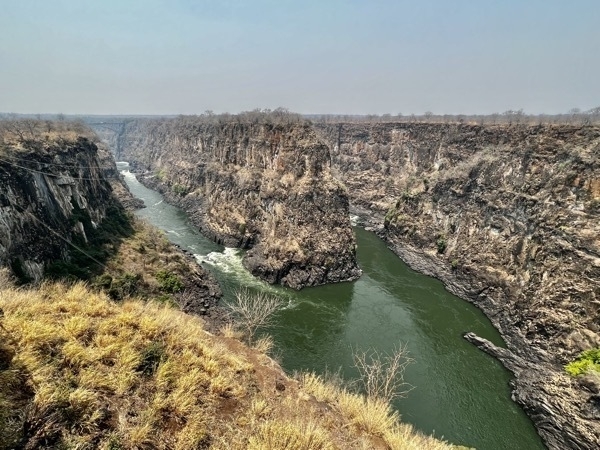 The Zambezi River flowing through Victoria Falls Gorge
The Zambezi River flowing through Victoria Falls Gorge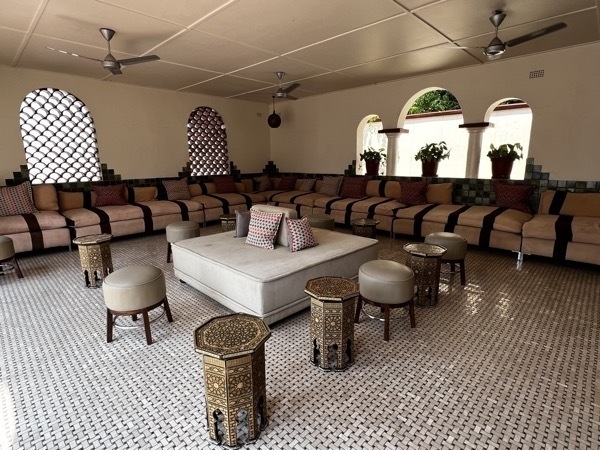
We enjoyed frozen lemonades with mint on the terrace.
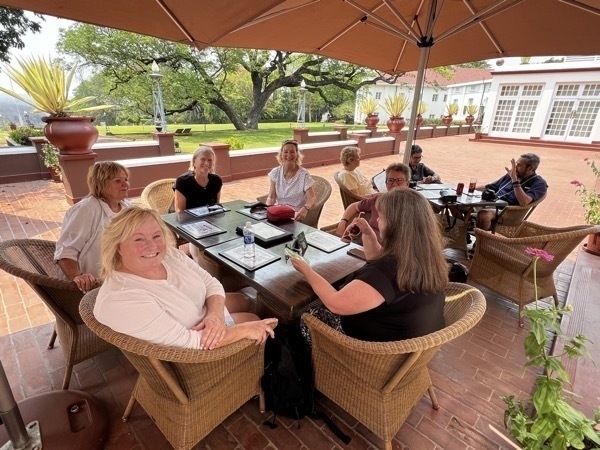
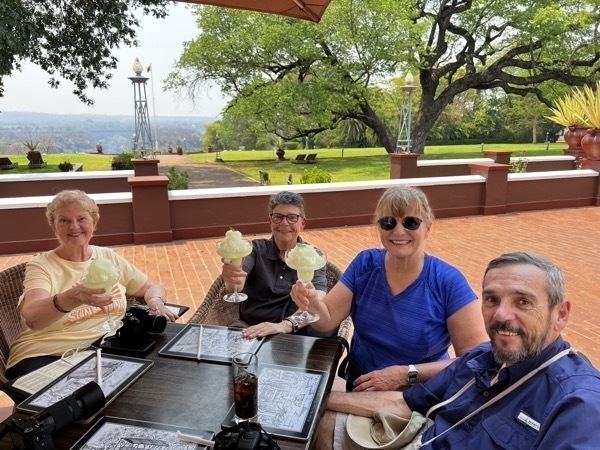
We ate lunch at the Wild Horizans Cafe. When we walked out of the restaurant, there were four warthogs grazing on the lawn but these two looked so cute!
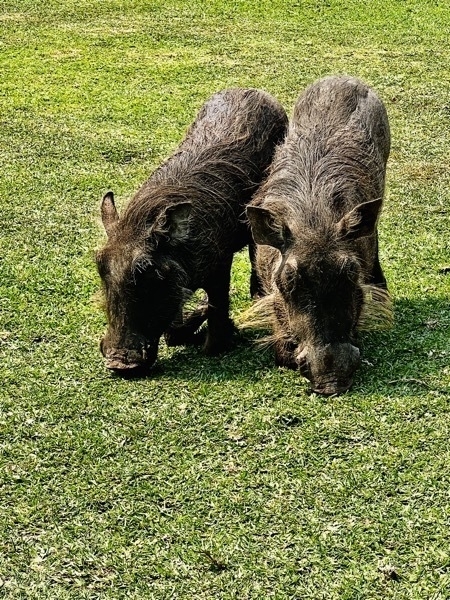
Warthogs
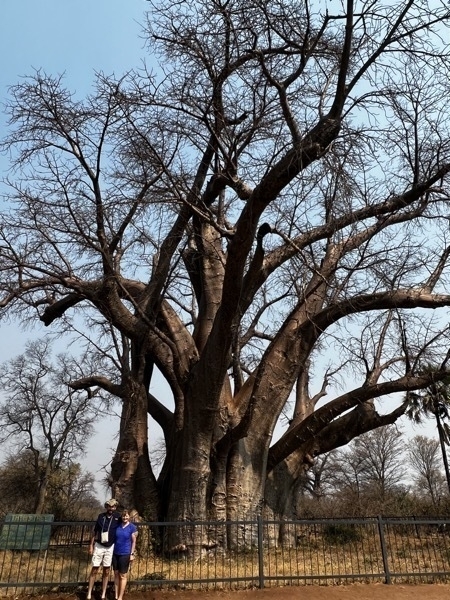
This is a baobab tree. It is estimated to be between 1,000 and 1,500 years old.
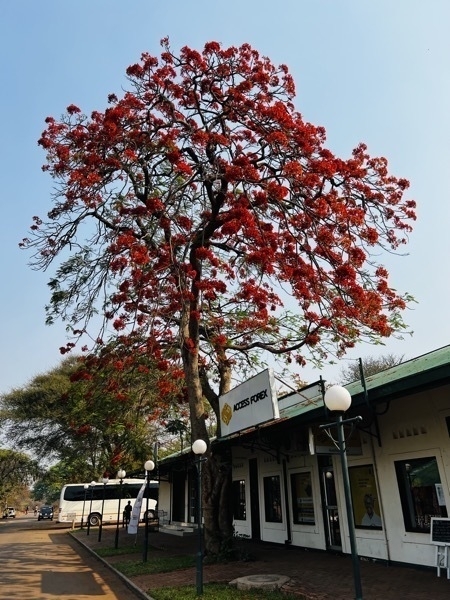
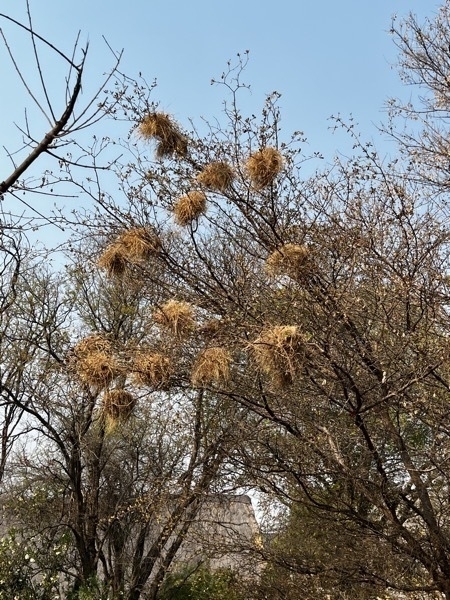
We took a two-hour boat ride on the Zambezi River while special guest lecturer Chris Ward told us about Dr. David Levingston’s life and journeys through Africa.
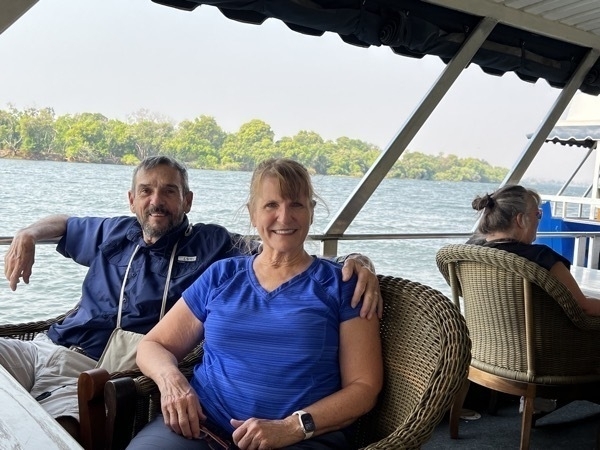
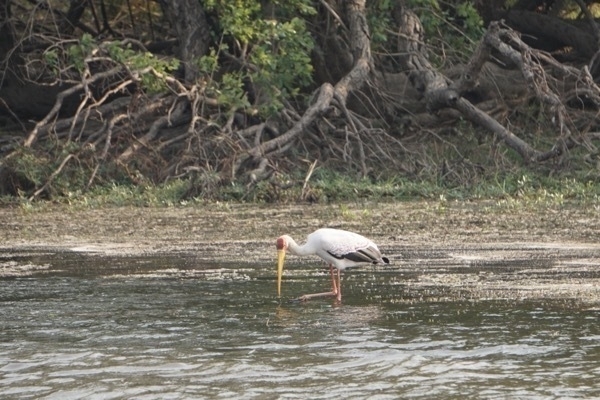
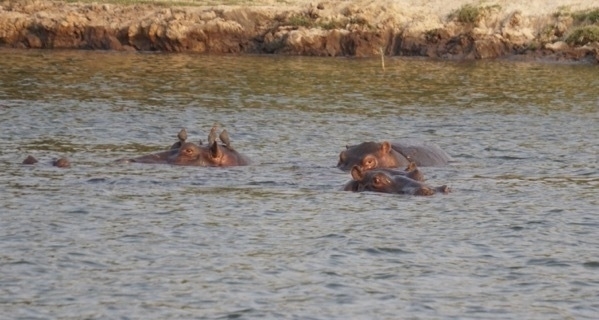
Hippos
The unexpected highlight of the boat ride was seeing the elephant herd cross the Zambezi River
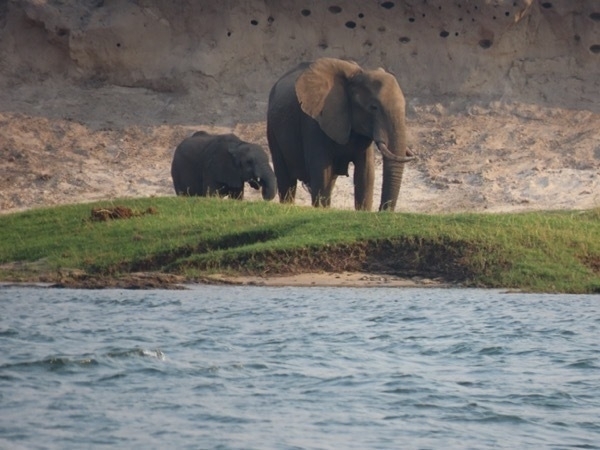
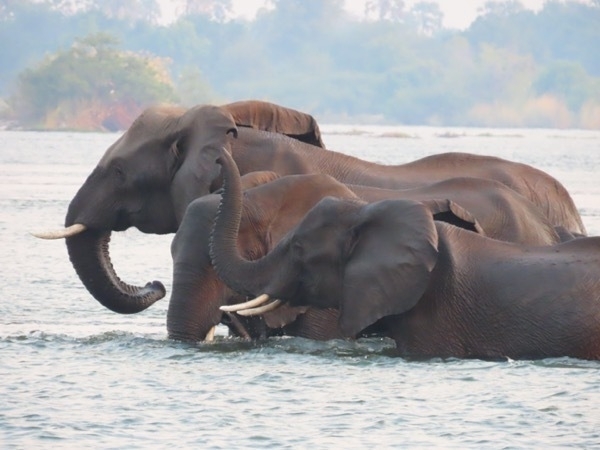
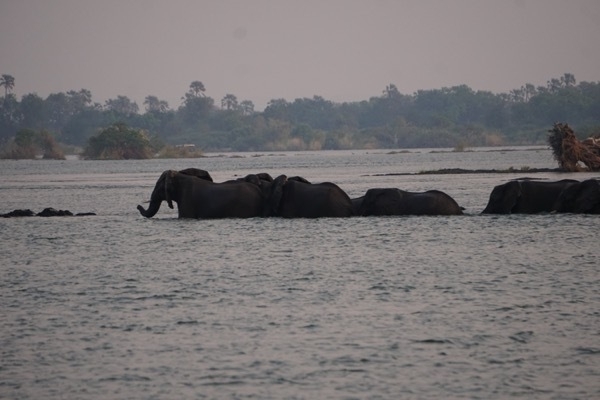
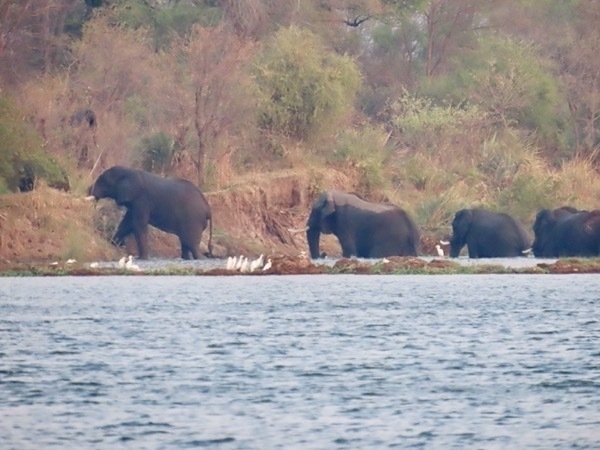
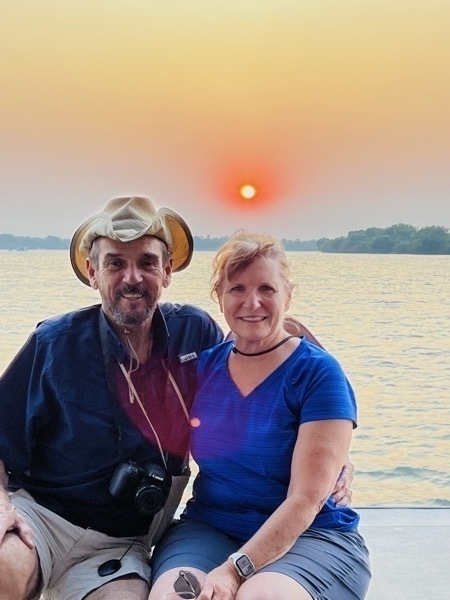
-
Victoria Falls, Zimbabwe
Today we started the day with a stop at the Victoria Falls Craft Market.
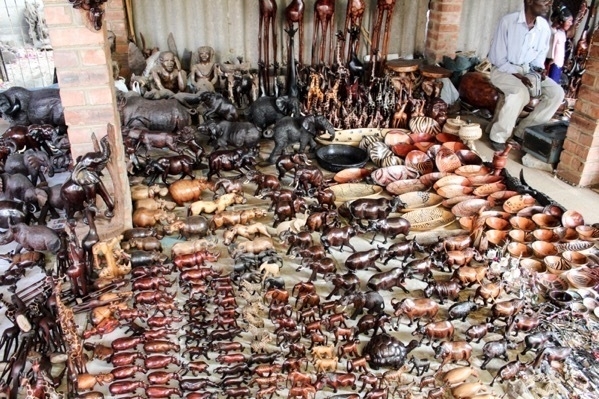
Most of the goods were handcrafted from wood and were very pretty.
Afterwards, we visited the Chinotimba Primary School where 1600 students attend grades K -5. Students performed some dances for us, a 5th grader welcomed us, and the assistant principal told us about the school. There are 50 students in each classroom! Also, the assistant principal told us that teachers are paid very little and as an assistant principal he earns $32 a MONTH!
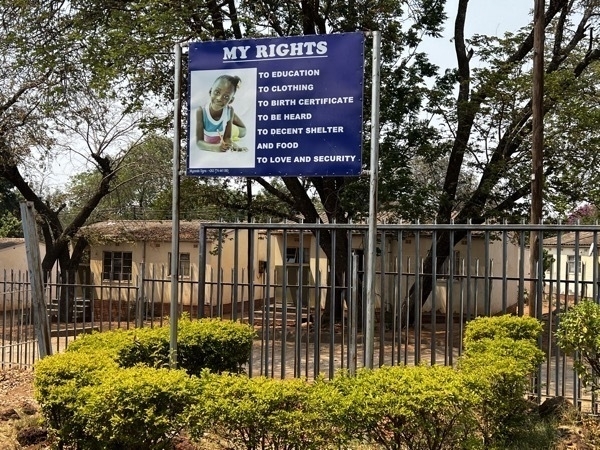
Chinotimba Primary School
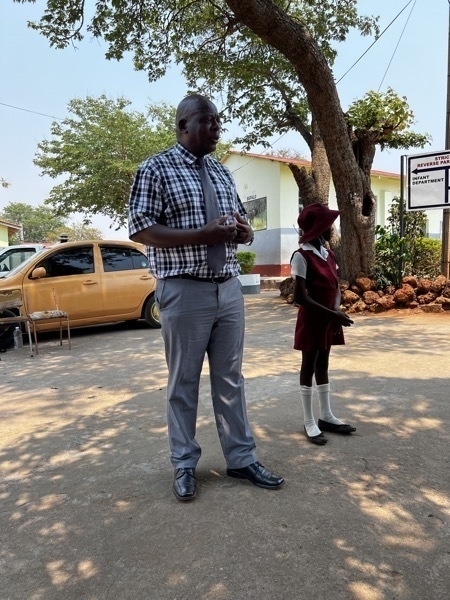
The Vice Principal Victor with a 5th grade student welcoming us to their school.
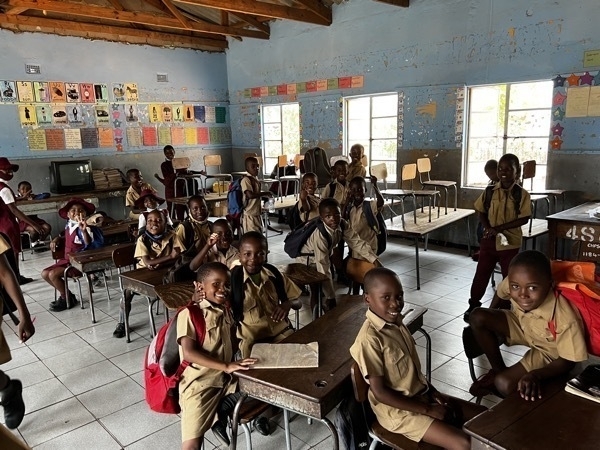
Our next stop was a private home for an authentic Zimbabwean meal. Our meal consisted of caterpillars (a delicacy which I did not try), samples of sautéed kale, sautéed kale with peanut butter, black eyed peas, tiny fish (kapenta), green beans and carrots, and peanuts. We had a polenta, beef and gravy and chicken and gravy as the main meal.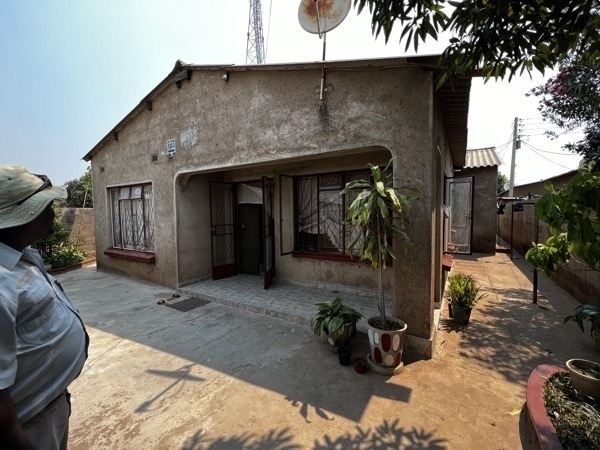
The home where we were guests for lunch
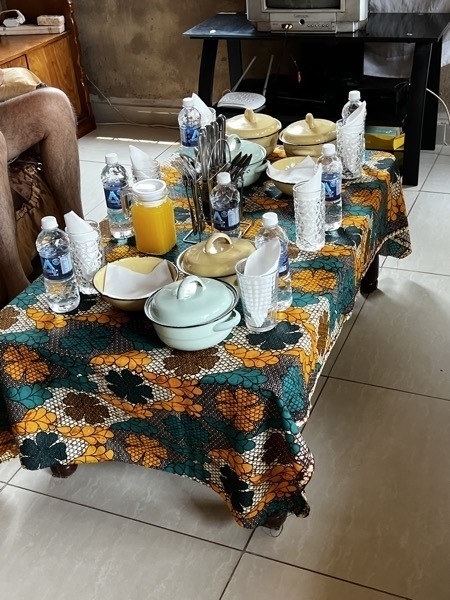
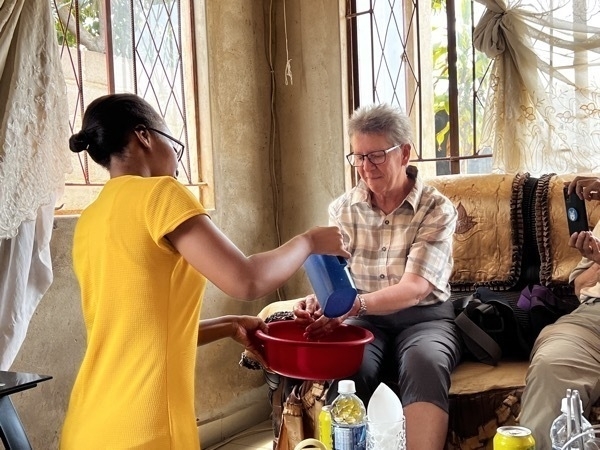
It is a tradition for the hostess to wash the hands of the guests before they eat. The meal is typically eaten with our hands (but our hostess did provide silverware for the less adventuresome).
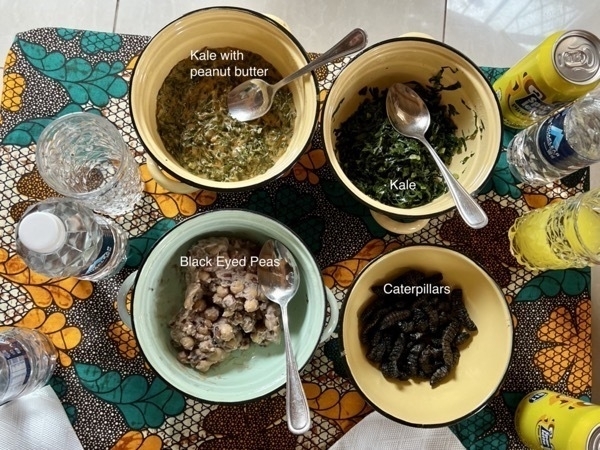
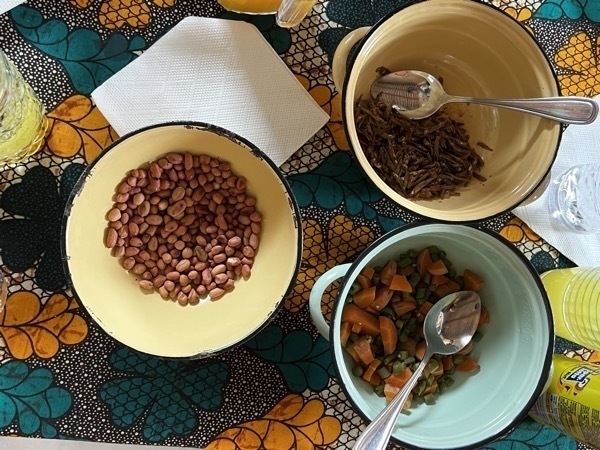
This afternoon, we took a guided walk for 3 miles to the very edge of Victoria Falls, a UNESCO World Heritage Site and one of the Seven Wonders of the World.
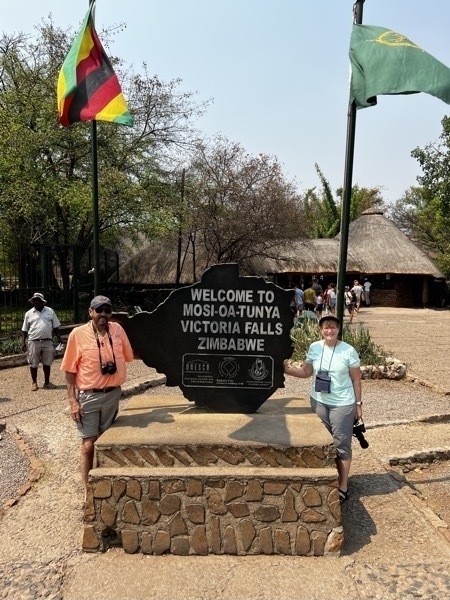
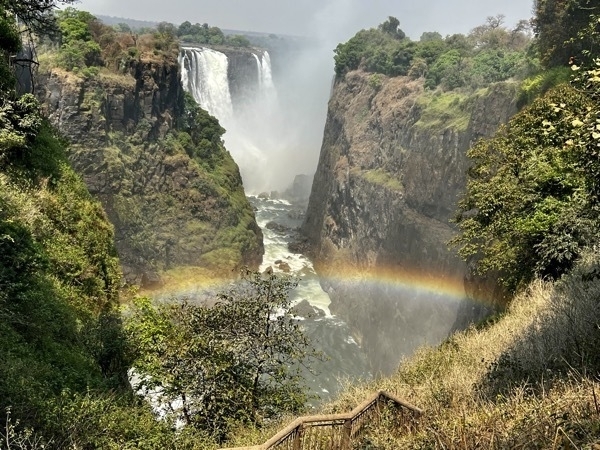
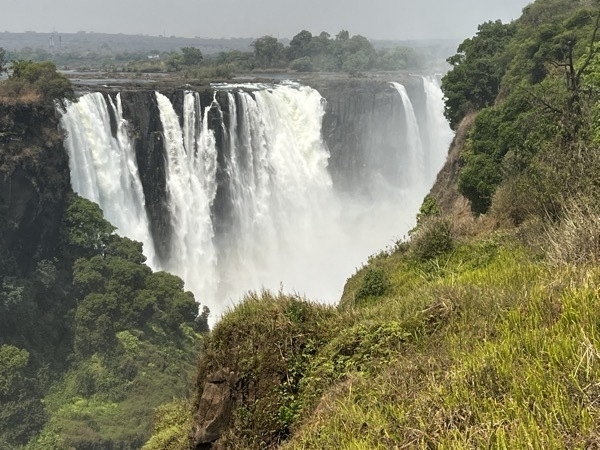
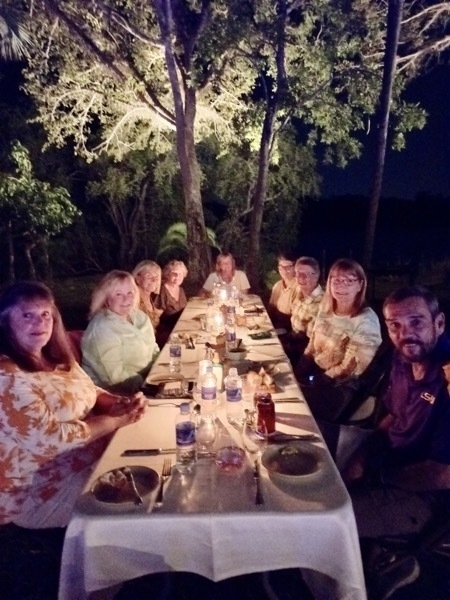
We ended the evening with a delicious dinner on the lawn by the Zambezi River. At dark we saw two water buffalo walk onto the property. -
Zambia to Zimbabwe
We flew from our campsite near Lazyview, South Africa to the country of Zambia. There we went through customs, purchased our $50 visa, and then drove 20 minutes to the country of Zimbabwe. Our luggage and we were loaded on a bus in Zambia where we were driven to the border of Zimbabwe. There we got off that bus, walked through passport control, got back on the bus, stopped again to go through passport control to get into Zimbabwe. We transferred to another bus that brought us to the town of Victoria Falls where we are staying at the The Palm River Hotel.
We had a leisurely afternoon with appetizers on the hotel’s beautiful grounds along the Zambezi River with a delicious dinner on the porch of the resort.
We spotted baboons and mongoose running around on the grounds this afternoon and were warned to always keep our doors shut to keep the baboons and monkeys from entering.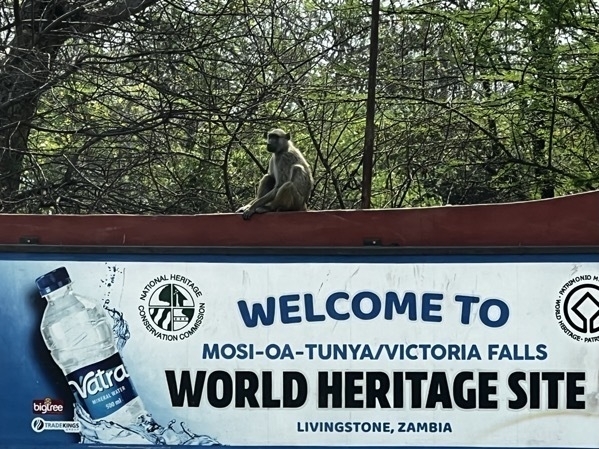
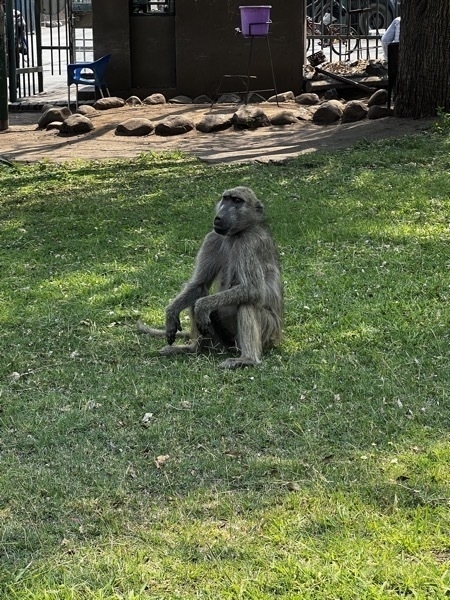
When we walked out of the building for passport control, we saw this baboon sitting on the lawn.
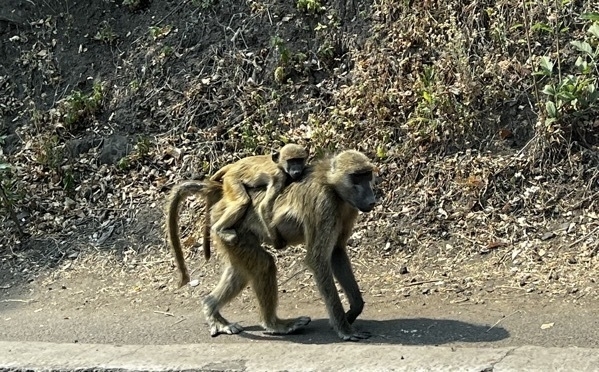
These baboons were walking down the sidewalk as we were driving toward the border.
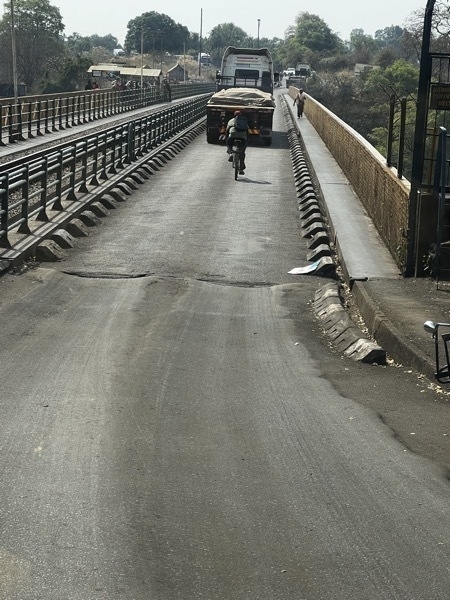
Only one truck at a time is allowed on this bridge and there can be hundreds of trucks lined up to cross. Sometimes the truck is five miles long.
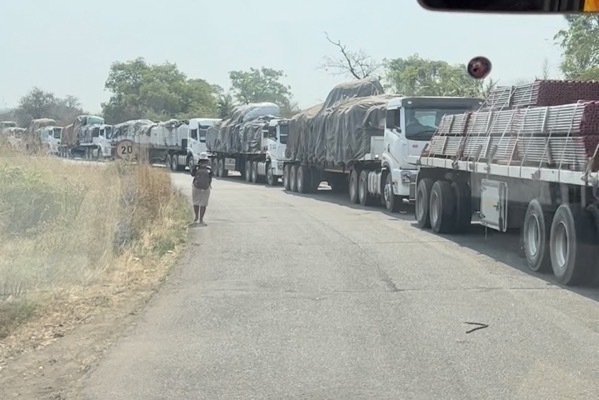
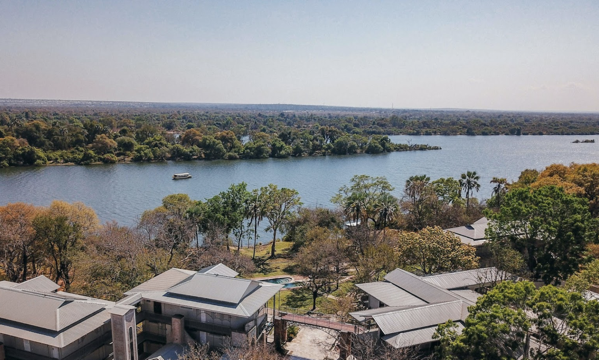
An aerial view of our lodging at Palm River Resort
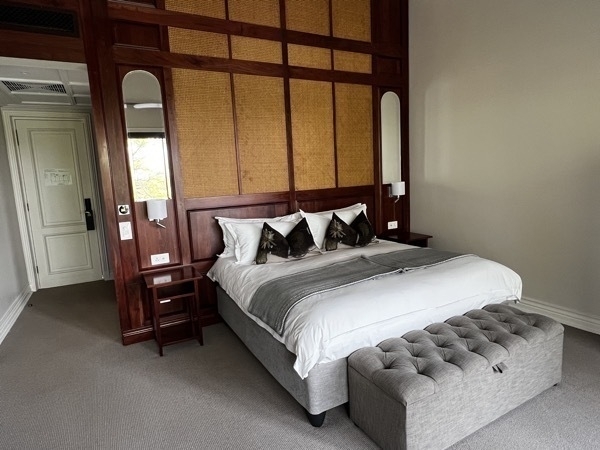
Our room on the third floor (no elevators)
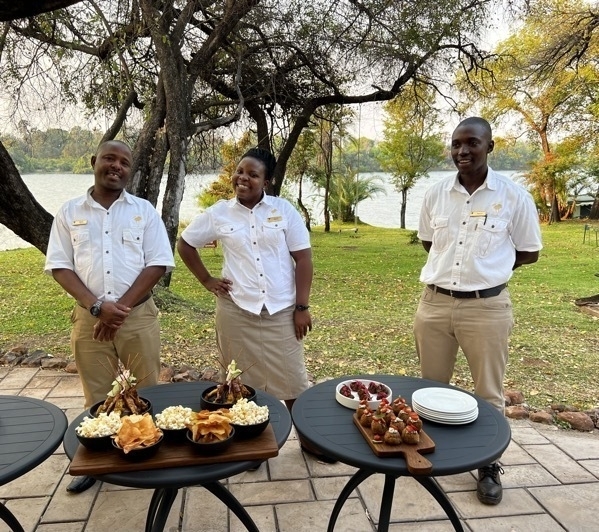
We had appetizers of chicken on a stick, mozzarella stuffed meatballs, regular meatballs, homemade potato chips and popcorn. After we served our plates and were seated at the table, a baboon jumped up and stole a chicken on a stick (and broke a plate while making his getaway)
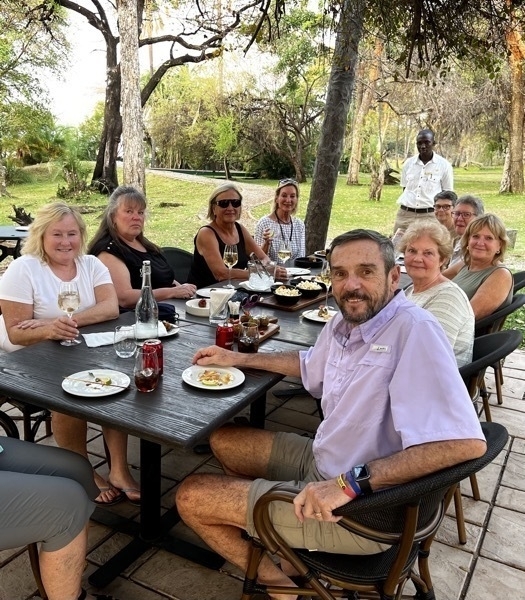
!
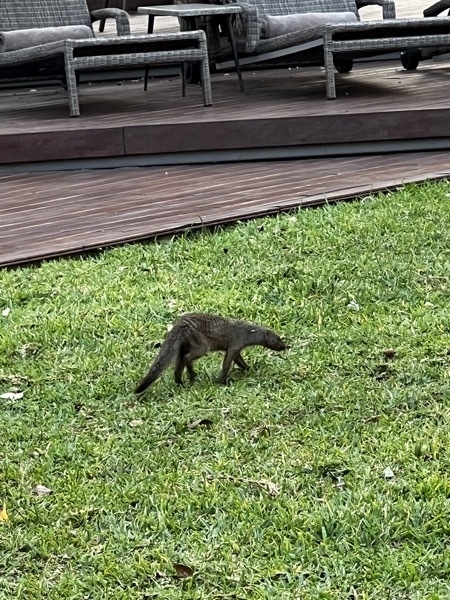
Fact for the day: a group of mongoose are called a “business of mongoose.” We saw thirty or so.
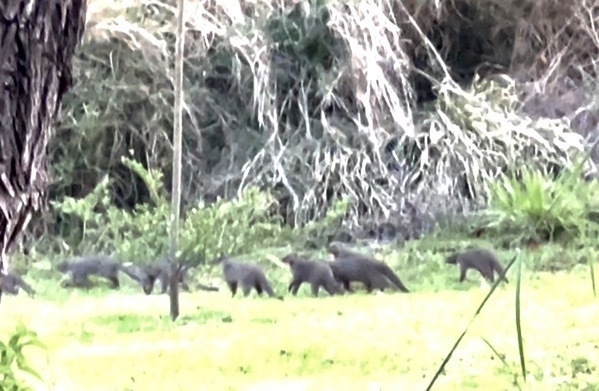
Not that clear, but I screenshot it from a video.
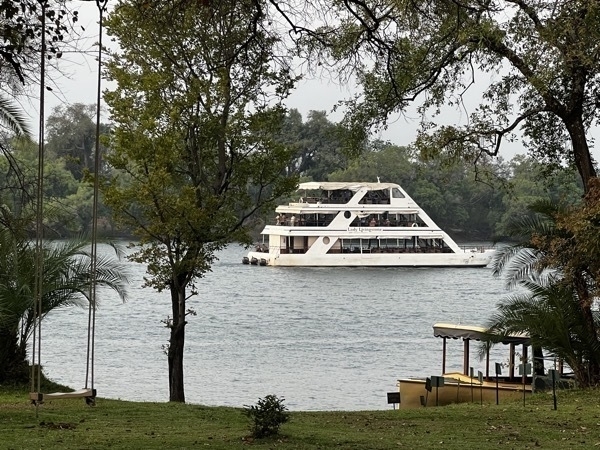
A boat cruising by as we sat and ate our appetizers.
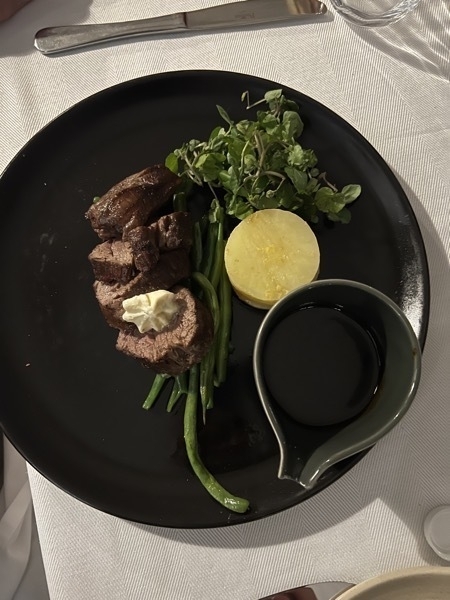
Filet, green beans and potatoes for dinner
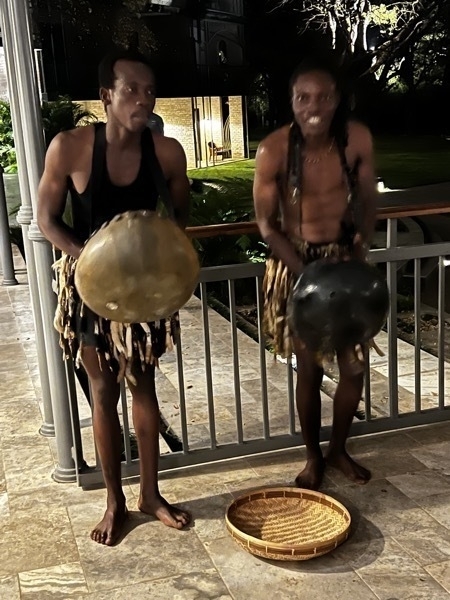
Our mealtime entertainment
-
Kruger National Park - Day 2
Our driver took us from our campsite at Lions Rock Rapids Camp to Kruger National Park where we transferred to the safari vehicle for our six hour game drive, The temperature was much cooler (high 70s )this morning and stayed pleasant (mid 80s) the rest of the day. We were so fortunate to see so many new animals today that we didn’t see yesterday.
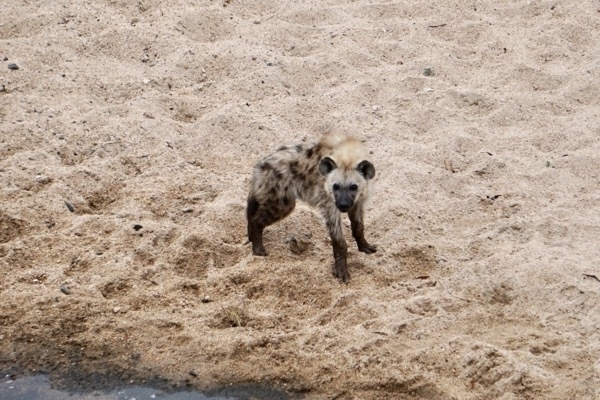
Hyena
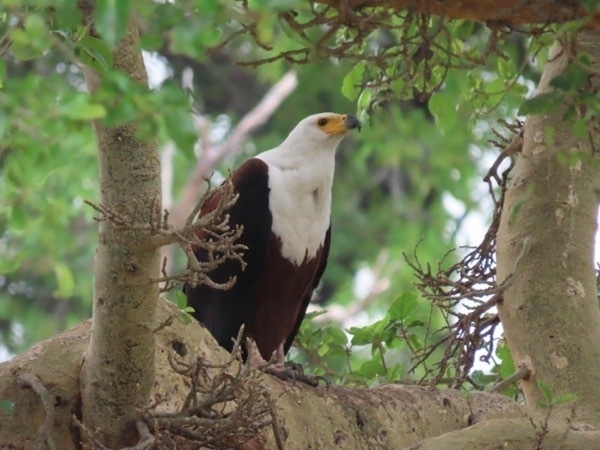
African Fish Eagle
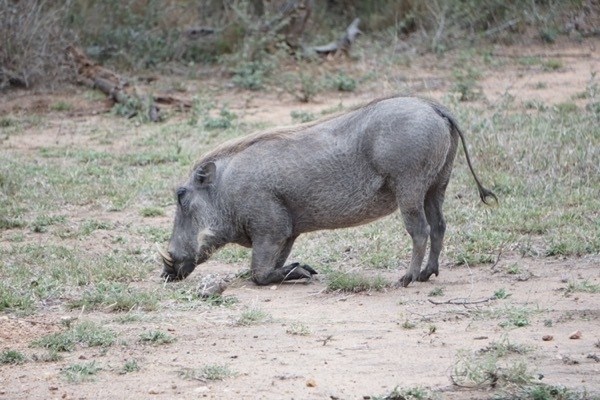
Warthog
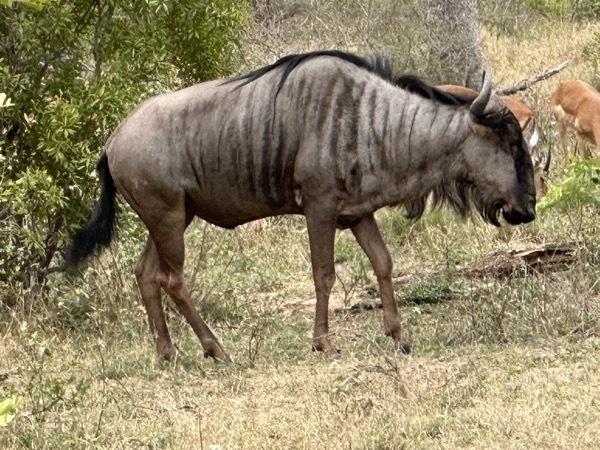
Wildebeest
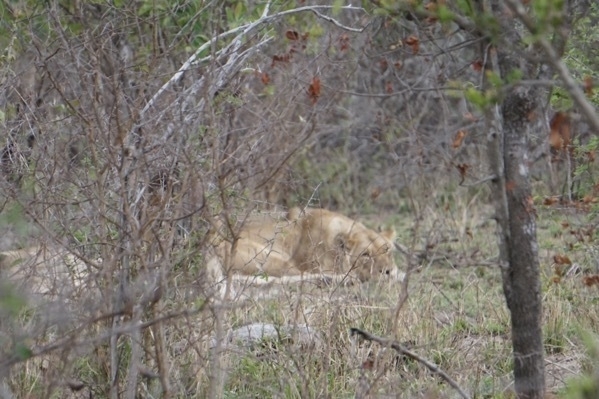
Lioness
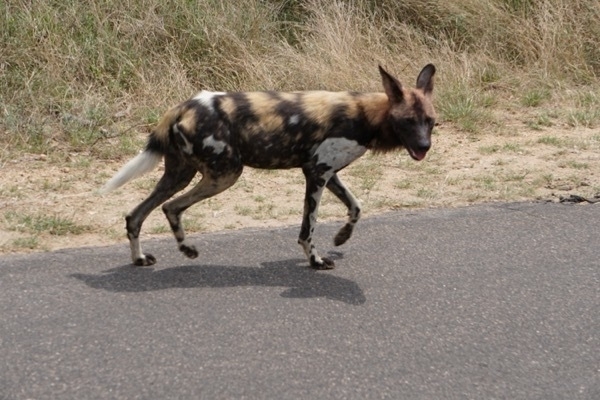
Painted Dog
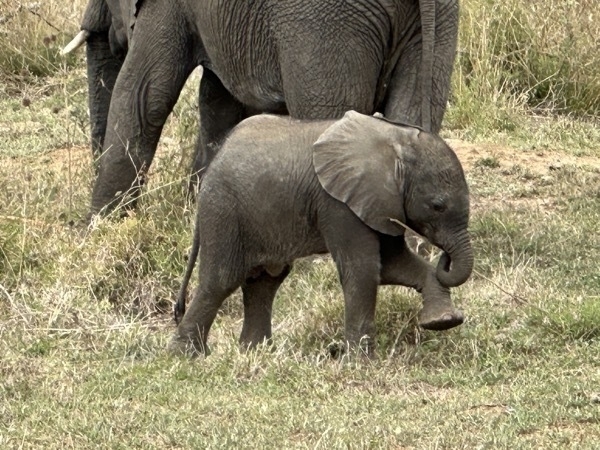
Baby Elephant
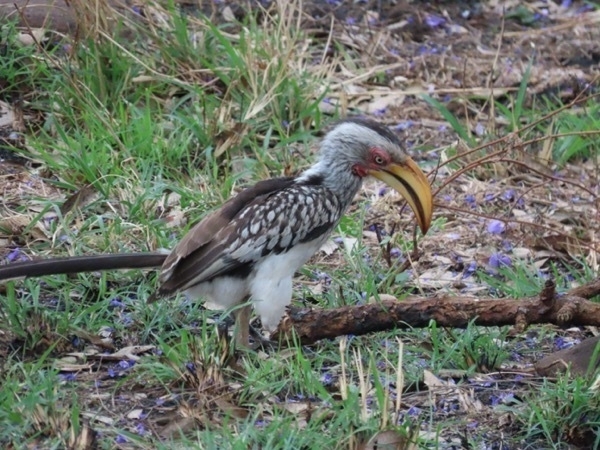
Yellow billed Horn Bill
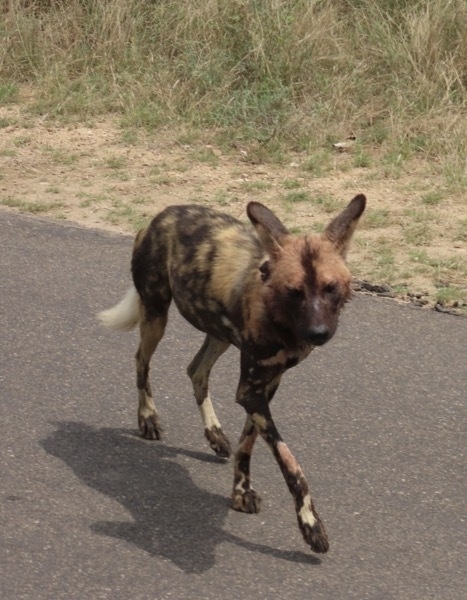
Painted Dog
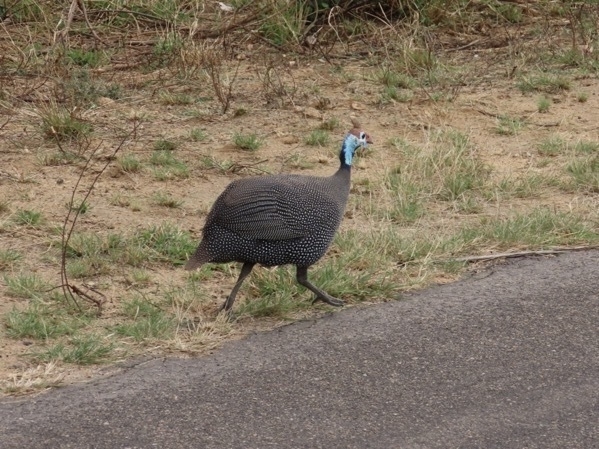
Blue helmeted guniea
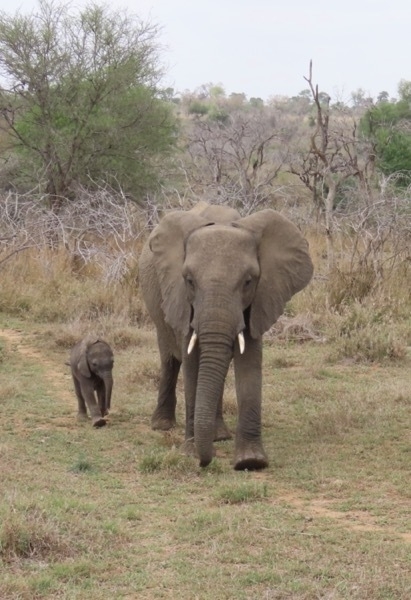
-
Kruger National Park - Day One
We left our campsite at 8:00 this morning for a 40 minute drive to Kruger National Park.
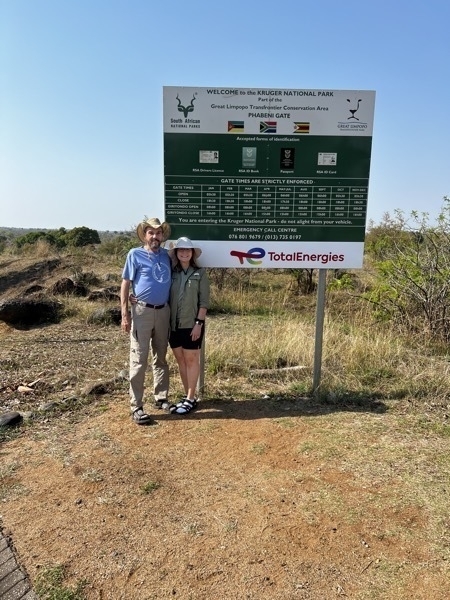
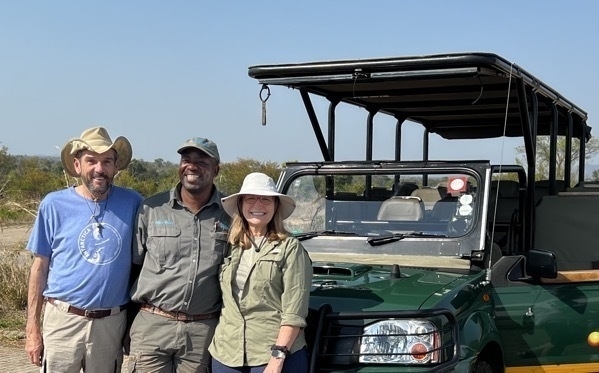
Here we are with our safari driver Happy (who did an excellent job of finding the animals for us to see).
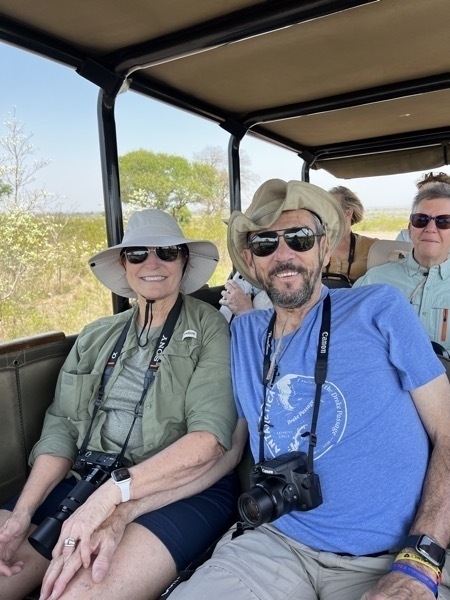
Our tour guide Johanna gave us a Souther African Animal checklist so we could mark off the animals we saw while on the game drive. We ended up spotting 13 animals and 4 birds, so the day was definitely a success. It was definitely a hot day, but with the jeep on the move, it really wasn’t too bad. We were in the park almost six hours before heading back to our camp.
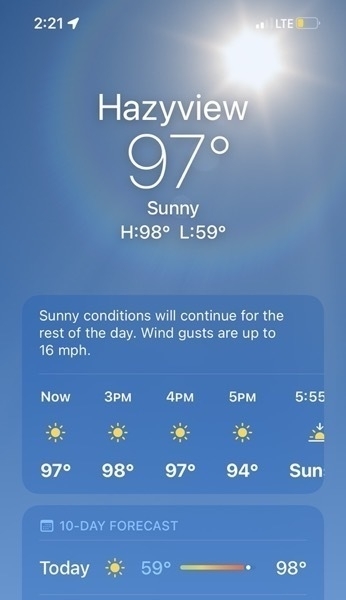
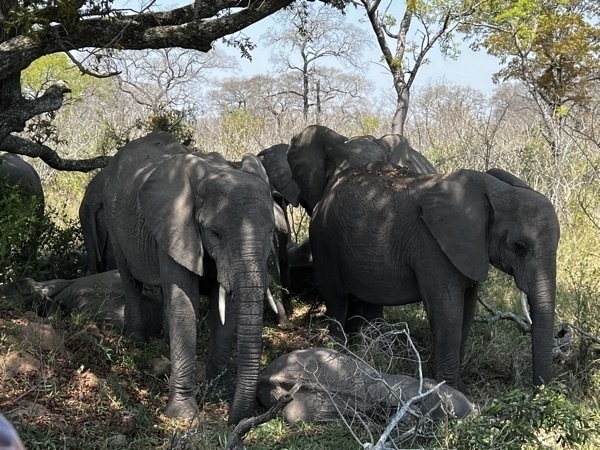
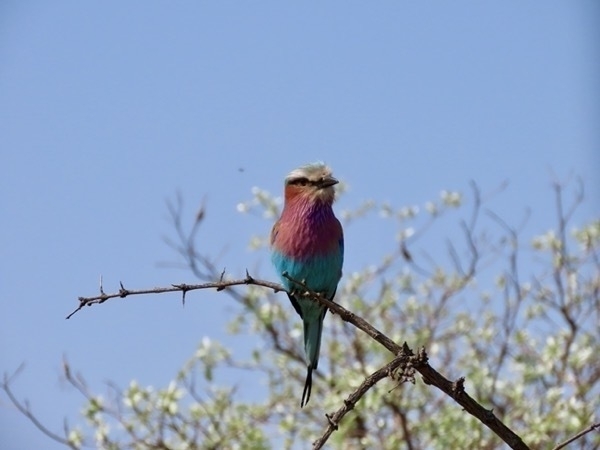
Lilac breasted roller
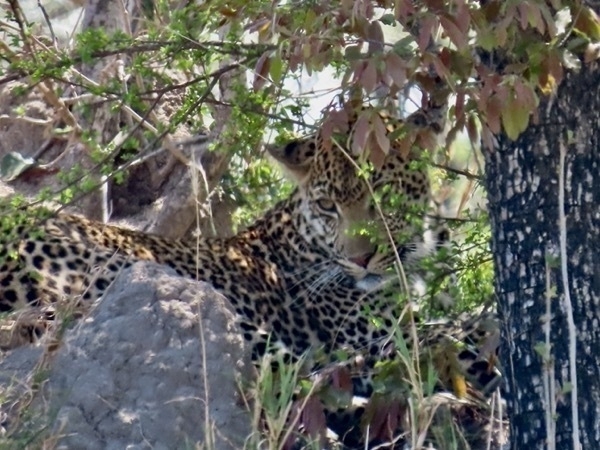
Leopard
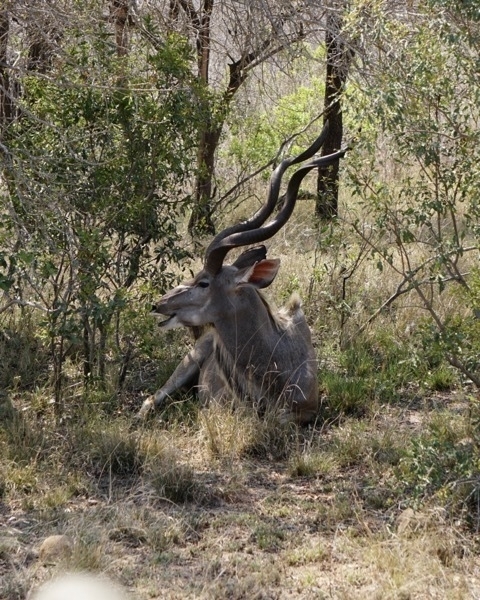
Waterbuck
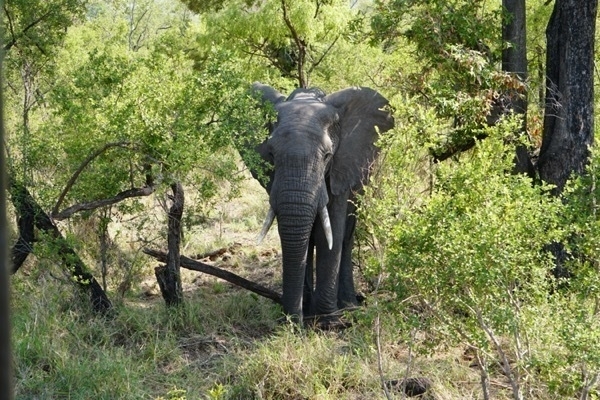
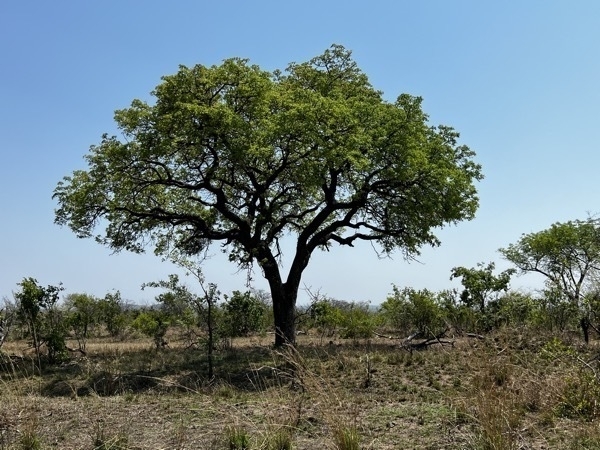
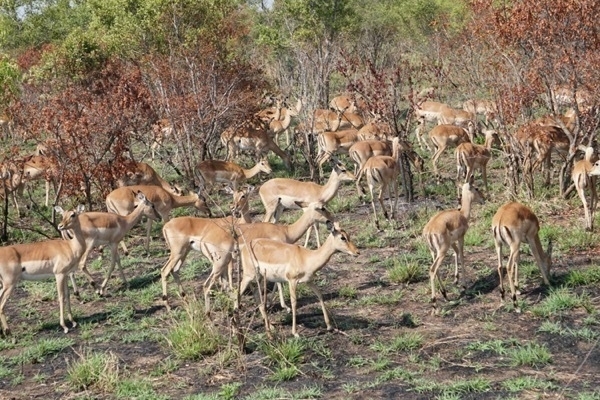
Impalas
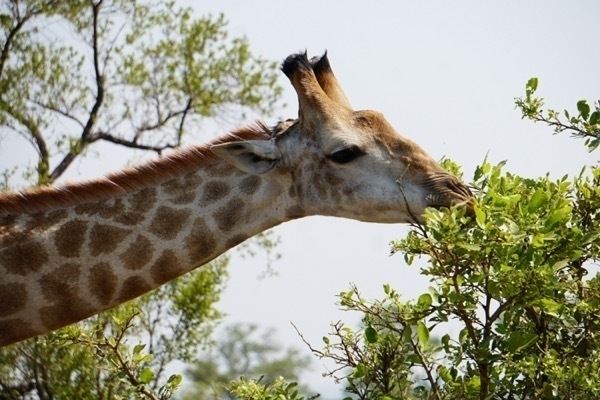
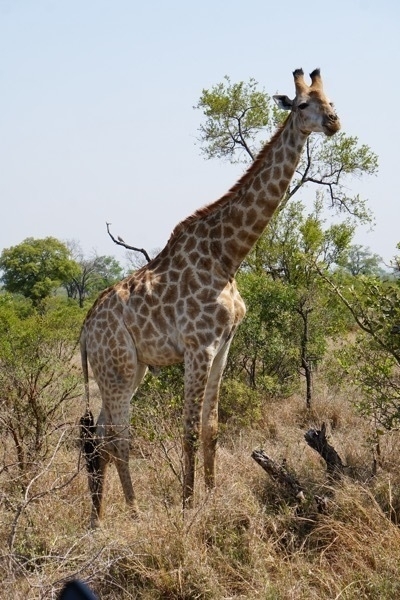
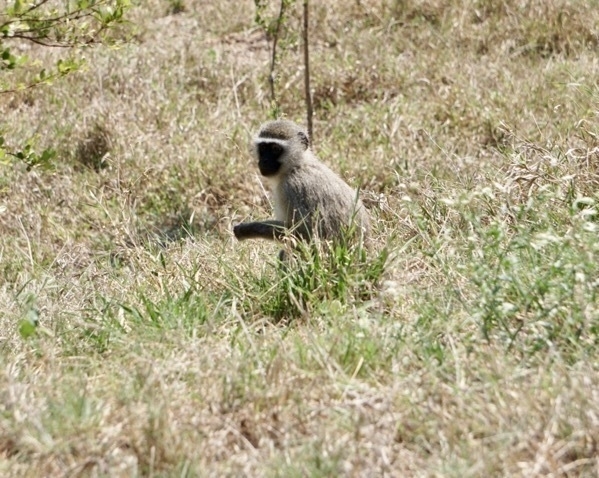
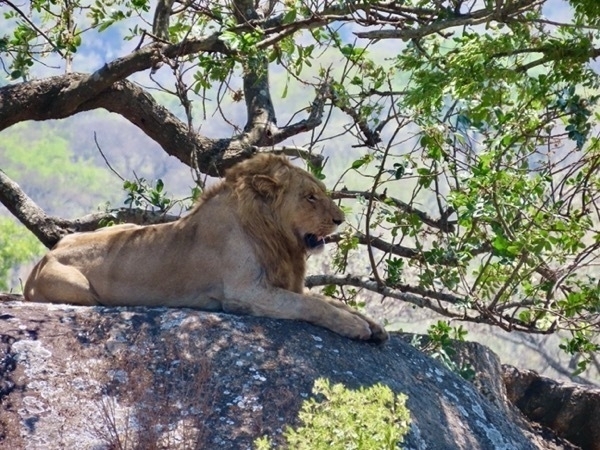
T
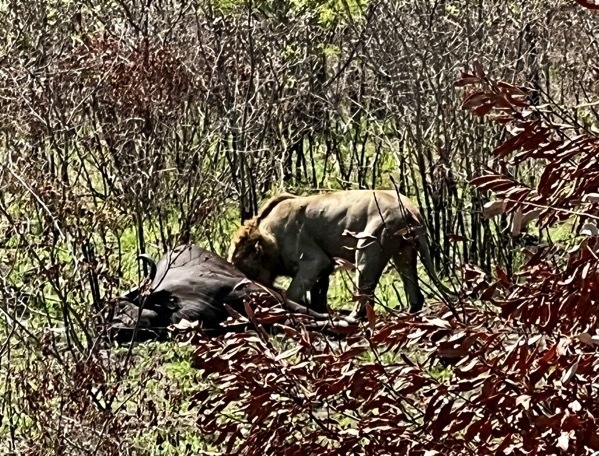
The lion eating a water buffalo
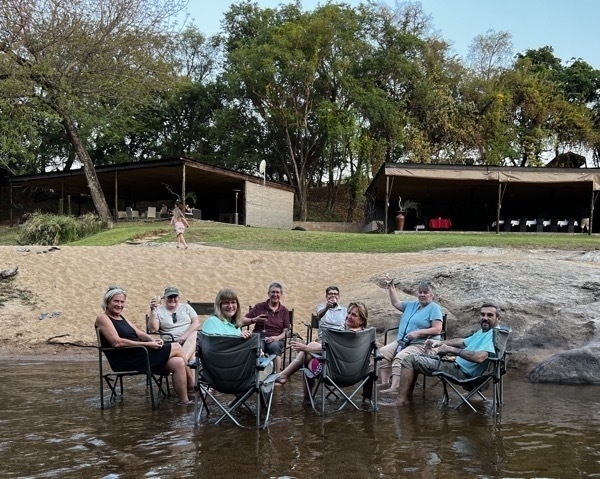
We were all very hot and tired after returning to the camp. After taking a short nap, we dipped our feet in the water and enjoyed drinks before dinner.
-
Lions Rock Tent Camp
After breakfast at the hotel, we were taken to the airport for a 50-minute flight to Kruger Mumalanga Airport, followed by a 1-hour road transfer to our tented safari camp on the banks of the Sabie River. This is our base for exploring Kruger National Park and it’s Big Five animals.
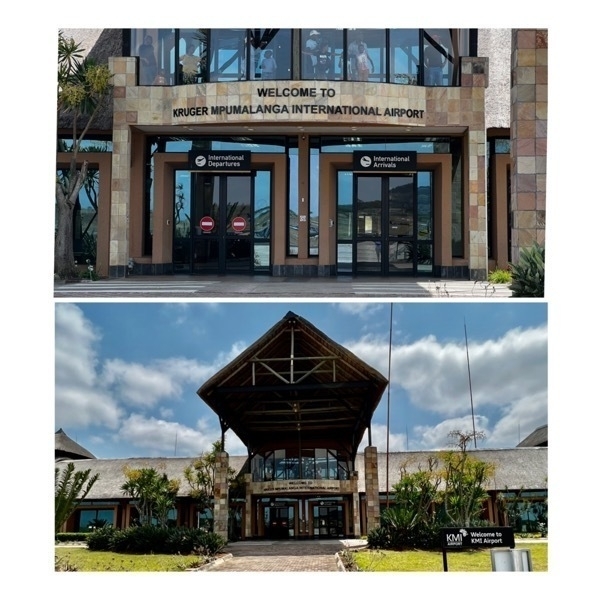
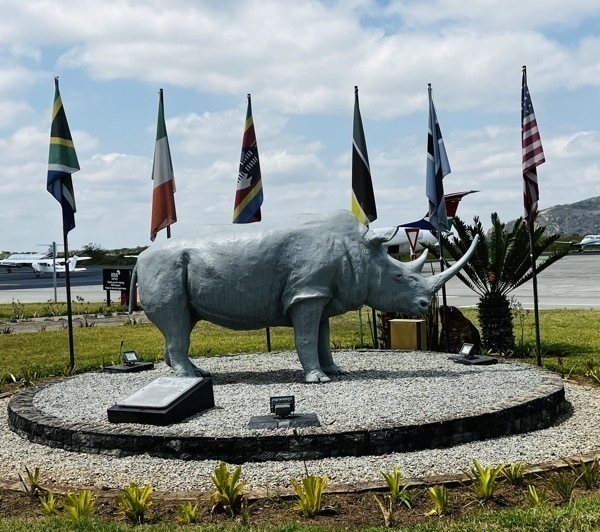
Lions Rock Rapids Camp
We were greeted by a group of high school singers and dancers who entertained us while we enjoyed a late lunch.
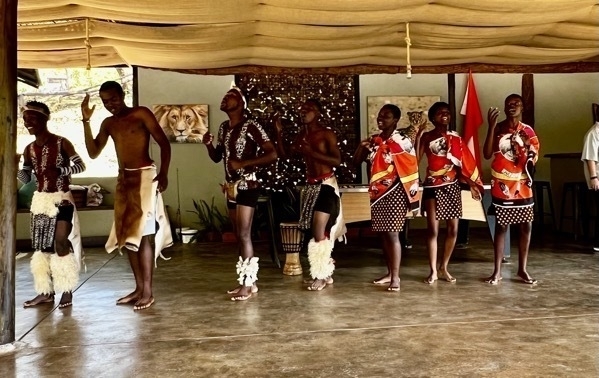
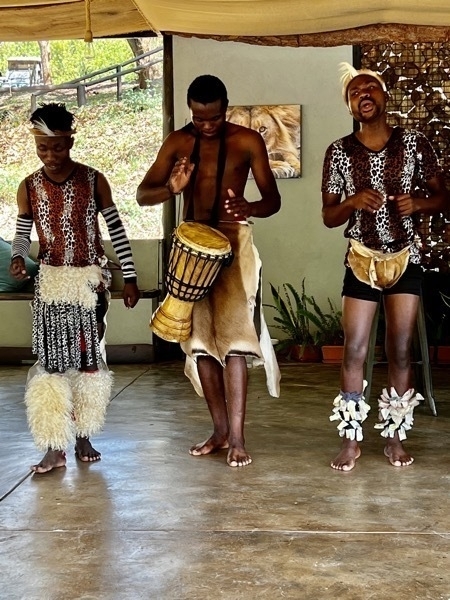
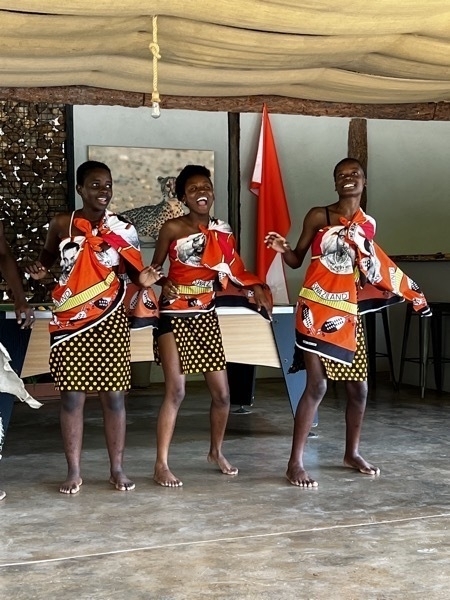
After lunch we were escorted to our private tent suite that we are staying in for the next three nights. We have a private porch that overlooks some rapids, an air conditioned room with a private bath.
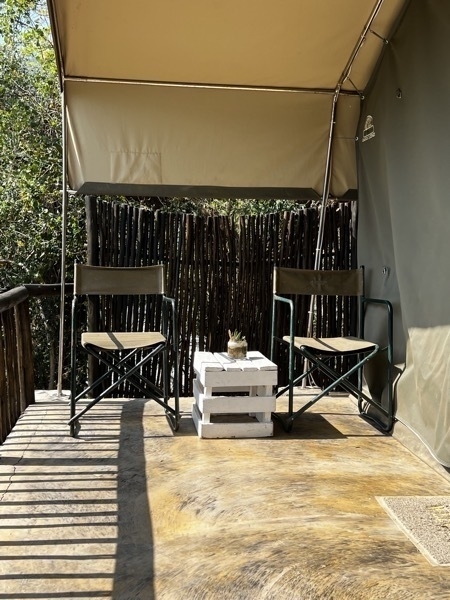
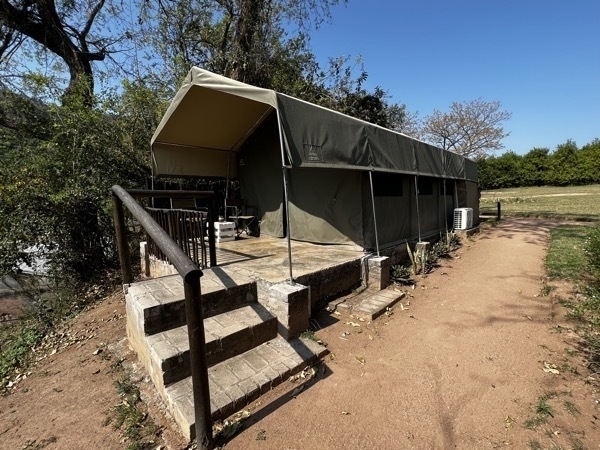
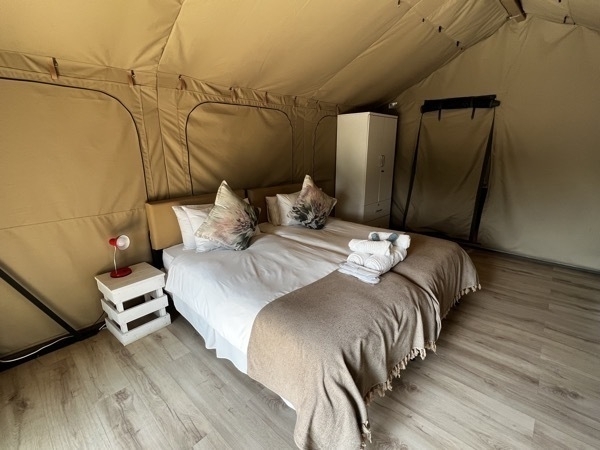
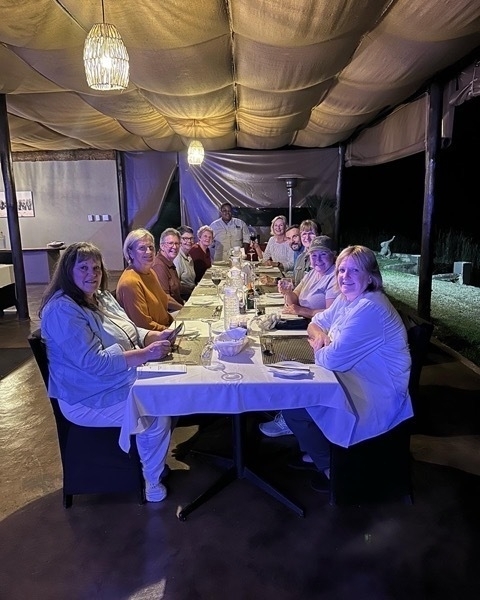
Dinner was served outside by the rapids.
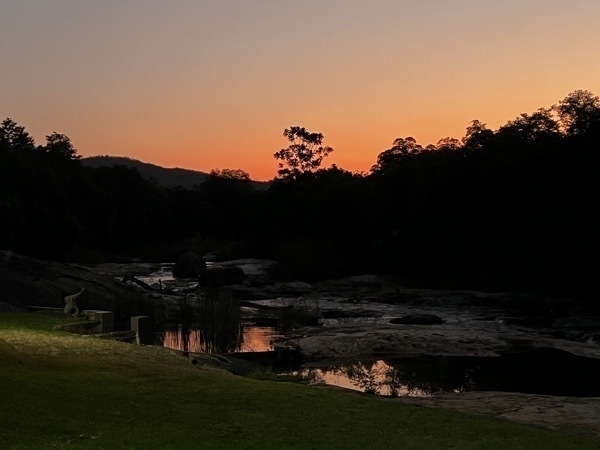
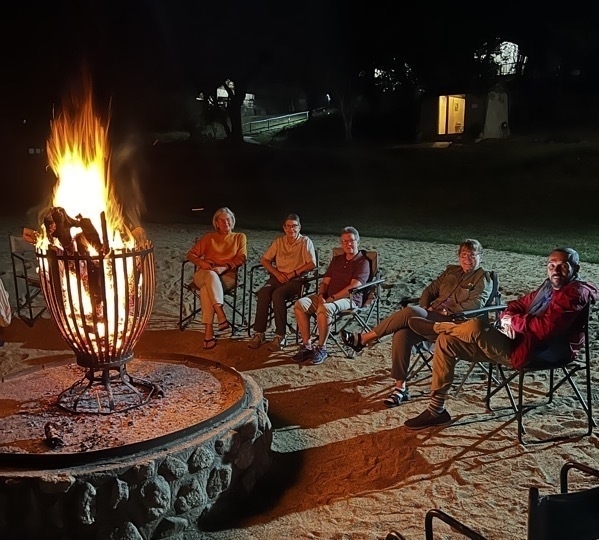
Perfect way to end the day!
-
Soweto, South Africa
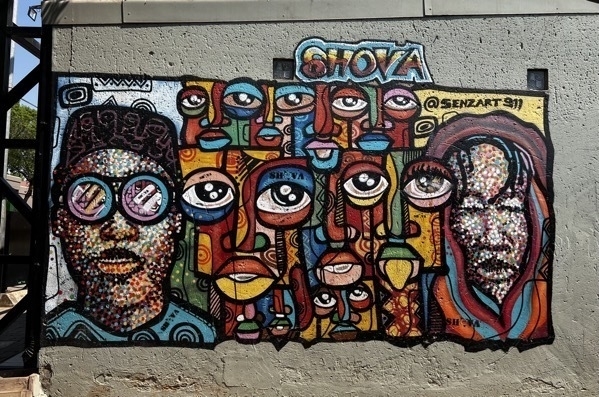
After breakfast at the Houghton Hotel, we boarded our 16 passenger bus for a narrated tour of Soweto, South Africa. This area was originally set aside by the South African white government for residence by Blacks, it adjoins the city of Johannesburg on the southwest; its name is an acronym derived from South-Western Townships. It is the country's largest Black urban complex.
Soweto grew out of shantytowns and slums that arose with the arrival of Black laborers from rural areas. These areas today have no running water in the homes or toilets. There are Porta Potties inside the neighborhoods where ten families use ONE potty. Trash pickup is supposedly once a week, but the whole area is covered in trash as though there were no pick up at all.
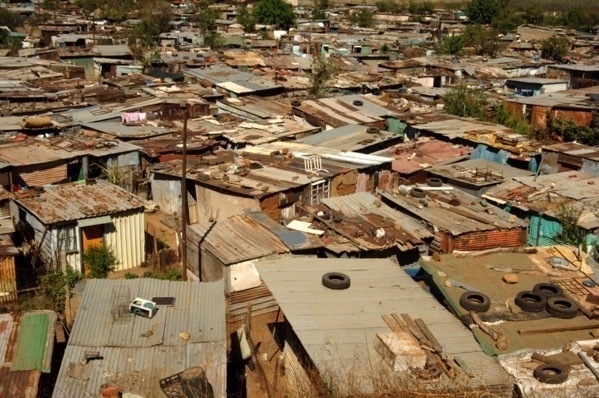
We passed neighborhoods with long buildings called hostels which were built to be used by men only. There is no privacy in these buildings, no sanitation and no running water.. A person’s personal space and now often a family's space is only limited to the space immediately surrounding a single bed, hence the term “bedhold.”
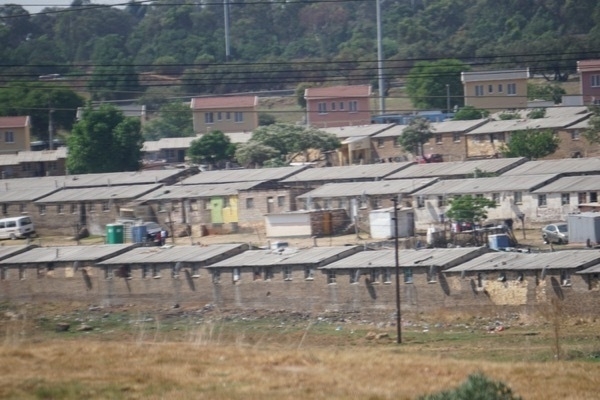
Apartment buildings were built in an attempt to deliver decent living conditions, but these particular buildings pictured below have been vacant in the nine years since they were built because they are unaffordable to the people that need them.
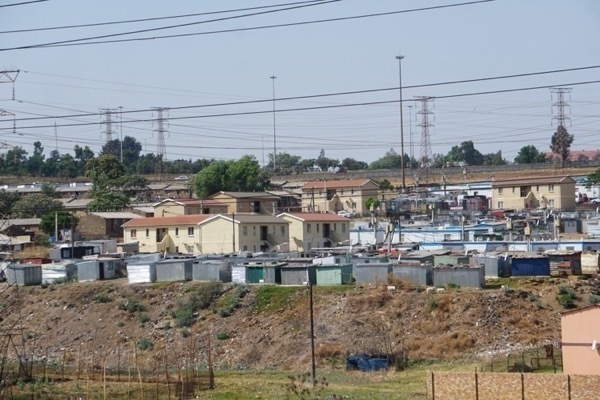
Nelson Mandela’s home
Nelson Mandela is the former president of South Africa. He was a protester, prisoner, and peacemaker. He was a hero for South African non-whites by getting rid of the apartheid system during which time he was infamously incarcerated at Robben Island Prison (1964–82).
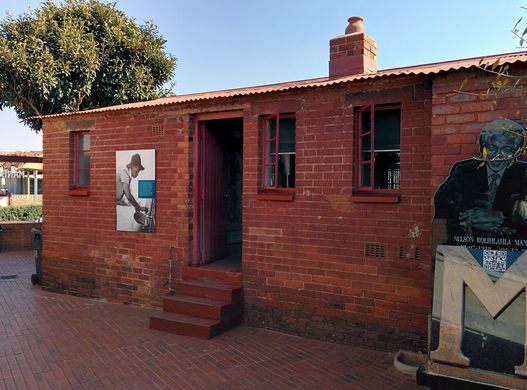
Nelson Mandela lived here with his family from 1946 until his arrest in 1962.
He became famous in South Africa for his political and anti-apartheid activism during this period. His second wife Winnie Mandela and their children remained here throughout his imprisonment. Winnie was subjected to routine harassment and imprisonment herself during her husband’s incarceration. He only lived there 11 days after he was released from prison in 1990. The house had no electricity. Cooking was done of the wood stove which was also used to heat the house.
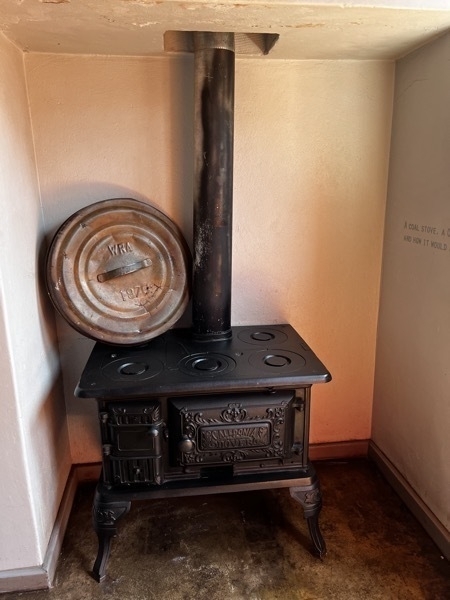
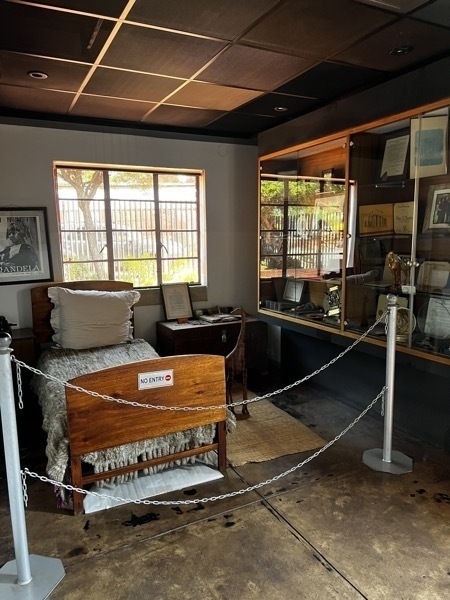
This was the actual bed in which 6’4” Nelson Mandela slept.
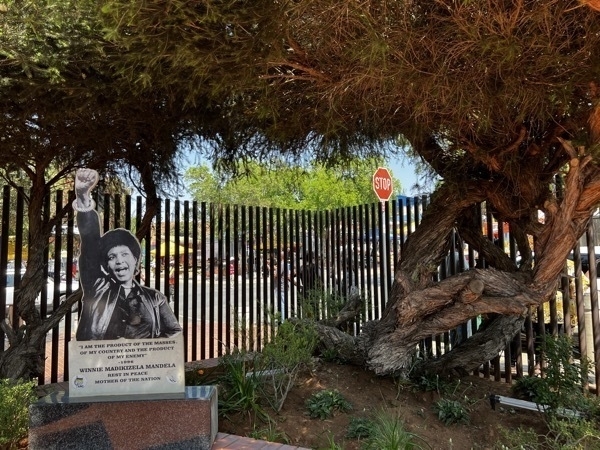
The umbilical cords of Mandela’s children and grandchildren are buried in the ground at the base of this tree.
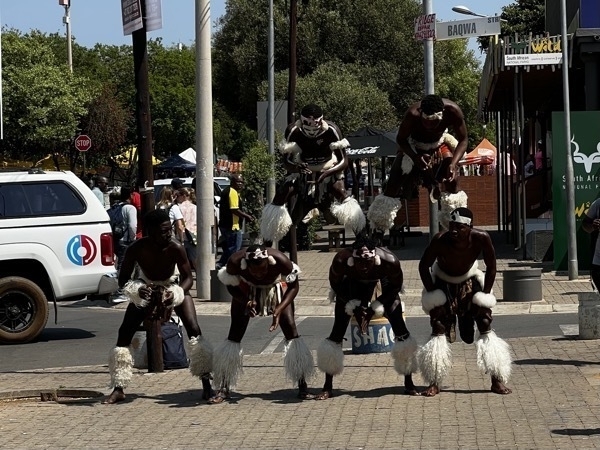
We were treated to several street dance performances as we walked along the street where Mandela once lived.
Hector Pieterson Memorial
Hector Pieterson was one of the youths that died in the protest against having Afrikaans as the medium of instruction in local schools. He was shot and killed by police when he was only 12 years old. The museum is named after him, but commemorates all of those who marched through Soweto and were shot at by police on June 16, 1976. That date has now become Youth Day, a public holiday in South Africa. He was immortalized by this photograph published across the globe by Sam Nzima, photographer at the time for The World newspaper in Johannesburg, The photograph shows Hector Pieterson being carried by Mbuyisa Makhubo after being shot by South African police. His sister, Antoinette Sithole runs beside them.
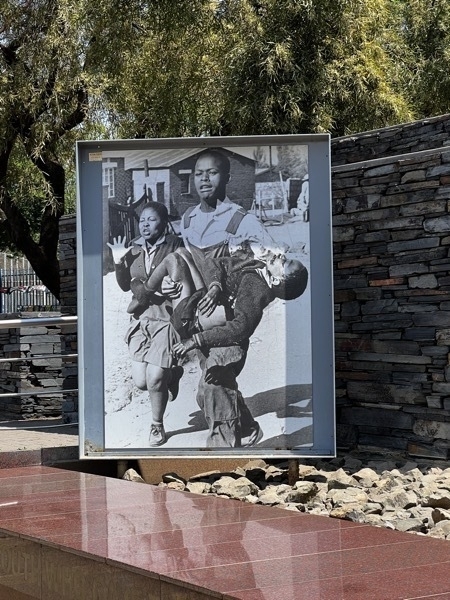
The Hector Pieterson Memorial and Museum opened in Soweto in 2002, not far from the spot where 12 year-old Hector was shot on the 16 June 1976 during the Soweto uprising that today is a symbol of resistance to the brutality of the apartheid government.
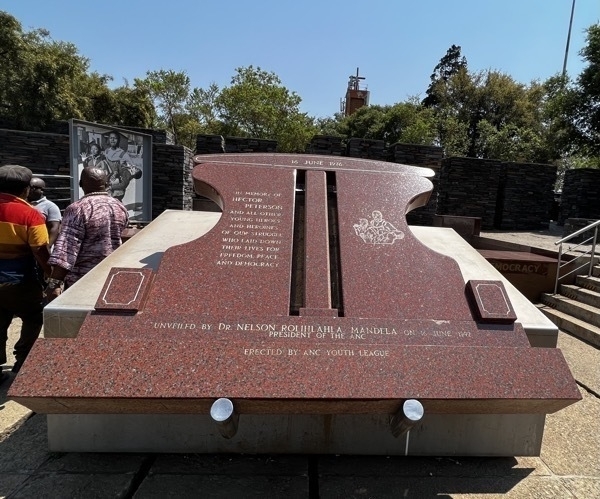
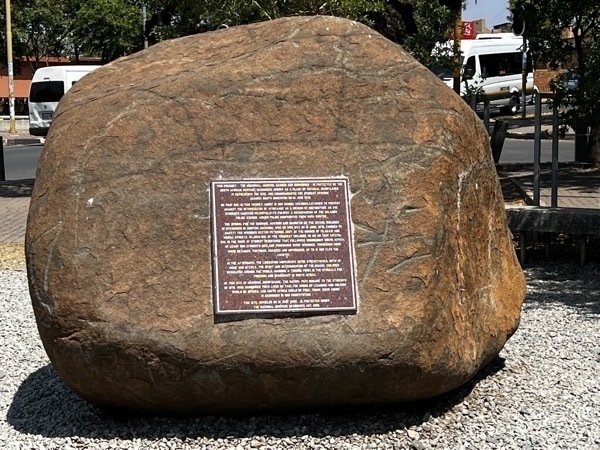
Although the museum was very interesting to tour, we arrived during that area of town having no electricity due to load shedding and were not able to watch the news clips on the video displays.
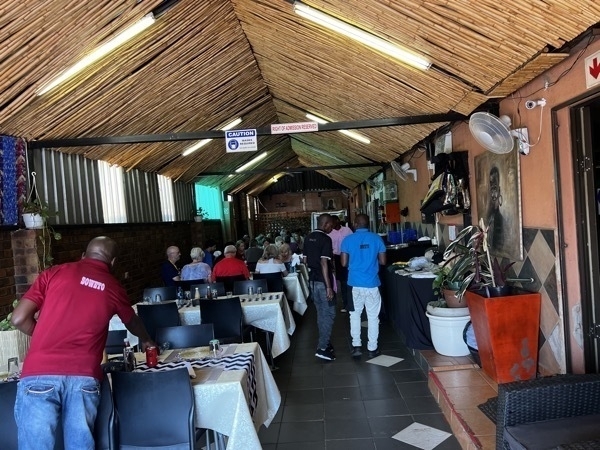
We were served lunch in this restaurant which is located in the owner's garage attached to the house located in the neighborhood shown below.
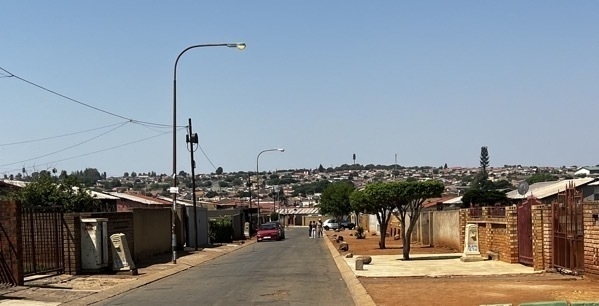
Load Shedding
The South African energy crisis is an ongoing period of widespread national level rolling blackouts as electricity supply falls behind electricity demand, threatening to destabilize the national power grid. It began in the later months of 2007 and continues to the present. Generally, areas are scheduled to be without power for two hours in the morning, two hours in the afternoon and two hours in the evening. These times rotate in different parts of the city.
-
Trip to South Africa
And we are off on our next adventure! This time it’s a three week trip to South Africa, Zimbabwe, and Botswana, We had so many immunizations : Hepatitis A (two of those), Hepatitis B (two of those), typhoid, Dtap, and malaria pills. (Plus, we both had the 3rd COVID booster and flu shot)
We boarded Turkish Airlines flight 34 in Houston at 8:50PM for a 12 hour flight to Istanbul where we had an 8.5 hour layover. The airport is huge and contains enough shops to be a mall and many food courts as well. We enjoyed the use of the NAP ZONE to take a nap and charge our electronics before boarding our 1:35AM flight to Johannesburg which took another 9 hour and 45 minutes.
l
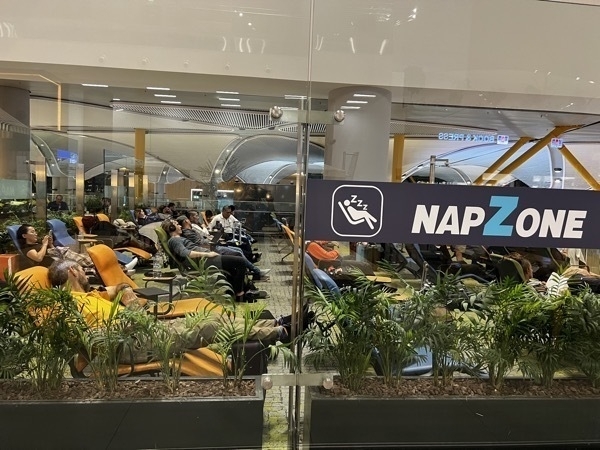
Tom is the one in the yellow shirt closest to the window taking a nap.
Johannesburg, South Africa
By the time we went through customs and got our luggage, it was noon on September 30. After a picture by these wooden elephants at the airport, we took the shuttle to our hotel.
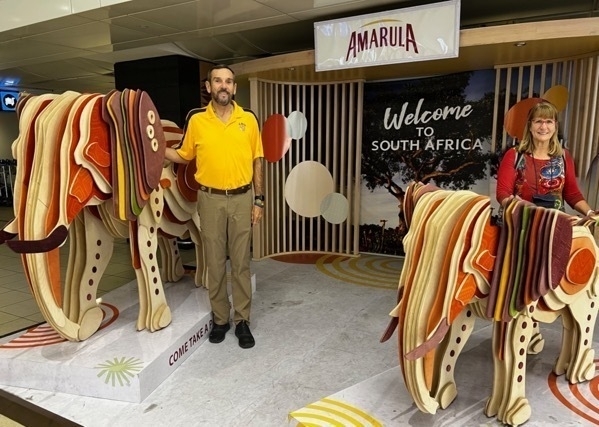
We are staying at the Houghton Hotel for the first two nights. Luckily, we were able to check in early and so we slept for about three hours before showering and eating dinner.
